The Bulletin

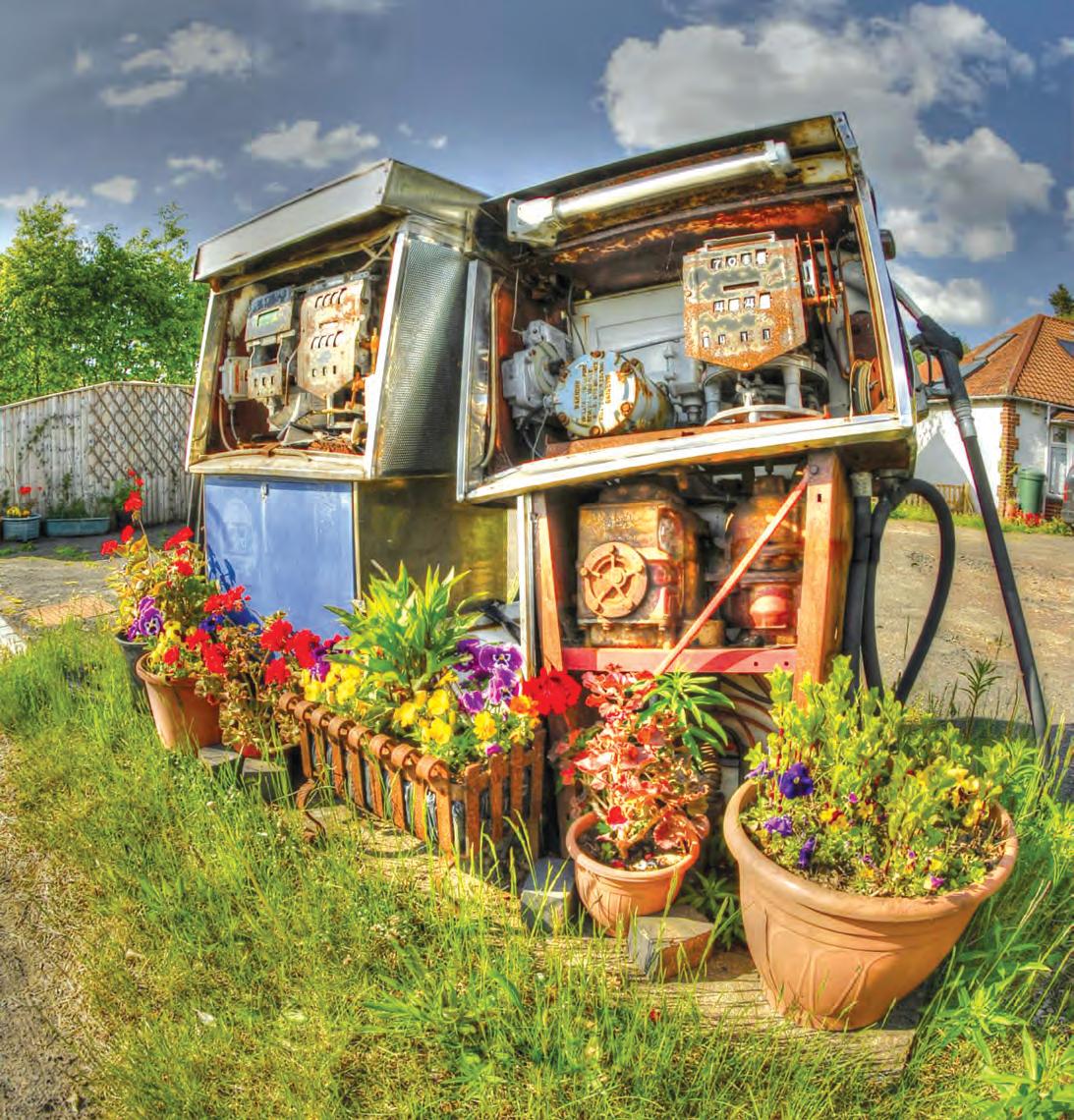
APEA (The Association for Petroleum and Explosives Administration) MAGAZINE - Dec 2022

Welcome
Front cover: Former attendant operated site in Morpeth, Northumberland, thanks to Kevin Gutherson for submitting
Opinions expressed in this magazine are not necessarily the views of the Association. The technical content is not an official endorsement by or on behalf of the APEA and are entirely the views of the authors.
APEA tel: 0345 603 5507 www.apea.org.uk
Inside Inside
3
4 6 8 10 10 14 18 19 20 25 27 32 35 39 42 46 52 64 74 78 80
Editorial Business Manager New Members Publications Information Articles
Environmentally Responsible EV Infrastructure Design
Extending
Published by the APEA (The Association for Petroleum and Explosives Administration) A company Limited by Guarantee Registered in England No. 2261660. News Press Releases Branches Training
The Need For
Petroleum Standards Ask the Experts TSG and Wayne Fueling Systems - Over 130 Years of Technological Innovation What Possibilities Exist with Prizma – the New Connected Mobility and Convenience Retail Hub from Dover Fueling Solutions The Electric Revolution is Here to Stay Switch to Electric and Mitigate the Impact of the Cost of Living Crisis TSG’s Service and Maintenance – Prevention and Cure Don’t Underestimate the Power of Training - Invest for Success Excitement Builds for APEA Live 2022 - Here’s Your Event Preview
your Forecourt Assets!
APEA Live 2022 Conference, Exhibition and Awards Dinner
4
Welcome
Once we have found those people the APEA is, of course, a great source of knowledge. Whether it’s keeping up-to-date with what is happening through the quarterly Bulletin or enrolling in one of our online or face-to-face training courses never mind the fantastic opportunity to come along to APEA Live and get the latest knowledge through our daytime conference program. And, of course, there are the local Branches who organize great meetings in your local area which are great for networking and finding out the latest developments.
Welcome to another edition of The Bulletin.
When I attended UNITI Expo this year I was reminded of what an amazing industry we work in. It was great to bump into people I hadn’t seen for years – just like I do at APEA Live! This was brought home to me again when an ex-colleague reached out for some advice on how to get back into our industry having needed to take a break from being in the “thick of it”.
When I moved into another industry for a couple of years I “assumed” no one would have noticed my absence. I couldn’t have been more wrong! The way in which I was greeted when I returned said it all to me. I had been drawn to return to the petroleum industry and if I had any doubts they were quickly blown away. I hope my ex-colleague will be as reassured as I am that they have made the right decision in following the siren’s call that draws us back to the rocky world of the fueling industry. If you know anyone who wants to join, or return to, our industry then let’s see what we can do to encourage them.
Writing the answers to my June interview with Brian Humm also returned me to thinking about the number of times I have been asked to “champion” women in engineering or women in industry or, it seems, just women in general. My response is always “We don’t need women in engineering we need people in engineering who want to do the job”.
APEA Business Manager
(contact for all APEA Business and Bulletin advertising, design and typesetting)
Jane Mardell
APEA, PO Box 106
Saffron Walden, Essex CB11 3XT
Tel: +44 (0) 345 603 5507 Mobile: +44 (0) 7815 055514 email: admin@apea.org.uk
Find us on Linkedin and Twitter


If you want people to know what your company is doing, to be excited about our industry and be interested in joining your business you could do a lot worse than advertising with us and writing interesting articles for Brian to publish. Recruitment is tough. Let people see what you have to offer them if they are looking for an exciting new role. Advertising is not just about selling your wares to customers it’s also about selling yourselves to your future employees.
As usual this issue of The Bulletin is sent out before APEA Live and includes a report from Alex Boudry the Events Committee Chairman on page 42, which I hope you will find informative and I hope to see as many of you there as possible. As I mentioned in the last edition, we are offering a light lunchtime snack to attendees of the AGM. We hope this will help members to fit everything into their day – AGM, exhibition and what promises to be an exciting conference program.
Alongside this the Events team have also introduced “Fuel for Thought” – a breakout area where exhibitors have been invited to provide some more in-depth information about their products. We hope you will find this interesting and informative.
Although a little early I would like to wish all of our Bulletin readers a very merry festive season and a healthy and prosperous 2023 from all of us on the National Council.
Publications Chairman

Andy Kennedy
Mobile: 07469 212063 email: andykennedy@apea.org.uk
Editor
Brian Humm
Mobile: +44 (0) 7507 478533 email: b.humm@outlook.com
Doreen Pooley APEA Chairman Welcome
APEA tel: 0345 603 5507 www.apea.org.uk

Editorial
Brian Humm Editor
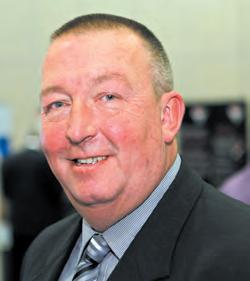
Hello and welcome to this brand-new edition of the APEA Bulletin magazine. Once again we have put together some very informative and interesting articles, latest news throughout the world and the latest press releases from far afield. Hopefully all our members will enjoy reading the copy we have produced but I would like everyone to think for a minute, ‘where did all this come from?’ It’s from members, that’s right. Without the input from members we certainly wouldn’t have the amazing publication that has dropped through your letter box today, or you have opened that PDF, and that you are currently enjoying reading.
It doesn’t take long to submit anything, just a quick email, I will always help with composition etc. if needed. Also please don’t forget that I have previously offered to write any article for companies if required. That offer still stands, even if it means a visit to your premises. If you feel like you could contribute at all just drop me a line. We are extremely lucky to have members such as Jamie Thompson, Technical committee chairman, a regular contributor and supplier of many a good article. Please consider this plea for the next editions, we are often short, and it becomes a last-minute scramble to get enough to go to print, copy deadline dates can be found on page 12.
The installation and advertising of electric vehicles continues apace. One thing recently though is the emergence of more “industry talk” of hydrogen fuelling facilities. Having been involved with Shell Oil UK Limited, in my days of being a regulator and a Primary Authority, and the introduction of hydrogen at the Cobham M25 services, I believe that hydrogen will become the fuel of the future. Other oil companies are now talking about its possible introduction; motor manufacturers, mindful of government directives on the abolition of fossil fuelled vehicles, are now developing hydrogen powered models. Watch this space - if you are curious about hydrogen as a fuel on a petrol filling station within the UK then there is free (if you are a member) guidance available as a PDF download from the APEA website, a document titled ‘Guidance on hydrogen delivery systems for
refuelling of motor vehicles, co-located with petrol filling stations’. Speaking of guidance, rumours are circulating regarding the review and production of the Blue Book. The review is expected to start sometime in the new year and is likely to take some time, with industry experts meeting on the various topics within the publication and reviewing the guidance already within, and updating it, if required, to current standards and techniques.
A very valuable tool to have in all offices that are involved within our industry, being contractors or enforcers, just a little hint but it is probably worthwhile keeping your Association membership up to date prior to the 5th version being launched. I will keep members informed in The Bulletin going forward.
During my day job, and, yes, I do have one, I look regularly at risk assessments and method statements (RAMS) for various tasks on petrol forecourts. The differing type and level of information is staggering, in my opinion. What you have to remember is that these documents are a legal requirement, under various legislation, DSEAR being a prominent one in the forecourt world. Also if your RAMS dictate that control measures are required then the person undertaking the designated task should ensure that the control has been introduced prior to the start of the task; be mindful that they exist for the safety of the person and others that may be affected by any incident that may occur. Remember, you could be in a courtroom and explaining what occurred and why, something that people should understand; that it is their responsibility and a legal requirement.
Whilst writing this, APEA Live 2022 is coming up soon. As usual one of the go-to events within our industry, always very well attended and with excellent speakers on hand at the conference. I am proud to be associated with this event. We certainly have come a long way from the days of the EXCEL exhibition centre in London; now we have a slick, professional event that flows and f2f events, the company responsible for the event, has even been nominated for an award for APEA Live 2022. Good luck to all the guys and gals at f2f, fingers crossed.
In regard to APEA Live 2022, there will be a separate publication covering the awards including the photographs and reports on the day and evening, which will be coming to all members in December; a great souvenir of the event and certainly a showcase for how good this event is.
Must dash now, but before I go I would like to thank a few people, obviously Jane, who carries out the production and makes this publication appear on time and Jamie, who once again stepped up and helped out in his normal fashion. Until next time…
6
www.apea.org.uk Editorial
APEA tel: 0345 603 5507
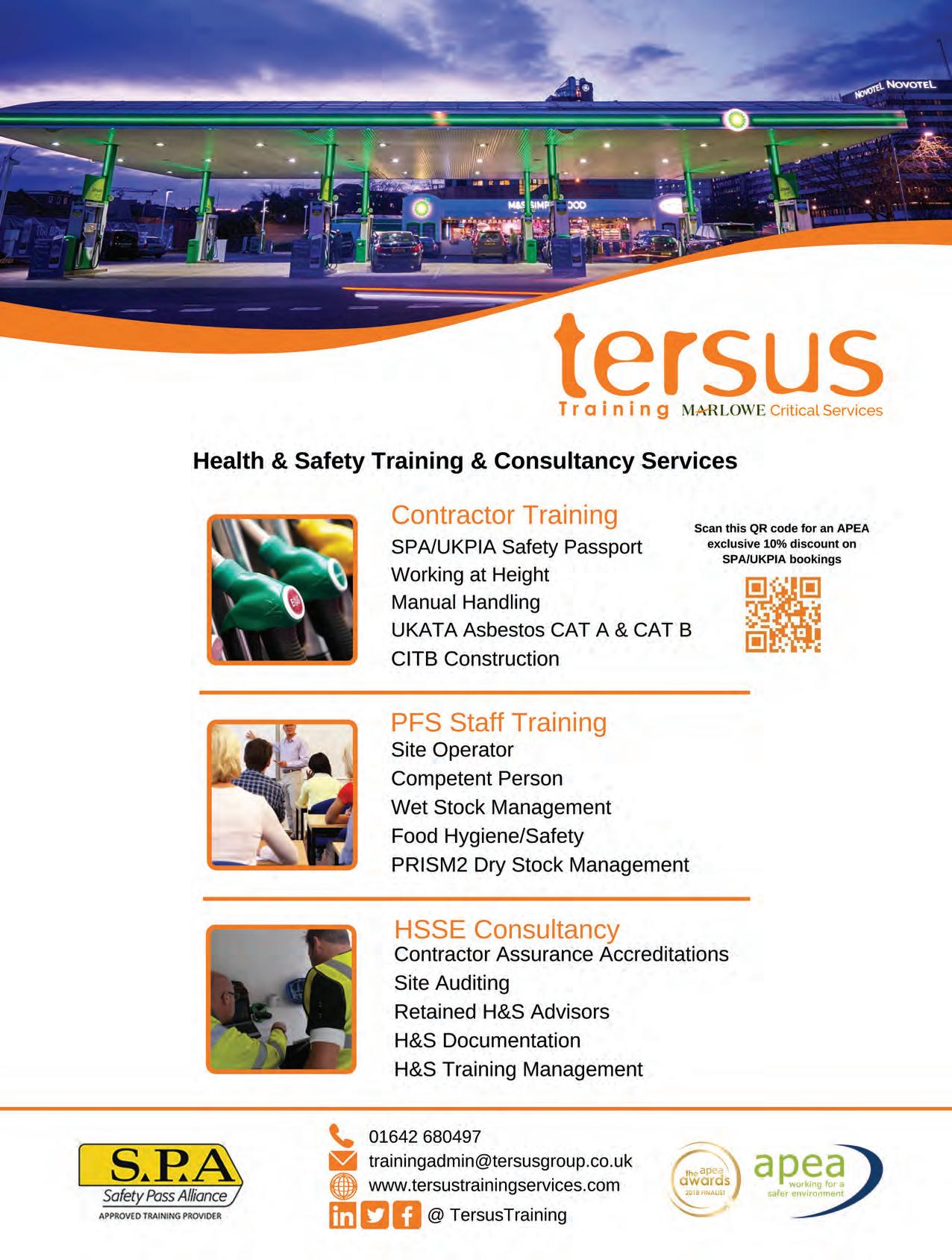
Business Manager
date live on the website. There will be a deadline date in May of each year when I will use this information for the printed version.
Membership information/Your membership account
Please go to your membership account at www.apea.org.uk where you can do the following:
•Download a membership certificate in pdf format
•View previous purchases and invoices
Jane Mardell Business Manager

I hope you all managed to have a break over the summer/autumn period, I had sometime away in Crete. I have sailed a lot around the Greek islands but never been to Crete, so beautiful.
APEA Live 2022
Not long now until APEA Live Conference, Exhibition and Awards Dinner on 17th November at Stadium MK. I hope those of you attending enjoy the day/evening. For details go to page 80 of this issue and there is a report from Alex Boudry on page 42.
The Bulletin
We are always looking for press releases and articles for The Bulletin. If you have anything you think would interest our readers, please email it to me at admin@apea.org.uk and I will forward it to the editor, Brian Humm to approve.
Bulletin advertisers can benefit from submitting multiple press releases and articles for free so if this interests you please look at how to advertise on page 12.
Bulletin - 2023 Advertising
I am currently taking bookings for advertising in the 2023 issues of The Bulletin. All current advertisers have been contacted and invited to renew their bookings. If you wish to secure the best position for your advertisement, please email me as soon as possible, as all bookings are on a first come first served basis. All artwork should be emailed to me by 9th January. More information about advertising can be found on page 12.
2023/2024 Yearbook
You should have all received your 2023 Yearbooks. They were sent out mid-October, so if you have not received your copy please email me at admin@apea.org.uk and I will follow this up.
I will be starting work on the 2024 Yearbook in February. Instructions will be sent to members on how to be included with the March Bulletin and sent by email so please make sure your email address is up to date by logging onto your membership record at www.apea.org.uk.
The website enables you to update your Yearbook profile at any time of the year so you can keep your contact information up to
•Change your membership
•Change your email address, contact details and password
•Change your Yearbook entry
•View your downloads
Due to new SCA regulations that came into effect on the 14th March 2022, we are unable to process APEA Membership auto renewals for this year and require that you navigate to the Join APEA page on the APEA website, log in to your account and create a new subscription of your choice.
Our website development company called Mota have been notifying members due for membership renewal individually about this process since 14th March 2021. The auto renew system will work normally one year on from the last payment you made after 2021.
Electric Vehicle Charging Installations at Filling Stations
This publication is available to purchase from the website in hardcopy or pdf format. Please go to page 12 for more information and the publications page on the website at www.apea.org.uk.
Training Courses
All training courses can be viewed and booked on the APEA website at www.apea.org.uk. If you are interested in booking a bespoke training course please email Tom Daly (Chairman of Training Committee) at thomasdaly@apea.org.uk.
Online training courses
Please go to the training page on the APEA website at www.apea.org.uk or go to: https://apea.org.uk/pages/training or https://apea.mykademy.com/
New Members
There have been 27 new members joining during July, August and September and details can be found on page 10.
General Assistance
If you need any assistance with general or technical matters, please do not hesitate to contact me at admin@apea.org.uk or on 0345 603 5507. There is comprehensive contact information on the APEA website too at www.apea.org.uk.
Best wishes
Jane
APEA tel: 0345 603 5507 www.apea.org.uk
8
Business Manager
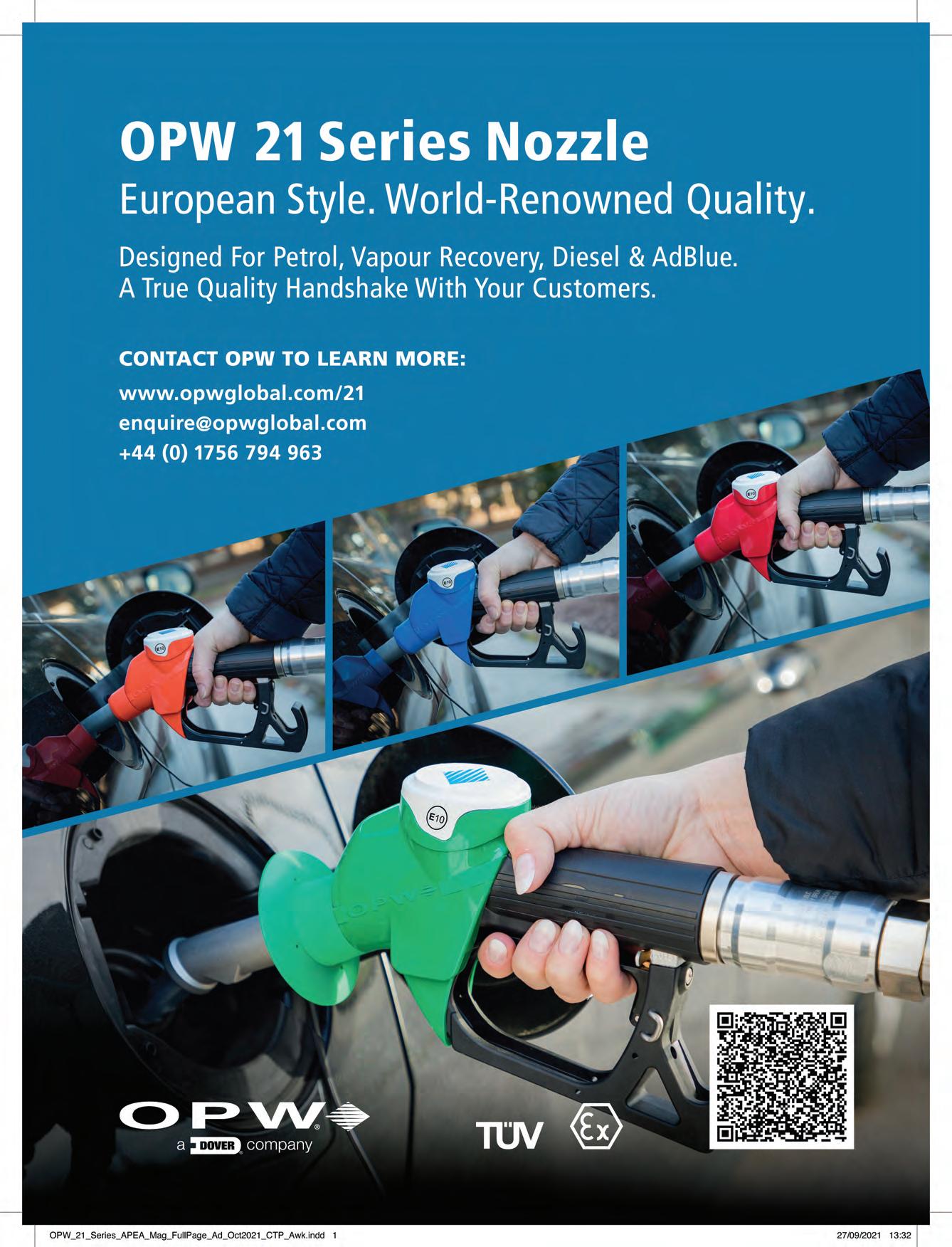
New Members (July - September)
Corporate Membership
Gary Hall
GEN II Training Limited
Nicholas Tribble Tesco
Eileen McArdle McArdle Doyle LTD
Carl Pike Cable Glands UK Ltd
Individual Membership
Mark Rosling Longridge Consulting Ltd
Keith Moss Certsure Daniel Hutton
Antony Bell Norfolk Fire and Rescue Service Richard D. Curnow
R.D. & R.E. Curnow Ltd
Alex Mills
Paul Mills Electrical Services Ltd
Rajinder Mann RBWM
Blake Edwards
Daci Utillities Engineering Consultancy LTD
Trevor Allsopp
Peter Rixson
Cheshunt Electrical Solution Ltd
Noel Doyle Scott Bisset Clyde Training Solutions
Claire Platts South Yorkshire Fire and Rescue
Deirdre Hazley Dublin Fire Brigade
Omar Jamali
Tom Newton Leicestershire County Council
James Hayfield RS Sales & Distribution Ltd
Andy Murray Dundee City Council
David Kettle McArdle Doyle Ltd
James Kay Motor Fuel Group
Retired Membership Kevin Castledine Castledine Environmental
Wafir Al-Ghabban CEEMA Ltd
John Rome Forecourt Consultancy Limited
Publications Information
ISBN
Price for hard copy
APEA Member rate - £75
Non APEA Member rate - £150
Price for pdf version (please note the pdf version is licensed to the purchaser only and cannot be shared or printed)
APEA Member rate - £75
Non APEA Member rate - pdf £150
If you wish to purchase the guide please go to the APEA website at www.apea.org.uk and click on the “Publications” page. You can select to pay by credit/debit card.
The APEA also publishes the Code of Practice for Ground floor, multi storey and underground car parks. This can be downloaded directly from the APEA website and is available to members at £11.00 and £21.00 to non APEA members.
APEA tel: 0345 603 5507 www.apea.org.uk

10
of the Guidance for Design, Construction, Modification, Maintenance and Decommissioning of Filling
4th Edition
Stations“Blue Book” (Revised 2018)
978 0 85293 888 1
New Members/Publications Information
Electric Vehicle Charging Installations at Filling Stations
Price for hard copy
APEA Member rate - £32.50
Non APEA Member rate - £50
Price for pdf version (please note the pdf version is licensed to the purchaser only and cannot be shared or printed)
APEA Member rate - £32.50
Non APEA Member rate - pdf £50
This Code of Practice is an authoritative guide to all installations of electric vehicle charging equipment. It has been updated in line with recent changes in BS 7671 (IET Wiring Regulations) and reflects some major developments in this area including vehicle to grid, smart integration and inductive charging.

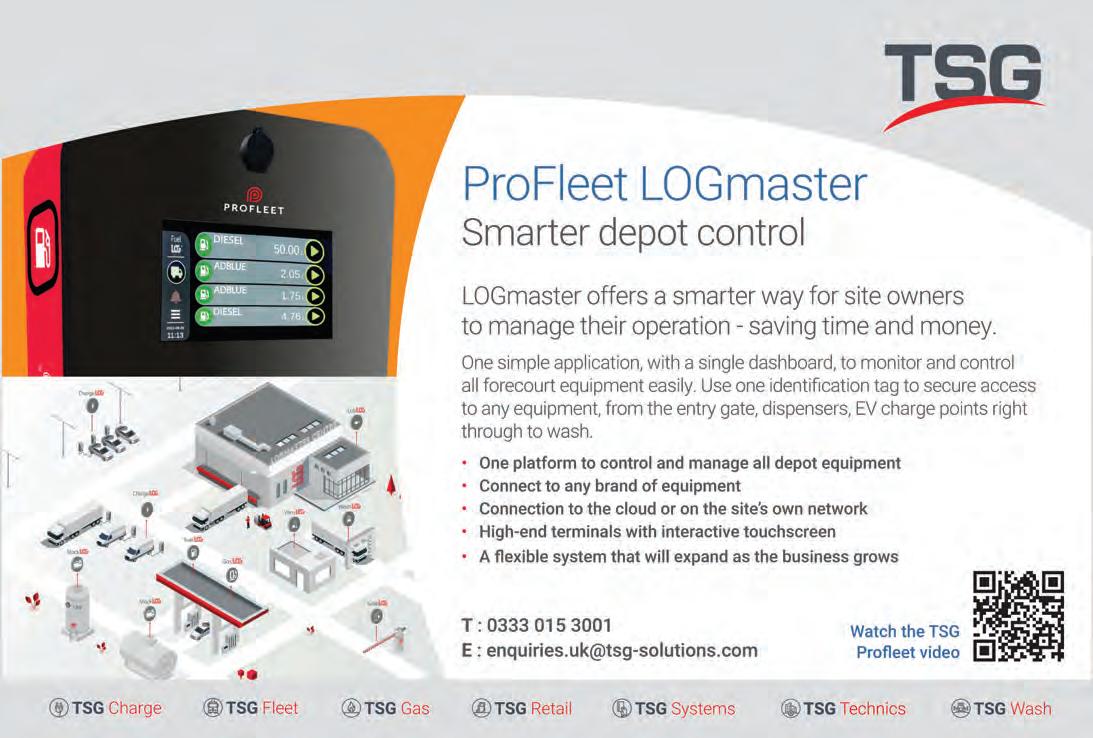
As part of the rapid growth and development of the whole electric vehicle charging infrastructure, filling stations are seen as an obvious place to provide charging facilities. However, it is recognised that difficult safety and logistical issues are linked to such installations.
When the 4th Edition of the Code of Practice for Electric Vehicle Charging Equipment Installation was published, significant technical discussions were still underway about this area to help finalise and clarify the safety issues that needed to be addressed. The work behind these meetings was led by APEA (the Association for Petroleum and Explosives Administration) who represent the major stakeholders in this sector. APEA and the IET are therefore now issuing this joint publication to help provide important guidance in this area.
ISBN-13: 978-1-83953-315-0 Publication Year: 2020 Pages: 30
APEA tel: 0345 603 5507 www.apea.org.uk
11
Publications Information
Publications Information
About The Bulletin and how you can submit copy to be included
•The Bulletin is published four times a year with a print run of 2200
•Free issue to APEA members (approx 1200 members worldwide)
•Has international distribution and readership
•Respected source of industry specific news and information
•Contains relevant articles, news items, press releases and reports from UK and overseas
•Individual, Fellow and Retired members receive one copy each and Corporate members receive 5 copies each per quarter
The editor of The Bulletin, Brian Humm, is always on the look out for new material, so if you have something you want to be included, please email it to the APEA office at admin@apea.org.uk and it will be forwarded to Brian for approval.
Please email the text in Word format and any images as separate high resolution pdf or jpeg files to admin@apea.org.uk.
We are always pleased to receive contributions from our members and it ensures that The Bulletin remains an interesting and informative read.
Priority is given for press releases and articles submitted by Bulletin advertisers to be included.
Deadline dates for copy and advertising artwork 2022/2023
Issue Copy deadline date
Posting date
March 2023 9th January 17th February
June 2023 27th March 5th May
Sept 2023 3rd July 11th August
Dec 2023 25th September 3rd November
Please note the deadline date for the March 2023 issue is early due to Christmas and New Year holidays.
Bulletin Advertising
If you would like to book advertising in The Bulletin, please email your requirements to admin@apea.org.uk or call the office on 0345 603 5507. Please ensure you send your artwork to admin@apea.org.uk.
Priority is given for press releases and articles submitted by Bulletin advertisers to be included.
Discounts are available for booking in more than one issue, please contact Jane Mardell at admin@apea.org.uk for more information.
Bulletin advertisers that book in 3 or more issues in one year also receive a 50% discount off rates for advertising in the annual Yearbook, see table below.
Size of advert (all rates exclude VAT)
Full page (210mmw x 280mmh with 10mm border or with 3mm bleed)
Advert fee in 1 issue
Advert fee in 4 issues (includes 25% disc
£498.00 £1494.00
½ page (185mmw x 125mmh) £249.00 £747.00
¼ page (90mmw x 120mmh) £125.00 £375.00
APEA tel: 0345 603 5507 www.apea.org.uk
12
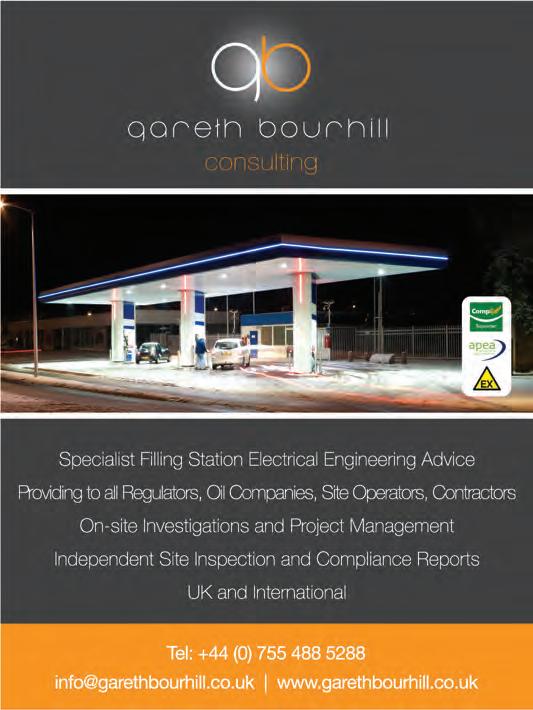

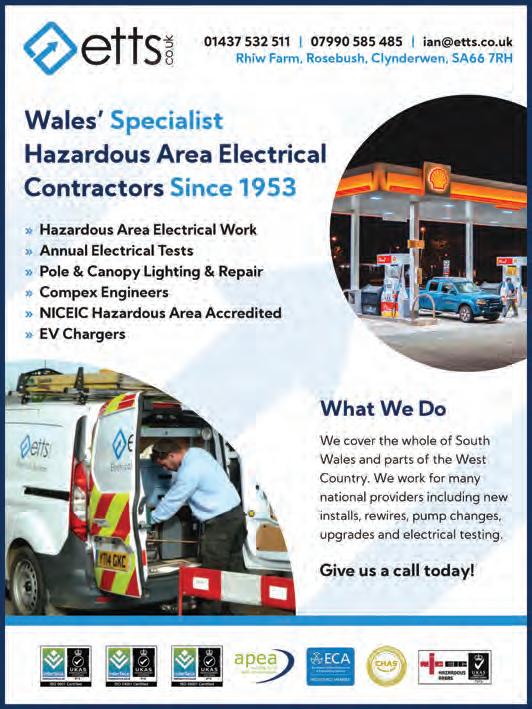
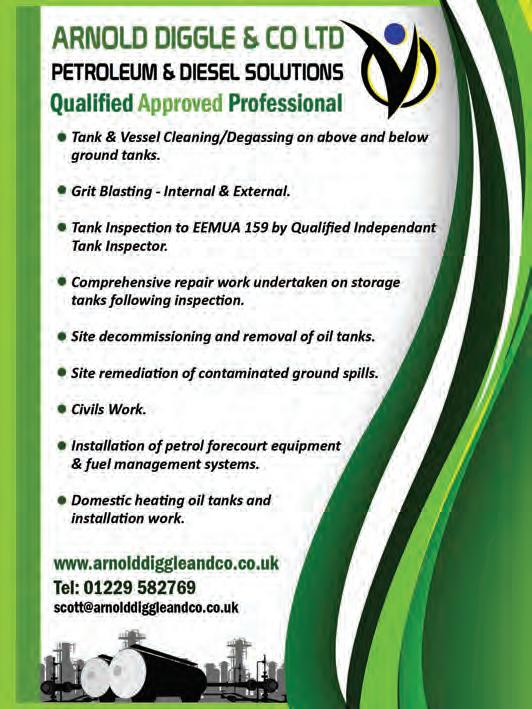
Articles
The Need For Environmentally Responsible EV Infrastructure Design
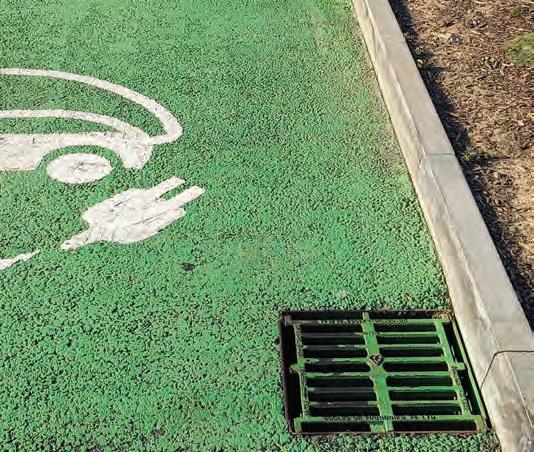 By Graeme Warnell, GW Environmental & Consulting Ltd
By Graeme Warnell, GW Environmental & Consulting Ltd
Water and air quality are at the forefront of the world’s most pressing environmental issues. Moving to alternative energy in the vehicle sector is helping the world to slowly progress to its carbon reduction goals. Whilst we tend to focus on the upside of new technology, we have to take into consideration any negative environmental impact or risk that may increase over time.
UK EV charging infrastructure will receive over £1bn in investment over the next 10 years and it is estimated that EV numbers will reach 7.9m in the UK by 2031.
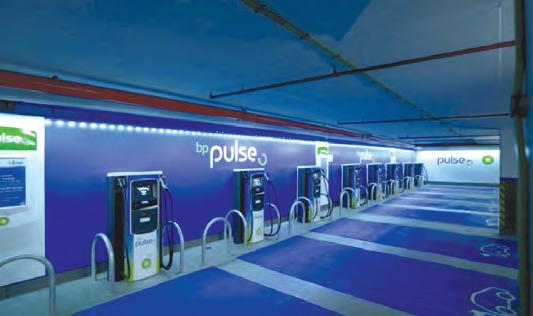
At the moment the majority of EV infrastructure is relatively new and in good condition. But what does this infrastructure look like in 10 years’ and how does it stand the test of intensive customer usage? Luckily, EV fires are very rare, however much of this is due to the age profile of both EV’s and the associated infrastructure and a relatively low density of EV cars on the roads.
As EV car numbers increase over time, so does the risk of incidents resulting in EV fires. Given this possibility, have we designed the EV infrastructure to sufficiently protect both the public and the environment?
As time progresses, wear and tear on EV’s will increase. Minor road traffic accidents, driving over potholes and road debris impacting the underside of EV’s can all result in damage to a single cell of an EV battery which remains unseen and undetected.
In addition to the above, the consumer’s ongoing desire for ever faster charging means more strain is put on the EV battery with each charge, and with time, cheaper, lower quality charging cables will become more prevalent on the market.
If we look at all these factors together there is no doubt that we will see more incidents of thermal runaway from batteries resulting in EV fires in and around roads, driveways, public parking areas and on forecourts or standalone EV charging hubs.
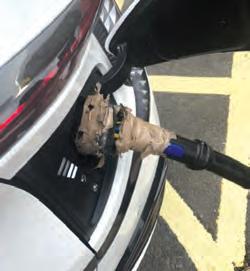
So, what is the real difference between an EV related fire and a typical internal combustion engine fire in terms of what is consists of, how it is supressed and what public health and environmental risks they create?
Firstly, an EV lithium-ion battery fire is far hotter than a typical ICE fire. The EV will burn at around 1200 degrees celsius and an ICE vehicle at 600 degrees. This means the impact of the fire on the adjacent cars, canopies and charging infrastructure is more far reaching and can lead to a quicker ignition of objects in the surrounding area. An EV fire will frequently create large direction flames known as “jetting”. These can extend outwards of the fire for up to 3m in a manner that somewhat resembles a very large blow torch.
Another factor to consider is the emittance of an explosive gas cloud which is often preceeded by a loud hissing sound.
During an EV fire there will also
14 APEA tel: 0345 603 5507 www.apea.org.uk Articles
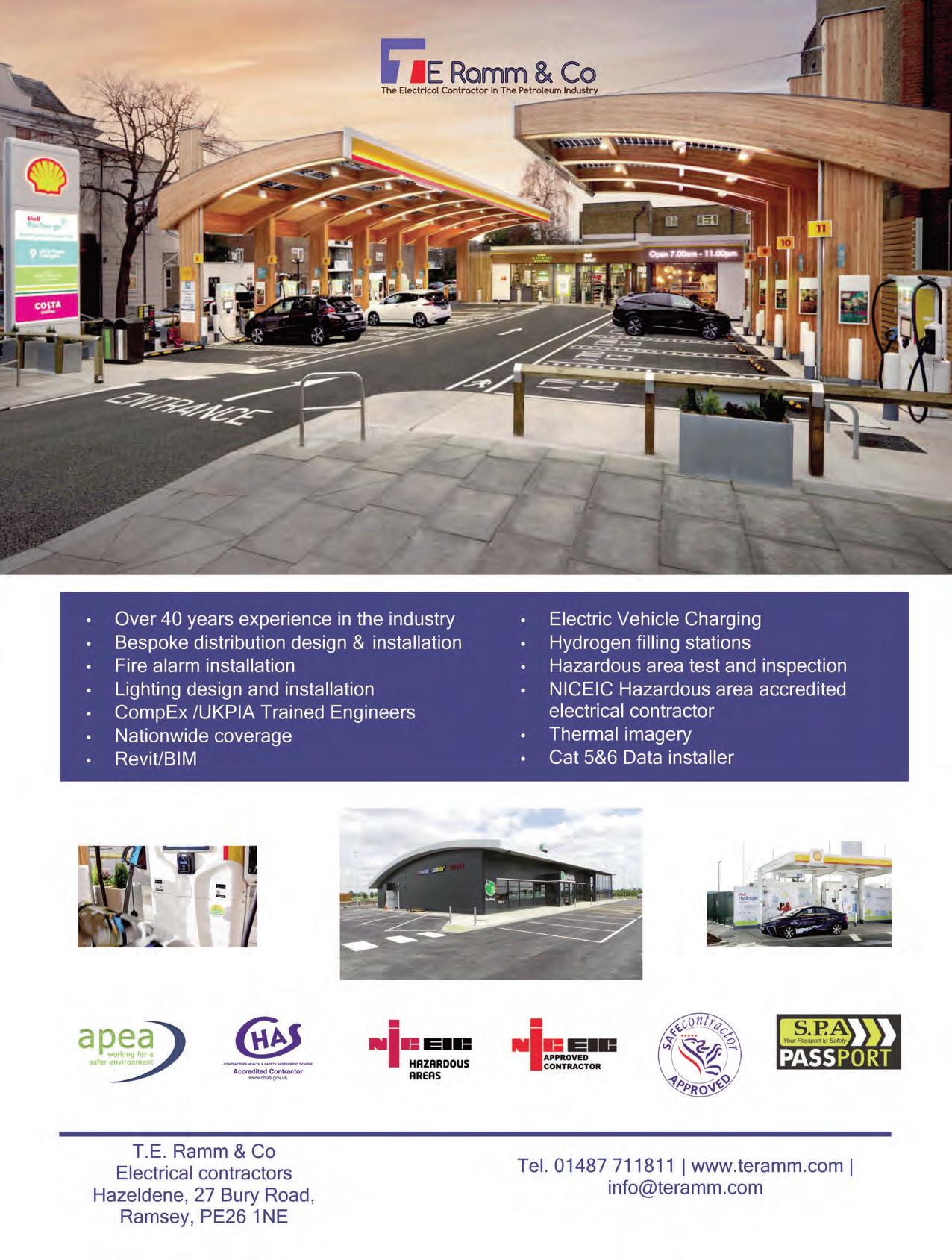
be significant volume of both smoke and soot emitted, both of which are highly toxic and potentially fatal. The smoke will contain both carbon monoxide and hydrogen cyanide whilst the soot will contain heavy metal particulates such as cobalt, nickel and manganese oxides. These toxic oxides can cause severe allergic skin reactions so great care needs to be undertaken in any post fire clean-up operation which may extend well outside of the EV facility itself.
As a result of all these properties of EV fires it is clear that there is a significant risk to anyone trying to tackle them who is not
fed sprinkler system has no effect on extinguishing the lithium-ion battery which simply burned itself out over time.
At present there are a vast array of challenges for the emergency services in dealing with EV fires and the most common approach is based on trying to cool the battery to stop the thermal runaway and therefore stop the fire.

This is of course far easier said than done. EV batteries are difficult to access being mostly installed underneath the car and by design they are supposed to be waterproof. Depending on how quickly the fire catches hold and potentially spreads, other vehicles or infrastructure may inhibit any clear access to try and cool the battery.
It has been estimated that over 10,000 litres of water are required to sufficiently cool an EV battery fire to the point of stopping thermal runaway and supressing the fire, although the risk or reignition is possible for days afterwards with a badly damaged battery.
wearing and trained in the use of protective breathing apparatus and flame-retardant clothing. Whereas a member of the public may be confident enough to empty a sand bucket onto a liquid fuel spill or discharge a carbon dioxide fire extinguisher for an ICE car fire they should never attempt to deal with an EV fire themselves.
The risk to the public is significantly increased should the EV fire occur in a basement or multi storey carpark. The Swiss Federal Laboratories for Materials Science and Technology recently undertook a number of studies on lithium-ion battery fires in a road tunnel environment. They discovered that the high volumes of smoke and soot density soon rendered visibility within the tunnel down to less than 0.5m. In a basement or multi storey carpark the reduction in visibility will severely reduce the ability of people to locate the emergency exits safely. The confined concentrations of toxic smoke and soot make any basement or carpark charging facility extremely hazardous for not only the public trapped in the area but also for firefighters trying to locate the fire.
Consideration must also be given to the location of EV chargers in relation to allocated disabled and parent child parking where people may be less able to react quickly to evacuate the area safely. This leads me to ask should we not be installing smoke extraction units specifically designed for EV fires in basements and underground carparks?
In terms of the actual fire itself, studies by the University of Newcastle demonstrated that the extreme heat intensity of lithium-ion batteries could also result in a structural weakening of concrete and other common construction materials. Are the basements and multi storey car parks, where EV charging poles are now being installed, designed for these new fire risks and are the current fire suppression systems still fit for purpose?
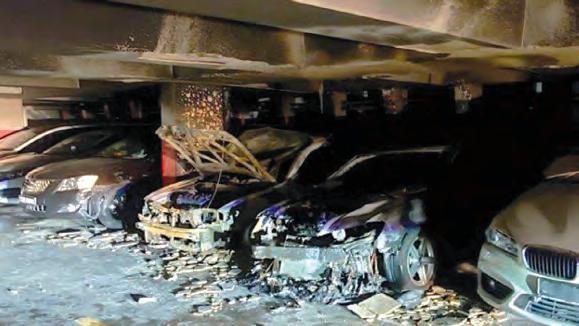
In terms of multi storey and basement carpark fire suppression systems, current sprinkler systems will have little impact on an EV fire. These were also tested by the Swiss Federal Laboratories for Materials Science and Technology who found that the typical water
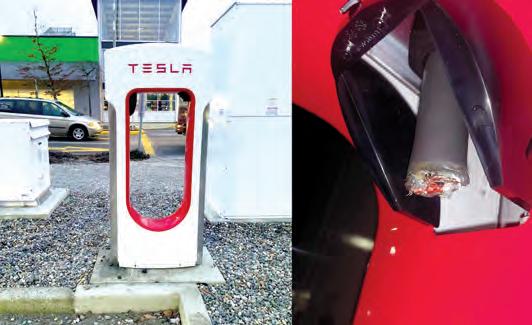
Like the toxicity issues contained within the smoke and soot, any firewater will be highly contaminated with over 100 organics, chemicals and a range of toxic heavy metals. When the Swiss Federal Laboratories for Materials Science and Technology carried out an analysis of firewater used to extinguish a lithium-ion battery fire they found it contained a level of toxins and chemicals 70100 times greater than the levels allow in the discharge of industrial water. They stated, “under no circumstances should this water ever be allowed to enter the sewer system or natural environment”.
Whenever I go to an EV charging facility I always make a note of where the drainage is and, every time, I see everything flows to
16 APEA tel: 0345 603 5507 www.apea.org.uk Articles
rainwater storm drains and in many cases on motorway service areas into balancing ponds. When the emergency services attend their priority will be public safety in terms of evacuation and then restricting public access to the area and then extinguishing the fire. It is not the responsibility of the emergency services to ensure contaminated fire water does not lead to a contamination event; this is the site operator’s responsibility under law.
Having spent over 30 years working in the retail petroleum sector I remember the 3 golden rules we always had regarding petrol filling stations were:
1.No harm to the environment
2.No risk of fire or explosion
3.No harm to the public
When we built and maintained petrol filling stations all these factors were reduced to the lowest possible level through design risk management. In the event of an incident physical means of protecting the environment and public were always in place.
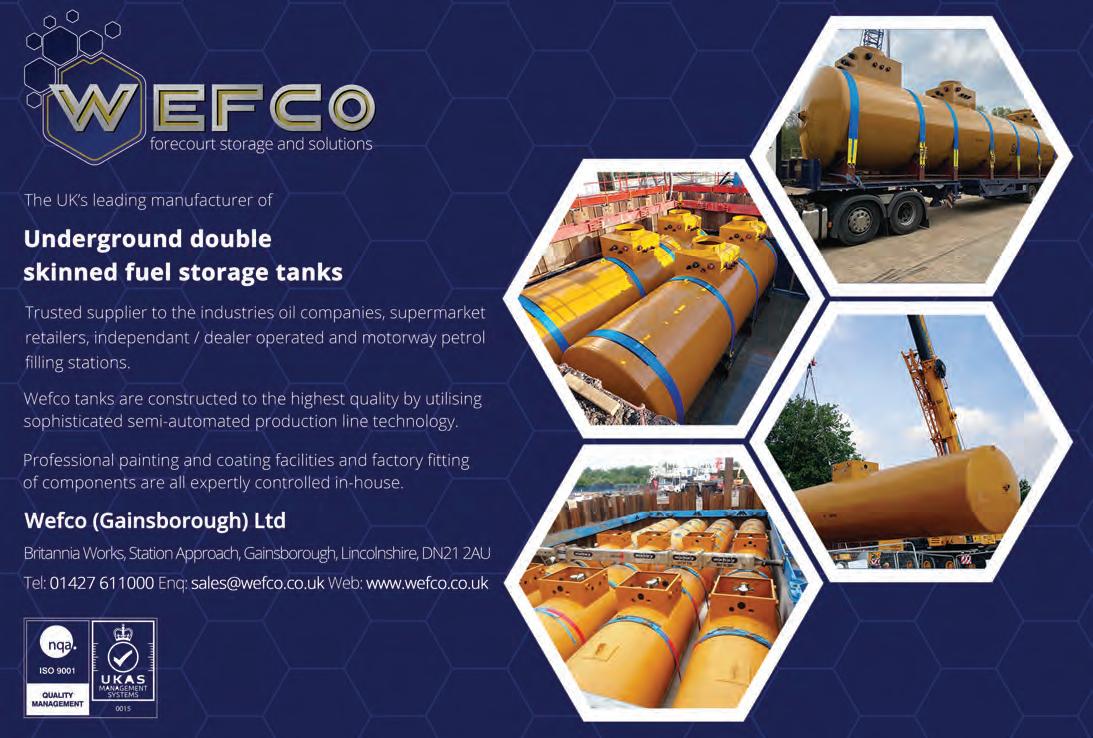
For me not much has changed in terms of the 3 biggest risks on an EV charging facility in terms of environmental contamination, fire or explosion and public safety but I see nothing included in EV infrastructure design to mitigate these risks. I find this very hard to understand as in many cases we are talking about the same industry that operates hydrocarbon sites and EV sites; why are the same principles of risk management not applied to both?
From what we know about EV fires as an industry, we must ensure that the potential risks of EV fires are included in EV infrastructure design. At present EV fires are thankfully few and far between. However, when we have an estimated 7.9m cars on the road in the UK using infrastructure reaching back over 15 years we can certainly expect fire related issues to occur which increase the risk to public health, safety and the integrity of the environment.
For any operators or local authorities interested in understanding the risks associated with existing or planned EV charging locations please do not hesitate to reach out to Graeme Warnell at info@gwenvironmentalconsulting.com. We are currently working with a range of like-minded industry experts across the UK and Europe to ensure the transition to EV upholds its planned legacy to deliver a clean alternative to hydrocarbons that is safe for everyone and the environment for decades to come.
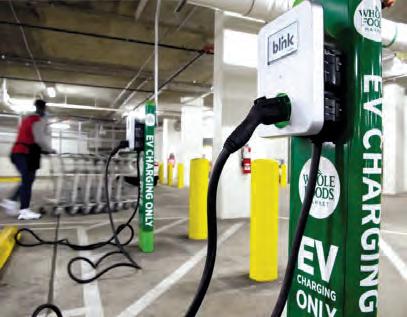
17 APEA tel: 0345 603 5507 www.apea.org.uk Articles
Petroleum Standards
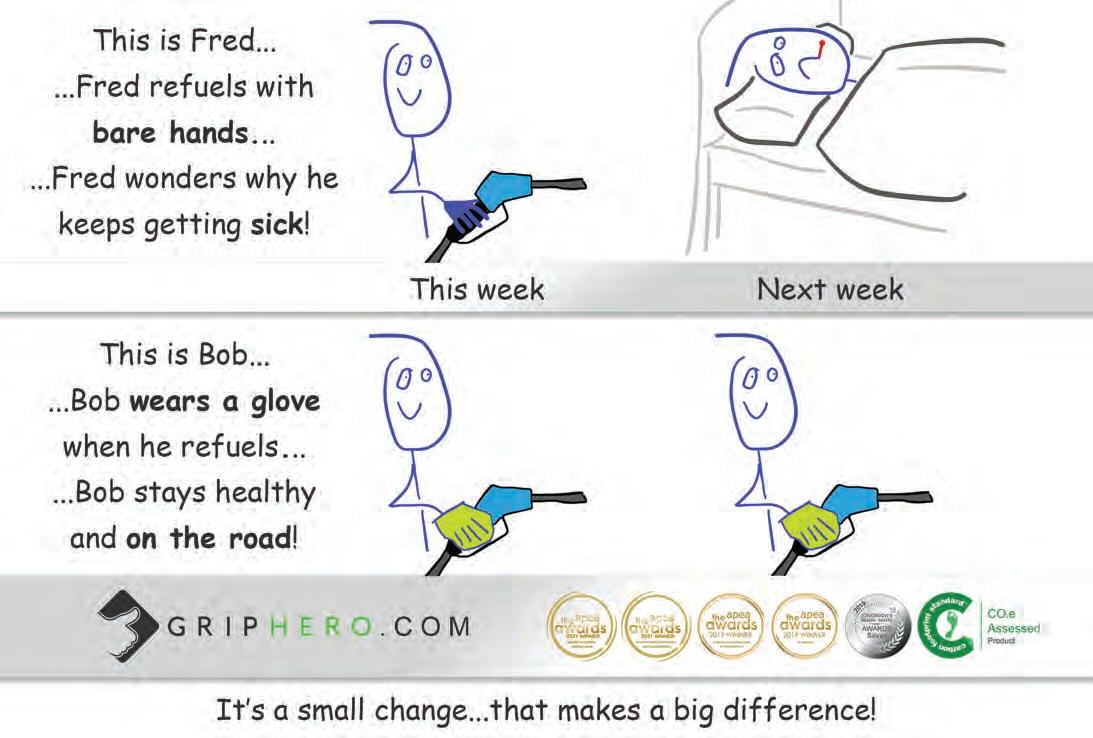 By Jamie Thompson, APEA Technical Chairman
By Jamie Thompson, APEA Technical Chairman
As of 27th September the following standards in CEN/TC 393, the Equipment for Storage tanks and filling stations, the committee’s portfolio have gone through the internal checking process of BEIS OPSS and are currently on GOV.UK as notices of proposal to designate:
References to standards for equipment and protective systems intended for use in potentially explosive atmospheres in support of the Equipment and Protective Systems Intended for Use in Potentially Explosive Atmospheres Regulations 2016 (S.I. 2016/1107)
1) EN 13012:2021
Petrol filling stations –Construction and performance of automatic nozzles for use on fuel dispensers
2) EN 13617-1:2021
Petrol filling stations – Part 1: Safety requirements for
construction and performance of metering pumps, dispensers and remote pumping units
3) EN 13617-3:2021
Petrol filling stations –Part 3: Safety requirements for construction and performance of shear valves
4) EN 13617-4:2021
Petrol filling stations – Part 4: Safety requirements for construction and performance of swivels for use on metering pumps and dispensers
Please note that these will be designated after 28 days have elapsed - scheduled for 26 October 2022. A designated standard is a standard, developed by consensus, which is recognised by government in part or in full as supporting CA Marking Regulations by publishing its reference on GOV.UK in a formal notice of publication.
18
www.apea.org.uk Articles
APEA tel: 0345 603 5507
Ask the Experts
By Jamie Thompson, APEA Technical Chairman
I have been approached by a filling station in my area who have decided to no longer store fuel and wish to close the site. I would like some guidance on the correct procedure for making a disused tank safe.
The filling station was developed about 17 years ago and has double wall tanks with the glycol leak detection with a black header tank installed in each of the manholes.
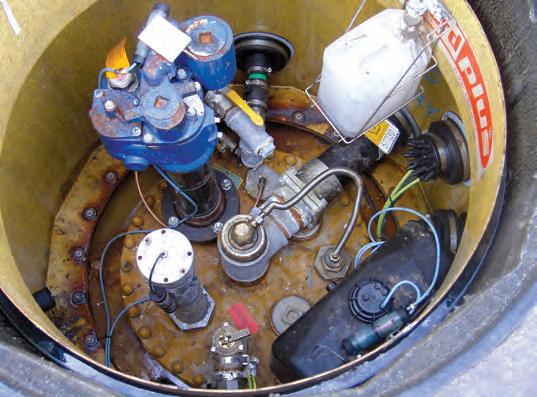
I have heard that these require special treatment. Can you advise please?
As you will probably be aware that around 5 years ago tanks using Glycol in the interstitial space (known as Class 2 leak detection) are no longer permitted to be installed in the UK and Europe due to the high risk of pollution to groundwater if the tank leaked. It was decided that tanks already installed with Class 2 leak detection could continue to be used as the leak detection system would warn the occupier if the tank leaked.
Guidance on making tanks safe is provided in Chapter 12 Decommissioning in The Blue Book.
In this case however the tanks cannot be made safe in situ, they
would need to be fully removed to ensure that the risk of pollution from the leaking Glycol is no longer present.
Specialist firms carrying out this work are listed in the Yearbook and listed in the Contact Directory on the on the publications page of the APEA website at www.apea.org.uk.
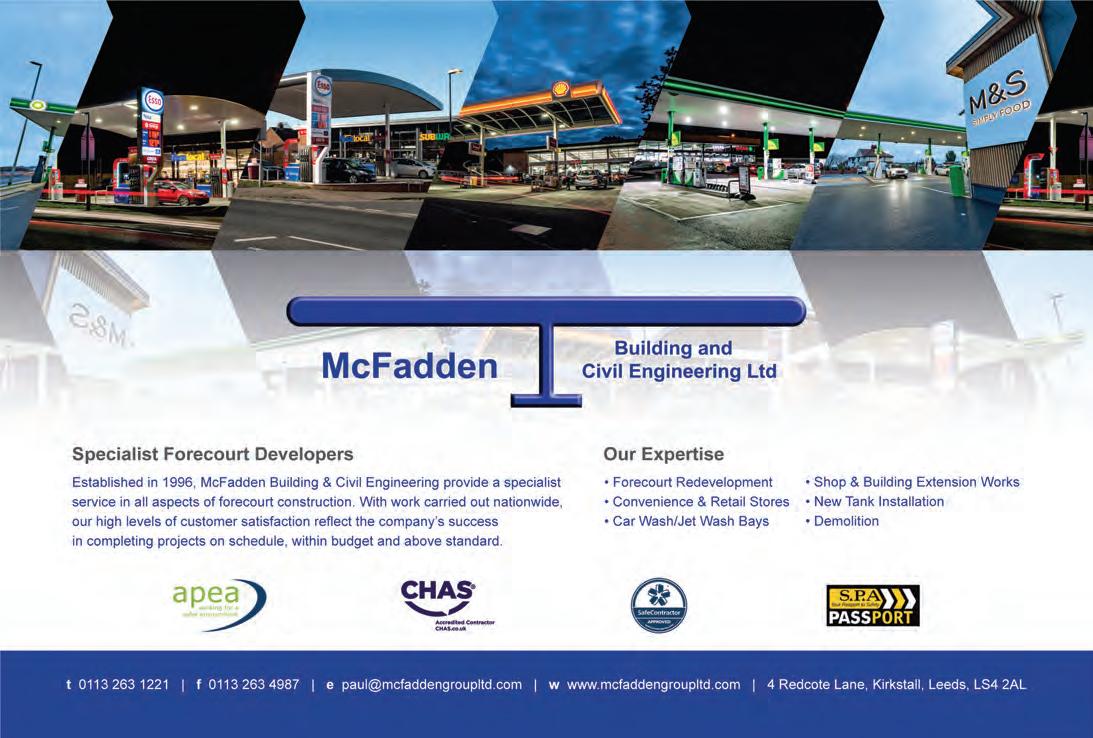
19 APEA tel: 0345 603 5507 www.apea.org.uk Articles
TSG and Wayne Fueling SystemsOver 130 Years of Technological Innovation
By Cheryl Ashton, Marketing Coordinator, TSG UK Solutions Ltd
Where it all began
In 1891, Sylvanus Freelove Bowser invented a very simple but effective pump that could reliably measure and dispense kerosene (or paraffin). He later sold his new creation to a grocery store in Fort Wayne, Indiana, USA, where it was used to dispense lamp fuel to customers.
As consumer demand for kerosene grew, Bowser’s device faced some stiff competition from other manufacturers, including the Wayne Oil Tank and Pump Company which designed and built 50 new model pumps in 1892. In the same year, US roads saw the advent of the combustion engine motor car, prompting Wayne to adapt its very popular pump to dispense gasoline.

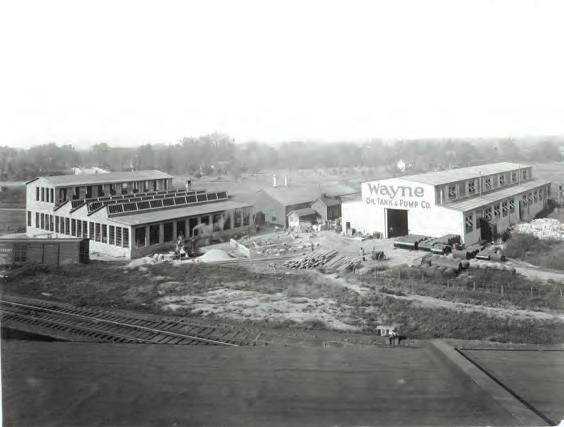
From these humble origins, began the compelling story of how Wayne Fueling Systems (Wayne) helped to shape the retail and fleet fuelling industry, and history was made.
Making an impact
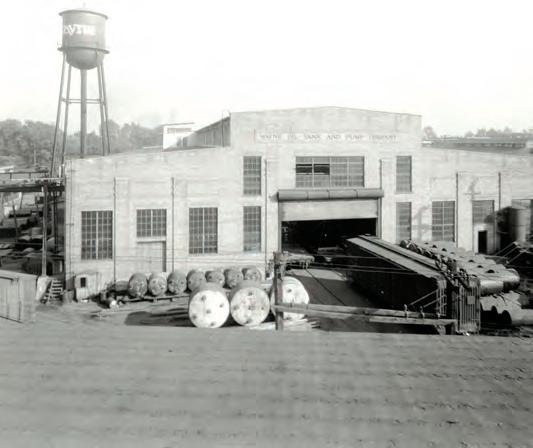
At the turn of the century, the popularity of the automobile started to accelerate, roads improved and the market for gas pumps soared attracting challengers into the sector, notably the Tokheim Oil Tank & Pump Company. Together, these two businesses turned the city of Fort Wayne into the gasoline pump manufacturing capital of the world, striking up a rivalry that would span over 100 years.
In the following two decades, the Wayne business flourished and began to steal a march on the competition with the launch of the
20 APEA tel: 0345 603 5507 www.apea.org.uk Articles
first visible hand pump. This breakthrough allowed motorists to see and control the amount of gasoline being dispensed into their tanks. It was the first of many ground-breaking products released by Wayne, including the mechanical computing dispenser, the blending pump, the electronic dispenser and the first customeractivated terminal (CAT), a development that paved the way for the age of self-service and pay-at-the-pump.


Building the empire
As the company prospered, Wayne established itself as a true leader in progressive technological innovations on a global scale, operating in many strategic locations around the world. The merger with Dresser Industries in 1968 strengthened Wayne’s position in
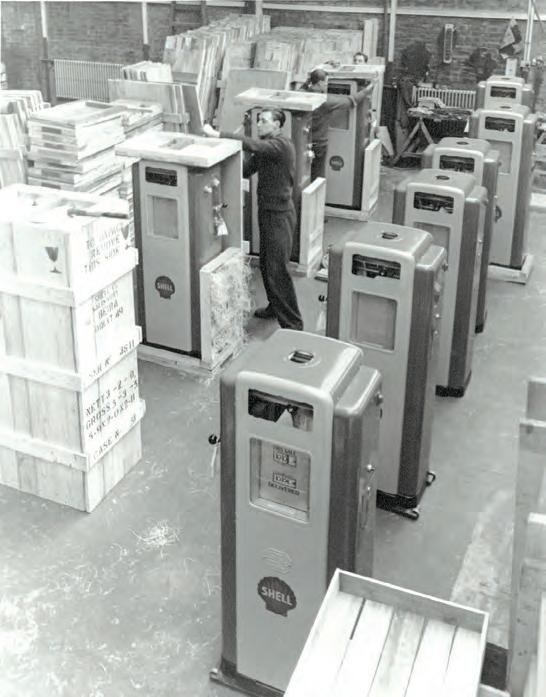
21 APEA tel: 0345 603 5507 www.apea.org.uk Articles
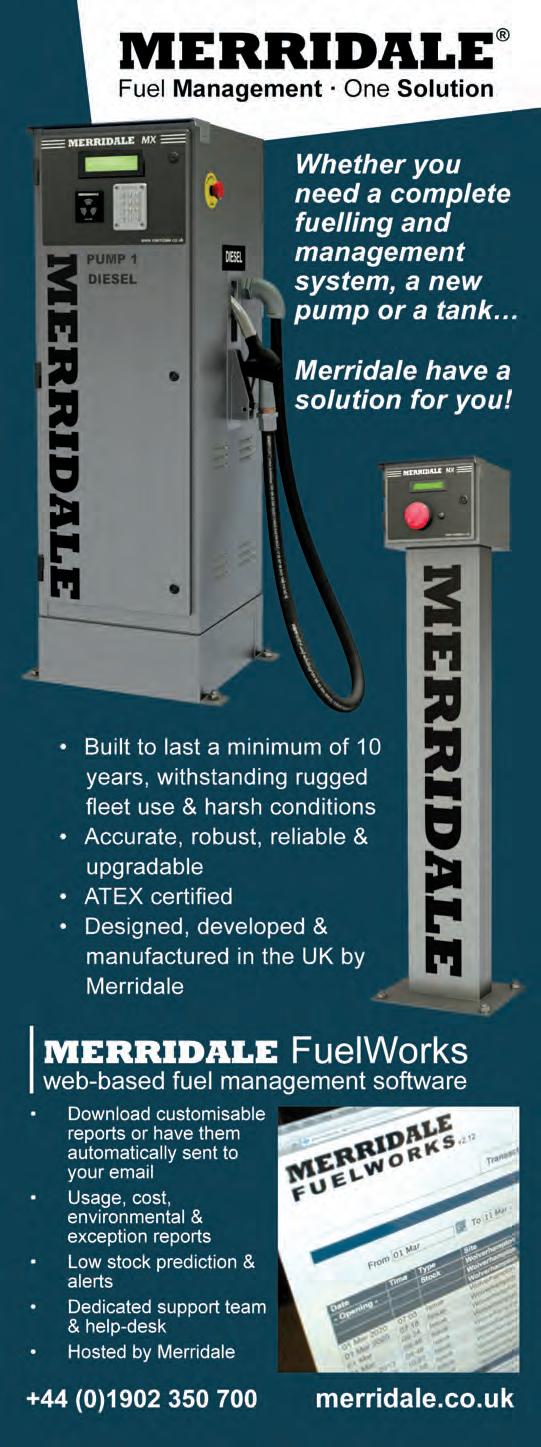
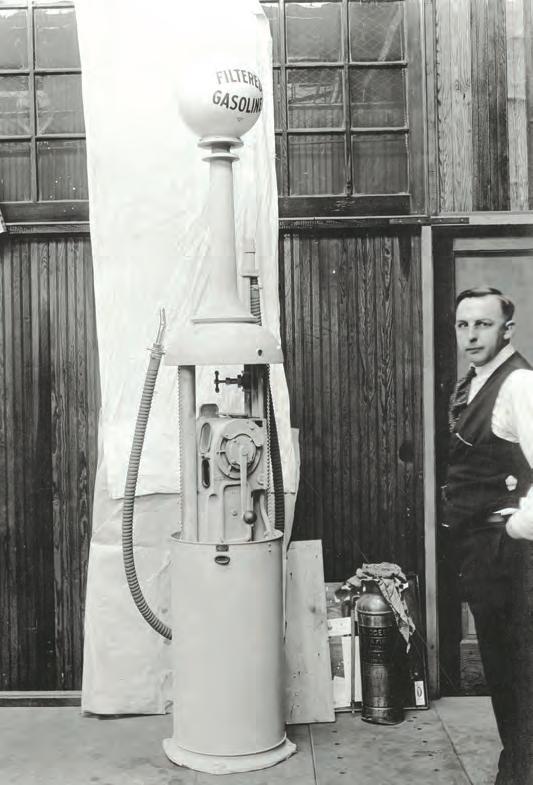
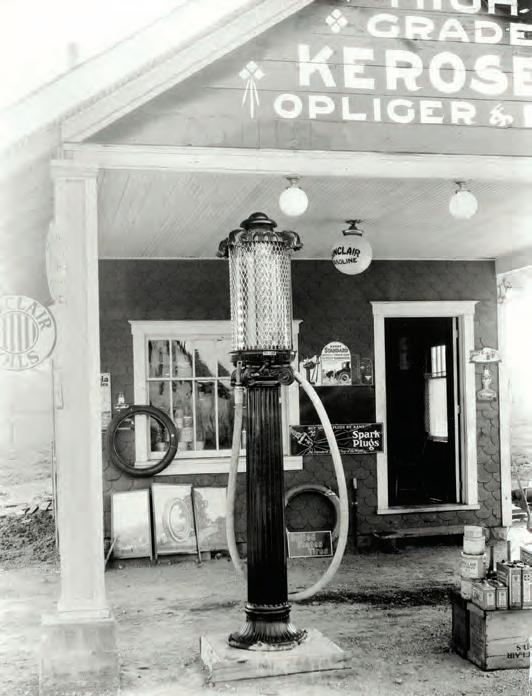
22 APEA tel: 0345 603 5507 www.apea.org.uk Articles
the sector and primed the business for the emergence of lead-free fuel and the subsequent rise in demand for dispensers.

Soon after, Wayne opened its headquarters in Austin, Texas where it remains to this day.
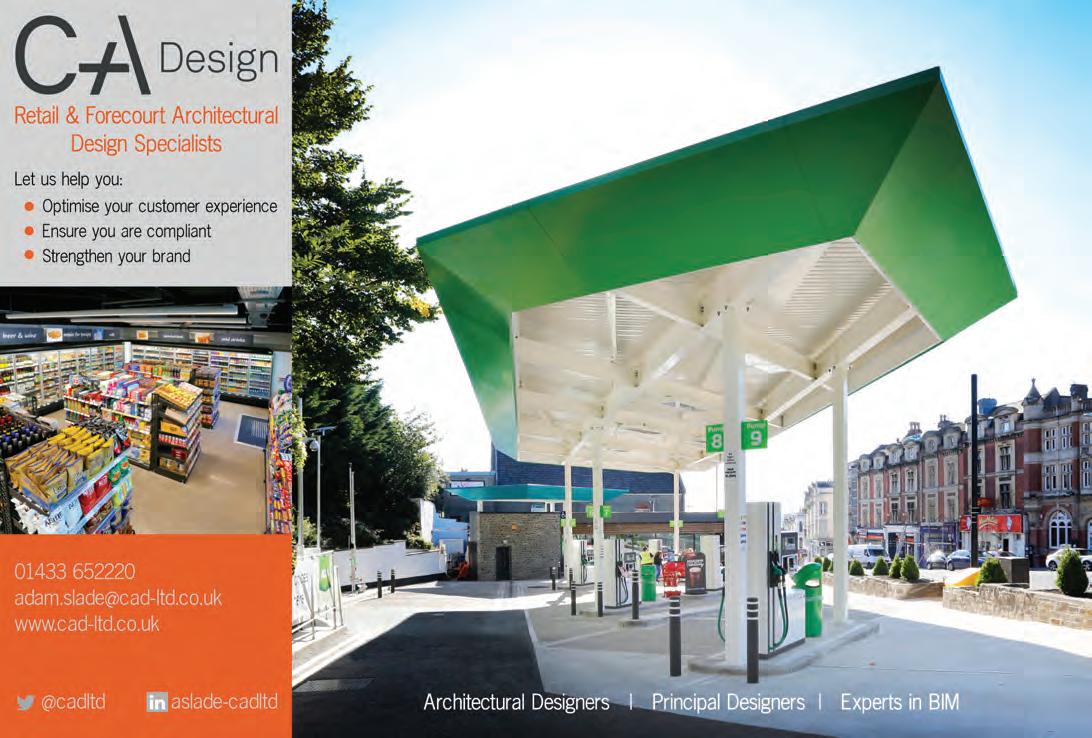
Wayne continued to extend its influence in Europe with the introduction of the very successful Helix™ line of fuel dispensers.
Fast forward to today Wayne, together with its longstanding adversary Tokheim, is now part of Dover Fueling Solutions (DFS), the leading provider of advanced fuelling equipment, electronic systems and payment, automatic tank gauging and wetstock management solutions in the fuel and convenience retail industries.
This alliance has provided the Wayne brand with fresh impetus and it continues to break
23 APEA tel: 0345 603 5507 www.apea.org.uk Articles
boundaries in the development of new technologies and integrated solutions across the globe.
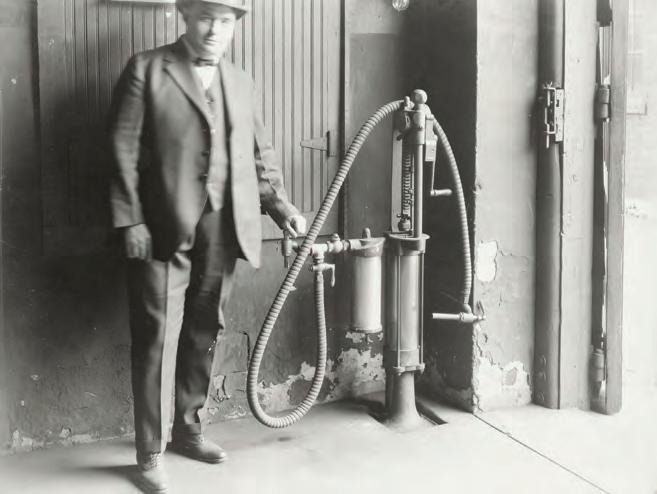
At the UNITI expo trade fair, Stuttgart, Germany in May of this year, DFS unveiled the latest Wayne dispenser family to the European market, comprising three ranges; Helix 6000 II, Helix 5000 II and Century 3. These new models are set to take the market by storm, cementing Wayne’s standing on the international stage.
There is now a greater focus on reducing carbon emissions by switching to greener energies and as a consequence, there are no fewer than 23 Wayne branded alternative energy models in the new lineup, compared to 14 for conventional fuels. Liquefied natural gas (LNG), compressed natural gas (CNG) and hydrogen are all supported, demonstrating DFS’ drive to stay ahead of the game in the race to net zero.
TSG UK and DFS

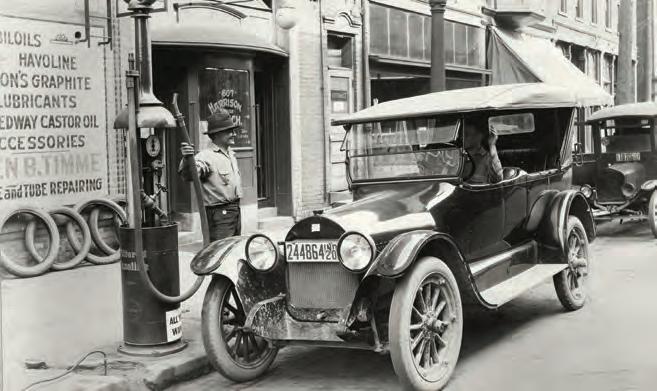
DFS recently nominated TSG as the sole distributor of Wayne products and solutions in the UK, further strengthening the already well-established partnership between the two companies.
As such, TSG is now able to add the extensive Wayne product range to its current offering, which also includes DFS’ Tokheim and ProGauge solutions.
For many years, TSG has been closely associated with Tokheim, but now this perception is starting to shift and customers are enjoying a far greater product choice than ever before, backed up by the UK’s largest retail service team.
For more information about TSG and the services it offers, visit: https://www.tsg-solutions.com/uk/
24 APEA tel: 0345 603 5507 www.apea.org.uk Articles
What Possibilities Exist with Prizma – the New Connected Mobility and Convenience Retail Hub from Dover Fueling Solutions
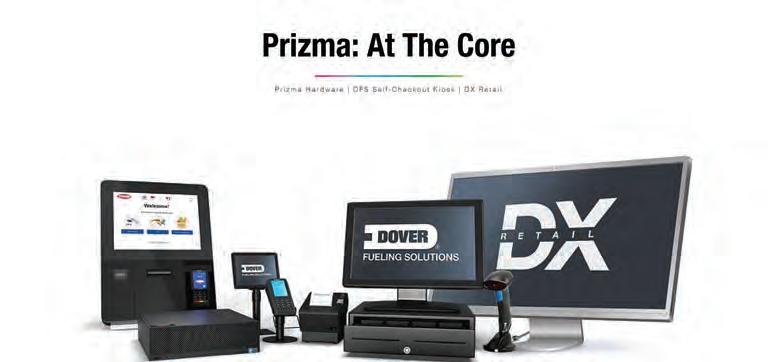
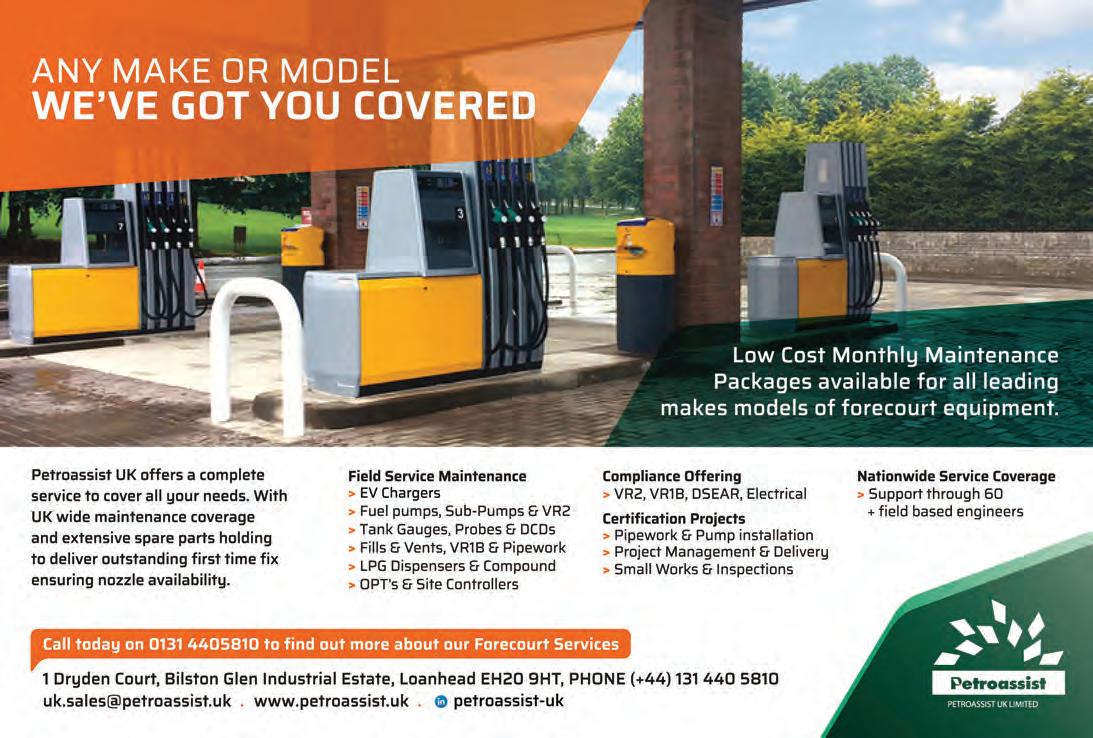 By Sarah Gibb, Senior Marketing Communications Specialist, Dover Fueling Solutions
By Sarah Gibb, Senior Marketing Communications Specialist, Dover Fueling Solutions
In May 2022, Dover Fueling Solutions (DFS) launched Prizma, a solution that goes beyond the standard pointof-sale (POS) system. Specifically designed to cater to a wide spectrum of fuel and convenience retailer needs, both now and in the future, Prizma is evolving the POS into a connected mobility and convenience retail hub. We sat down with Raf Tormans, DFS Senior Manager, Product Management, to find out how Prizma can help retailers advance their business with a broader spectrum of payment options, fuel types, connections and profits.
25 APEA tel: 0345 603 5507 www.apea.org.uk Articles
Q1. What led DFS to design and launch Prizma to the EMEA market?
DFS have been preparing for the transition to clean energy and mobility hubs in the fuel retail and convenience industry for quite some time. It’s essential that we continue to support fuel retailers, as they look to diversify their fuel offering on the forecourt. We developed Prizma to give site owners and forecourt operators the tools needed in today’s environment to manage, expand and transition their business model into a connected mobility and convenience retail hub.
Q2. Is Prizma just a re-branding of Fuel POS?
Prizma goes far beyond a traditional POS system. It has been designed to cater to a wide spectrum of fuel and convenience retailer needs, while meeting increasing consumer demands, both now and in the future. We thought it was time we positioned the product rightfully as a mobility and convenience retail hub, considering over the last several years, Fuel POS hasn’t just focussed on “fuel” and “POS” systems. This is when we launched Prizma and the Prizma eco- system to the market.
Q3.
How can Prizma help fuel retailers evolve their business?
Prizma is ready to support the evolving needs of fuel retailers as they start to re-imagine their standard business model – adapting it to meet new trends and consumer demands, so they can offer new products and services. Among the most visible changes is the rise of clean fuels with a primary focus on electricity for mobility. To make sure this is possible, moving to a customer- centric business model by re-inventing the customer journey is going to be essential. Customers will expect to find high-quality and fresh food services, supported by convenient self-checkout systems and pre-order kiosks. Simultaneously, loyalty systems will enable the retailer to leverage the data from customers to get insights into their preferences. Prizma helps fuel retailers become more customer-centric by facilitating and integrating these new offerings into a familiar site system solution. It keeps everything connected, so the entire process is effortless.
Q4. How is Prizma different from other solutions within the market?
Prizma is one software for all customers in all countries in the EMEA region, continuously enhanced by new product features, services, and regulatory updates. This presents a unique offering in the market, as all customers can benefit from product enhancements. Prizma also keeps the on-site hardware footprint as low as possible.
Q5. What is included in the Prizma eco-system?
It’s important fuel retailers can efficiently manage and evolve their business with more payment options, fuel types, connections and profits. The Prizma eco-system is designed to do exactly that.
For the merchant, the eco-system focuses on the ability to interface and control any device on the forecourt, whether it is a clean fuel dispenser – Compressed Natural Gas (CNG), Liquified Natural Gas (LNG), Hydrogen etc – Electric Vehicle (EV) charger, coffee machine or checkout system. Prizma seamlessly connects these devices with cloud-services like the Tokheim OASE™ (Online Authorisation and Switching Environment) payment gateway, DX Retail™ to remotely manage your site or the DFS DX™ connected solution platform to offer enhanced wetstock analytics, asset & price management, and monitoring capabilities.
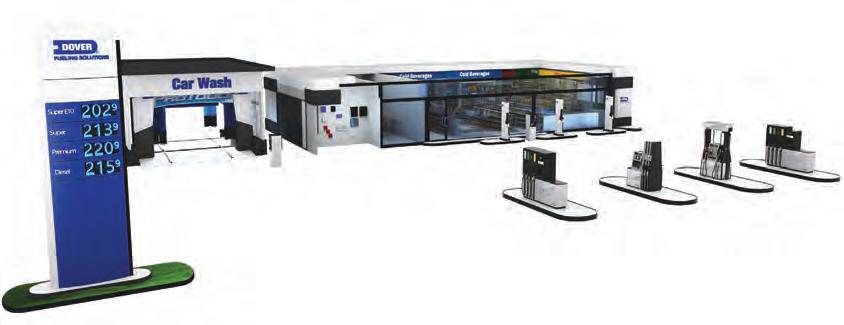
For the consumer, this eco-system optimizes the overall experience, via a variety of on-site applications, allowing them to efficiently refuel with clear user guidance, independent of the type of fuel dispenser or EV charger. Prizma optimizes the balance between forecourt operations and convenience retail to maximize customer fueling throughput. In the shop, it helps customers by offering extensive food services, loyalty programs and promotional solutions, as well as new checkout and quick payment solutions.
Q6.
How
can fuel retailers leverage Prizma to bring new opportunities to their forecourt?
One of the main drivers of new equipment on the forecourt is the presence of fast EV chargers. Prizma, in combination with DX Power™, builds the bridge between the existing site system, charge point operator platform and the EV charge point. This solution provides a unified consumer experience on fuel retail sites, while leveraging existing loyalty schemes and the acceptance of bank and fuel cards. For the operator it offers full transparency on what is happening on the forecourt, as the status of EV chargers will be visible on the POS screen, similar as with fuel dispensers.
Q7. Do you see Prizma as a next step towards the “Future of Fuel”?
This is the main reason why we launched Prizma, this is a huge step towards the “Future Forecourt”. It is our primary objective to assist fuel retailers in the transition to meet the changing requirements of the future. Whether it is on the forecourt, in terms of fuel and electricity, or indoor convenience retail services.
26 APEA tel: 0345 603 5507 www.apea.org.uk Articles
The facts
The Electric Revolution is Here to Stay
By Cheryl Ashton, Marketing Coordinator, TSG UK Solutions Ltd

In April 2022, UK new-car registrations were down nearly 16% when compared to the same month last year, but the market share for electric models continues to grow at a very healthy rate. Plug-in models are expected to account for a quarter of all registrations during the year, with pure-electric vehicles representing around one in six new cars appearing on our roads in 2022.
The catalyst for this dramatic increase in the popularity of electric vehicles (EVs) is primarily attributable to the government’s ban on new petrol and new diesel cars which will come into effect in 2030, with the sale of hybrids being outlawed from 2035. Subsequently, those in the market for a new car will be presented with a choice of battery-electric vehicles or
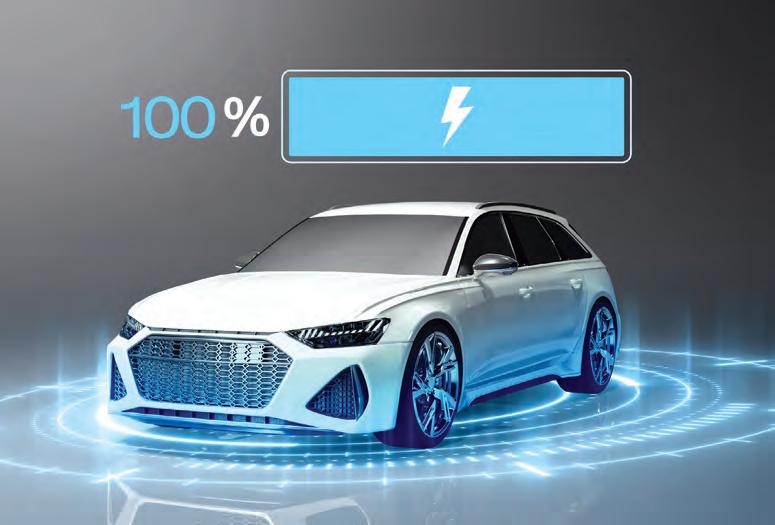
27 APEA tel: 0345 603 5507 www.apea.org.uk Articles
cars powered by hydrogen, with no fossil fuel options on the table.
But what about the new car buyers of today? There is still much to be done to convince UK motorists to make the switch to electric, as the lack of confidence in the supporting charge infrastructure remains relatively high. Nevertheless, evidence shows that traditional fossil fuel drivers are now at least considering an EV for their next purchase, demonstrating a slight swing in public perception.
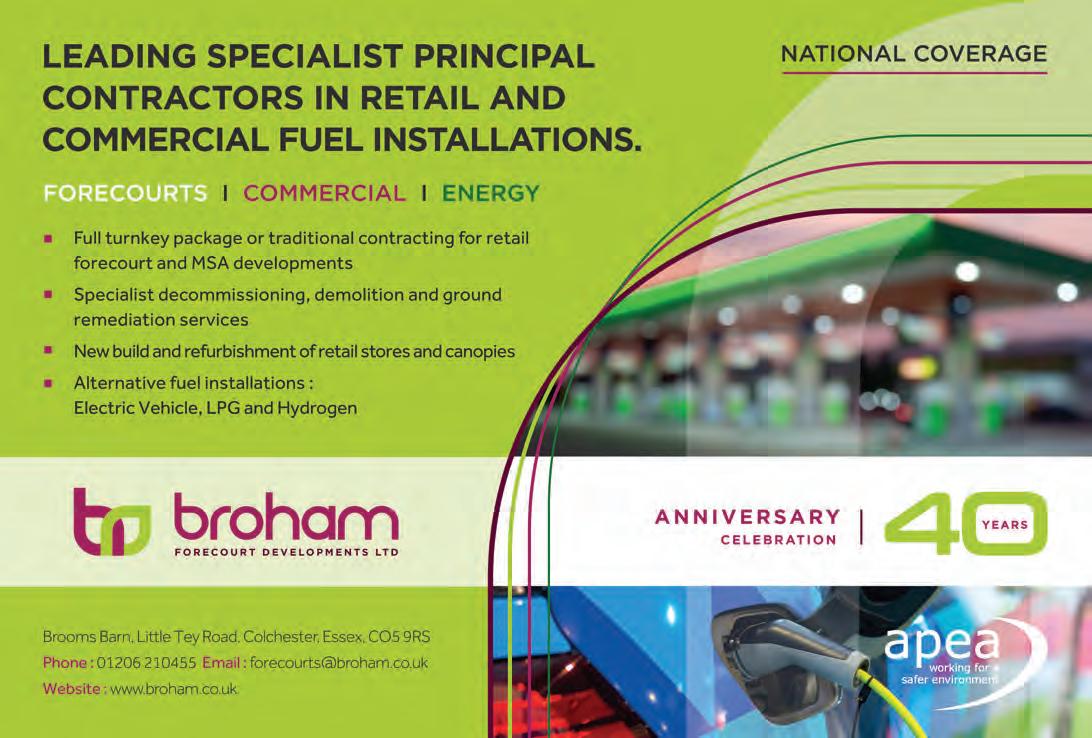
The uncertainty
The biggest hurdle motorists have to overcome surrounds the notional ‘range anxiety’, which in actual fact is nothing more than ‘charger anxiety’. The inability to complete a journey without running low or out of energy is a common misconception among EV drivers, due to a potential lack of operational charging facilities en route. In reality, most daily trips are ten miles or less and the likelihood of needing a recharge during their journey is very slim. In addition, the latest range of EVs boasts a mileage
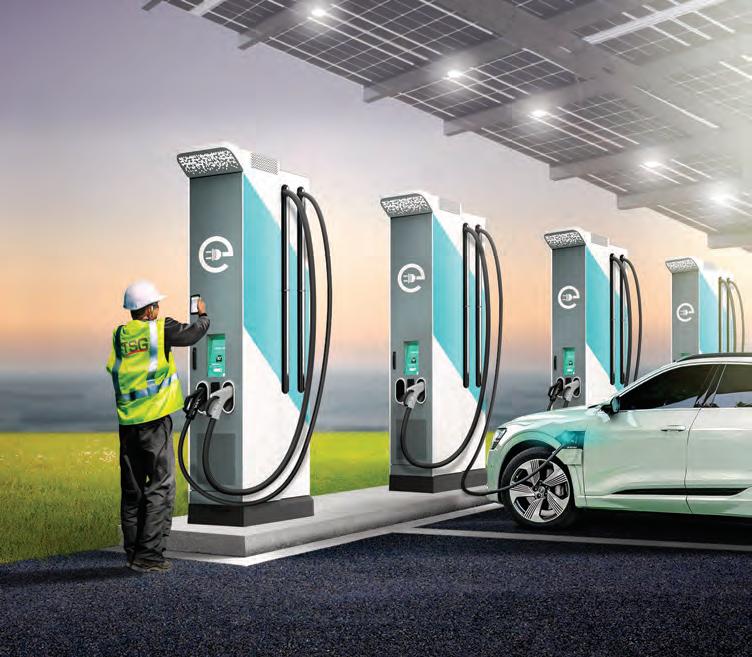
28 APEA tel: 0345 603 5507 www.apea.org.uk Articles
range similar to that of equivalent petrol models, when coupled with rapid charging speeds and reduced charging times, EVs are fast becoming a very attractive proposition.
The solution
To address these concerns, there are already schemes in progress such as ‘on the go’ charging, an economical subscription-based programme that is providing EV drivers access to thousands of public chargers in convenient locations. Additionally, EV chargers are now popping up in numerous different public and semi-public places, such as shopping centres, gymnasiums, car parks, hotels and restaurants – this is typically referred to as ‘destination charging’. Whilst there is still a shortage of workplace chargers, employers now recognise that offering charging facilities to their EV-driving employees is a valuable tool for attracting and retaining staff.
The total cost of ownership (TCO)

Electric cars are often more expensive to buy than their petrol and diesel-engine counterparts, and many cost more to insure. However, the total cost of ownership comprises far more elements than the initial outlay – it is important to consider mileage costs, road tax and the service/maintenance charges.
On average, the cost per electric mile is one third of unleaded petrol, however, in recent weeks the exorbitant rise in fuel cost has seen that figure drop to one fifth – meaning every mile covered in a petrol vehicle will cost five times more than an EV. It is worth noting that purchasing EV energy via a monthly subscription plan is far more cost-effective than adopting a pay-as-you-go approach.
As with fuel, so it is with servicing: electric vehicles generally work out much cheaper to service and maintain than the equivalent traditional models, largely because they have fewer moving components and fewer parts prone to wear.
Currently, fully electric cars are ‘zero-rated’ for vehicle excise duty (road tax), whereas combustion engine cars are taxed in line with their emissions and range from £165 to over £600, depending on the grams per kilometre of CO2 produced.
As car buyers become increasingly aware of the time limit on internal combustion engines, the depreciation of these vehicles is gathering pace. Meanwhile, EVs are gaining traction in the marketplace and their residual values are growing stronger by the day, making them a far more lucrative investment.
Taking everything into account, it is easy to see that the EV is a clear winner in the TCO stakes and should be forgiven for its higher purchase price, as over the EV’s lifetime there are generous savings to be made.
Looking to the future
The global EV market share has taken a tremendous leap forward in the past decade, and this trend is expected to gather pace as world leaders strive to achieve the ambitious ideal of net zero.
The current EV charging infrastructure is being stretched to capacity to keep abreast of this growth, however, new technological developments are furthering the evolution of the UK’s charging facilities in a very ‘electrifying’ way.
29 APEA tel:
www.apea.org.uk Articles
0345 603 5507
Wireless charging
Wireless car charging works in a similar way to the wireless smartphone charger, only on a much bigger scale. In both cases, the technology required is called inductive charging.
Whilst wireless EV charging is still in its infancy, it is already being piloted in car parks, along bus routes and on taxi ranks across the UK, and the results so far have been very promising.
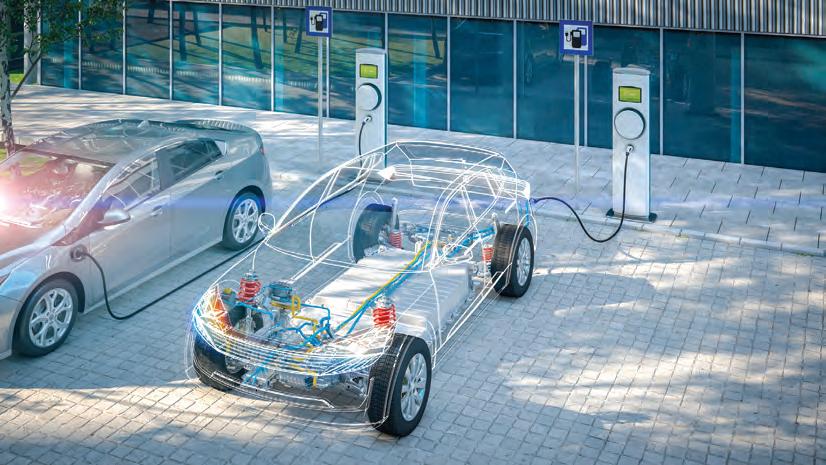
To carry out this trial, wireless charging pads were strategically installed in recognised stopping places of a wide-ranging sample of EVs, and the corresponding wireless charging kit was fitted to the vehicles to ensure compatibility. The vehicles need to be parked in such a way that both the transmitter and receiver are in alignment before charging can begin. The energy is then seamlessly transferred through an air gap from the charger to the car.
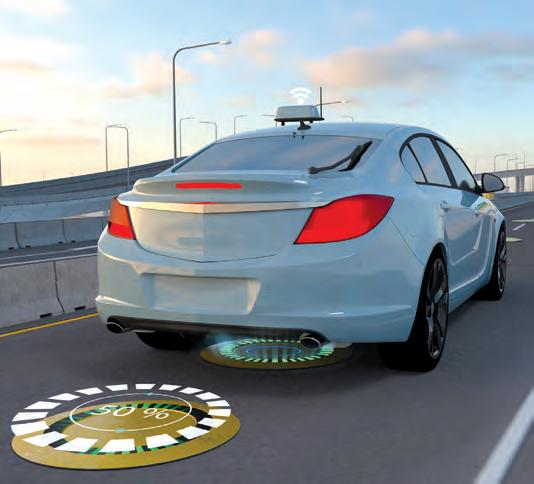
If this preliminary investigation into the viability of wireless EV charging goes to plan, it is feasible that wireless chargers will be installed into roads and car parks across the land, and the worry of finding the next functional charge point will become a thing of the past.
Driverless cars
Autonomous Electric Vehicles (AEVs) rely on artificial intelligence to operate with varying degrees of human input. By computing billions of data points each second from an array of sensors, cameras and radar systems, A-EVs can effectively ‘see’ the road and respond to changing conditions or navigate obstacles. Tesla has recently taken this technology to a whole new level, but will electric vehicles ever become truly autonomous? The answer is a resounding yes – with new technologies being developed at an exponential rate, it is simply a case of ‘watch this space’.
Battery swap
Chinese car manufacturer Nio has introduced a very successful ‘battery swap’ scheme to eliminate lengthy recharge waiting times. In simple terms, car buyers purchase an electric vehicle without a battery, reducing the retail price by thousands of pounds and consequently addressing the higher-price pain point of EVs. Customers then pay a monthly subscription fee for the battery which includes several ‘swaps’.
Instead of plugging in to recharge the battery, motorists simply drive to the nearest Power Swap station and the battery is exchanged for a fully charged power pack. The whole process takes between three and five minutes and then the driver is back on the road.
This game-changing subscription model is not in the UK as yet but is surely a scheme that warrants serious consideration from other major car manufacturers wanting to make their mark on the EV scene.
Supercapacitors
A supercapacitor, like a battery, is designed to store and release electricity. But rather than storing energy in the form of chemicals, supercapacitors store electricity in a static state, making them far more efficient at rapid charging and discharging energy.
Supercapacitors already exist in cars with regenerative braking systems, thanks to their greater power density than lithium-ion batteries. They store the energy generated whilst braking and then discharge it rapidly upon acceleration.
But is it realistic to believe that the EVs of the future will be powered by supercapacitors, charging from zero to full in a split second? At the moment it is simply a pipedream, but who knows what the future holds, it will be here sooner than we think.
EV Hubs
EV charging hubs are public stations solely dedicated to electric car charging and will benefit the local communities, businesses, commuters and visitors to the area. The concept was derived to provide the ultimate consumer experience to EV drivers who are looking for a fast charge, comfortable surroundings in a convenient
30 APEA tel: 0345 603 5507 www.apea.org.uk Articles
location with ample refreshment and shopping facilities. There are currently only a handful of EV hubs across the UK, however, these sites are forming a template for forecourts of the future.
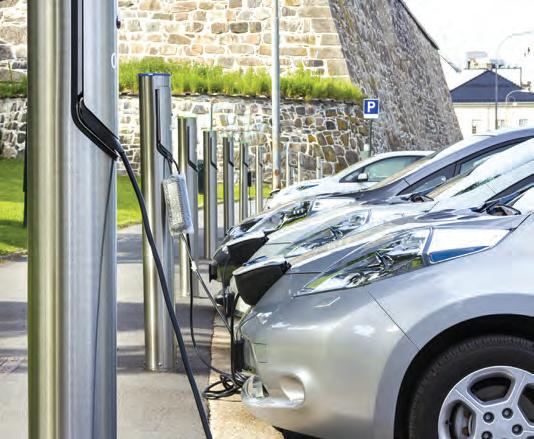
Alternatives
Hydrogen
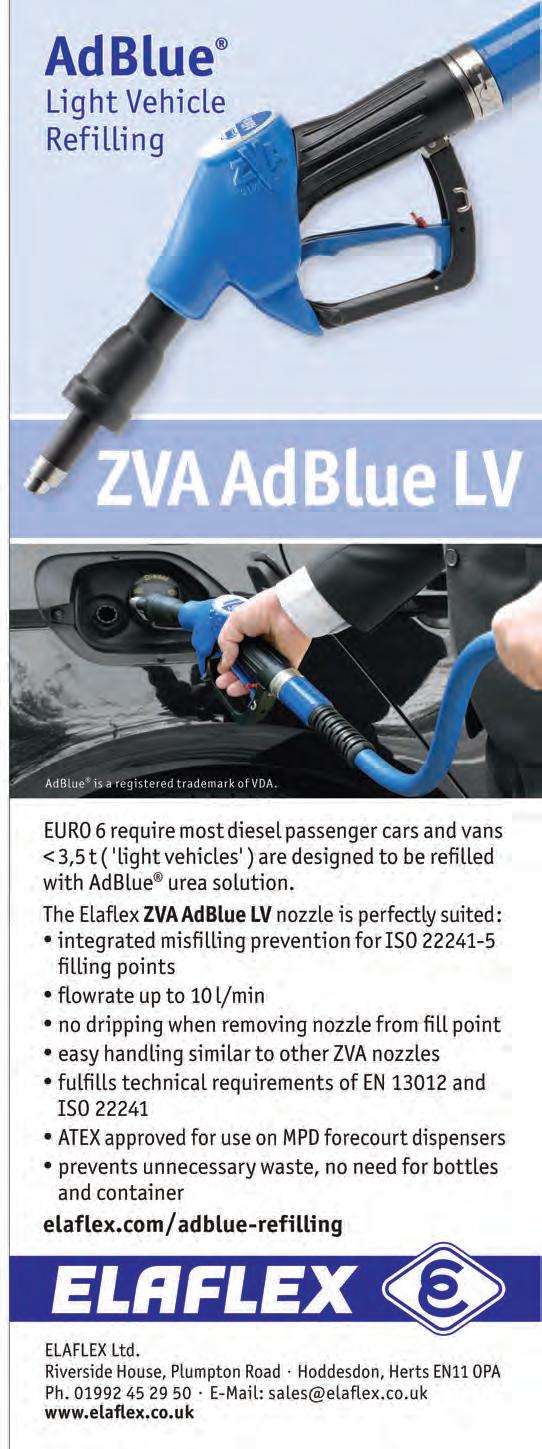
In the short term, hydrogen is not regarded as a pragmatic opponent to electricity when it comes to everyday cars and vans, as the technology behind it lacks maturity. However, hydrogen prevails over electricity in the haulage industry and public transport sectors such as trains and buses, as it offers a far greater range with much shorter refuel times.
The foremost challenge for the hydrogen economy is finding a viable solution to the problem of storage. At present, hydrogen can be stored as either a compressed gas in high-pressure tanks or as a liquid at -253°C in cryogenic tanks. Both of these methods are considerably more expensive than conventional storage systems for petroleum products.
TSG leads the way Undoubtedly, electricity is currently blazing a trail in the alternative energies race, and as adoption grows and technology develops, it will become the obvious choice for forward-thinking motorists and businesses alike. Whatever the future holds, TSG has the expertise to provide a complete end-to-end turnkey solution, from site survey, design, consultancy and distribution network operator (DNO) connections.
TSG’s UK Director of Electric Business, Michael Mounteney, commented “TSG is best placed to deliver the electrical infrastructure to support the EV revolution, by being recognised as the UK’s first choice engineering, procurement and construction (EPC) contractor, regardless of the technology behind it.”
As part of its future growth strategy, TSG is investing in people, systems, technology and processes. TSG is currently holding a nationwide recruitment drive, seeking talented electrical managers and engineers, as well as opening a new TSG Charge head office in the Milton Keynes area.
For more information about TSG and the positions available, visit: https://www.tsg-solutions.com/uk/
31 APEA tel: 0345 603 5507 www.apea.org.uk Articles
Switch to Electric and Mitigate the Impact of the Cost of Living Crisis
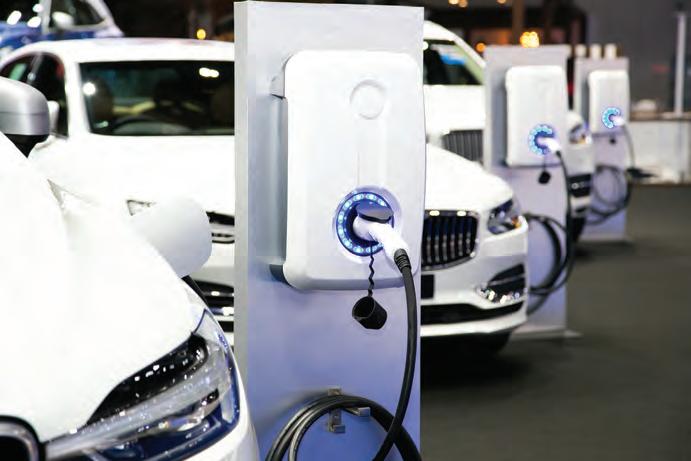
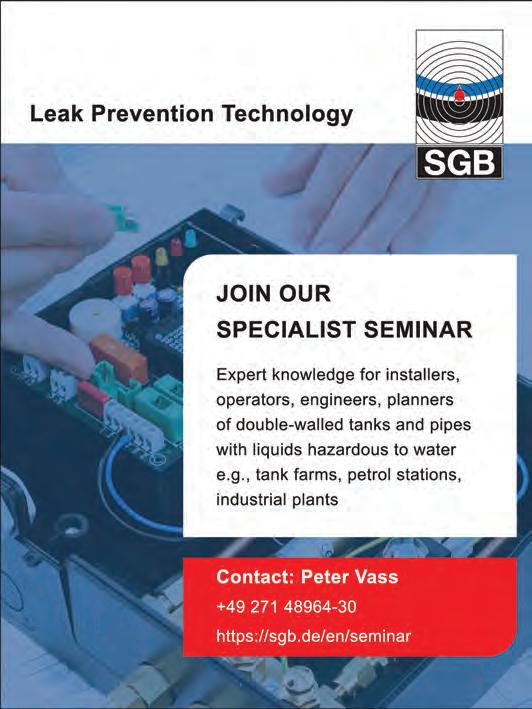
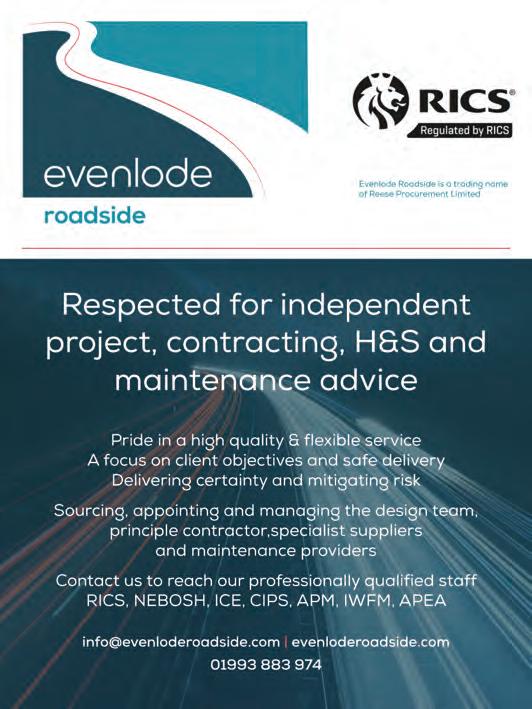 By Cheryl Ashton, Marketing Coordinator, TSG UK Solutions Ltd
By Cheryl Ashton, Marketing Coordinator, TSG UK Solutions Ltd
These days, you can’t turn on the TV or radio without being inundated with up-to-the-minute news on ‘the cost of living’ crisis, which has been caused predominantly by high inflation and exacerbated by rising interest rates. Many families are feeling the squeeze and cutting back on life’s little luxuries such as meals out, holidays abroad, weekends away and gym memberships.
The crisis has affected everyday life for a substantial number of people, as the cost of mortgages, transport, utilities, fuel and groceries spiral out of control. Strict budgeting is now commonplace in households across the UK, as everyone looks at ways to economise and make ends meet.
For instance, the soaring cost of fuel has prompted drivers to think twice before getting behind the wheel, making only essential trips
32 APEA tel: 0345 603 5507 www.apea.org.uk Articles
and in some instances, cutting out shorter journeys altogether, choosing to walk or cycle instead.
Escalating energy prices and fuel costs have driven inflation to its highest level in 40 years, according to the Office for National Statistics (ONS), realising an incredible 9.4% in the 12 months to June 2022.
Why are prices so high?

The current situation in Ukraine is a significant contributing factor to the high price of food, energy, crude oil and fertiliser; the war has given rise to untold supply-chain disruptions, leading to market turmoil, placing the global economy under immense pressure.
In the UK, local farm produce is the staple diet for much of the population, however, farmers are struggling to compete with the associated production expenses, such as cattle feed, fertiliser, machinery, transportation, energy and labour. All of these elements have pushed up the retail price of dairy products, meat, vegetables and fruits in the stores, leaving shoppers counting the cost.
The ongoing shortage of energy across the world, which is affecting many countries including the UK, has led to the perfect storm. Economic recovery has seen an increased demand for energy and an ensuing rise in wholesale prices for the providers; a cost that has been unavoidably passed on to the consumer.
Petrol and diesel prices are wholly dependent on the cost of crude oil from which they are produced. The price of crude oil has fluctuated quite dramatically over the last few years, collapsing entirely during
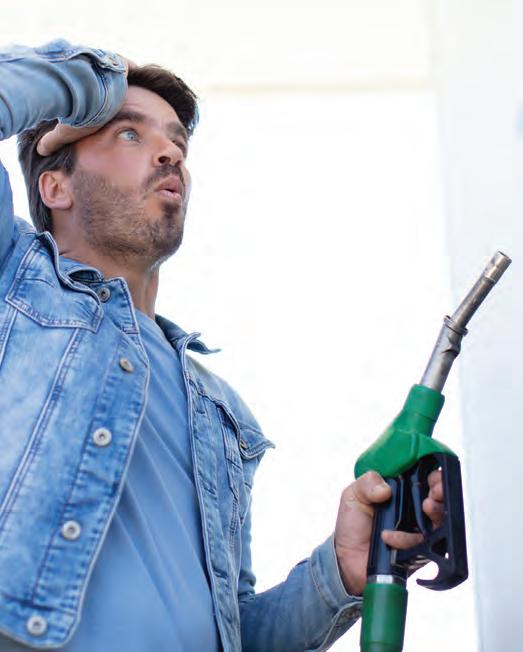
33 APEA tel: 0345 603 5507 www.apea.org.uk Articles
the pandemic, as many businesses temporarily closed and travel restrictions were implemented, undermining demand. This decline in fuel sales saw the average UK supermarket price of unleaded fall below £1 per litre in May 2020.
As constraints lifted and life returned to normal, the market for energy prospered, but suppliers struggled to keep pace and prices started to climb. In recent months, the average price of petrol and diesel has shattered all previous record highs and continues to accelerate, so much so that filling the tank of a family hatchback now costs in excess of £100.
Could the switch to electric vehicles help?
There are close to half a million electric cars in the UK, and exorbitant fuel prices have encouraged more people to consider making the switch.

Electric cars are almost always more expensive to buy outright than their petrol or diesel counterparts, but slower depreciation and higher projected residual values help to make EVs a more lucrative investment. On the flip side, internal combustion engine (ICE) vehicles are depreciating rapidly, as car buyers become increasingly aware of the impending 2030 ICE ban and public interest in fossil fuel cars wanes.
Whilst EVs are often more expensive to insure, primarily due to the high cost of production, it is important to compare service/maintenance charges, road tax and mileage costs, as it is in these areas that EVs really come into their own. EV service and maintenance charges are typically less costly than the equivalent traditional models, largely because they have fewer moving components and fewer parts prone to wear.
The cost of electricity is far less than the price of unleaded or diesel, meaning electric car cost per mile figures are considerably lower than ICE vehicles and hybrids. It is worth noting that
purchasing EV energy via a monthly subscription plan is far more cost-effective than adopting a pay-as-you-go approach. At present, fully electric cars are ‘zero-rated’ for vehicle excise duty (road tax), whereas combustion engine cars are taxed in line with their emissions and range from £165 to over £600, depending on the grams per kilometre of CO2 produced.
With fuel costs rising to unprecedented levels and no sign of this trend reversing, it is clear that the prospect of transitioning to battery electric vehicles (BEVs) is becoming increasingly attractive. In fact, EV sales are exceeding all forecasts, indicating this shift is already well underway.
TSG leading the charge
TSG is best placed to deliver the electrical infrastructure to support the exponential growth of EVs, by being recognised as the UK’s first choice engineering, construction and procurement (ECP) contractor, regardless of the technology behind it.
The recent appointment of Michael Mountenay as the UK Director of Electrical Business has provided TSG with the expertise, experience and impetus to take the EV charge business line to another level. The key acquisitions of DRB UK and UCP Choice have provided the skillset and the resource for TSG to meet the growing demand for charge stations across the country.
DRB UK specialises in EV installation, signage and branding solutions, electrical testing and preventative maintenance contracts, and UCP Choice, a leading national independent connection provider (ICP), delivers a full service including design, equipment supply, project management, high-voltage connections, installation and maintenance to the EV, battery storage and solar solutions.
For more information about TSG’s products and services, visit: https://www.tsg-solutions.com/uk/
34 APEA tel: 0345 603 5507 www.apea.org.uk Articles
TSG’s Service and Maintenance –Prevention and Cure
By Cheryl Ashton, Marketing Coordinator, TSG UK Solutions Ltd
Equipment is the lifeblood of business and must be kept running at peak efficiency to satisfy customer expectations and maintain operational profitability.
Here at TSG UK Solutions, we recognise the importance of effective preventative maintenance to minimise downtime on retail forecourts, commercial fleet operations and vehicle wash stations, all backed up by a discretionary 24/7 emergency service for those unexpected breakdowns.

TSG is the largest service and
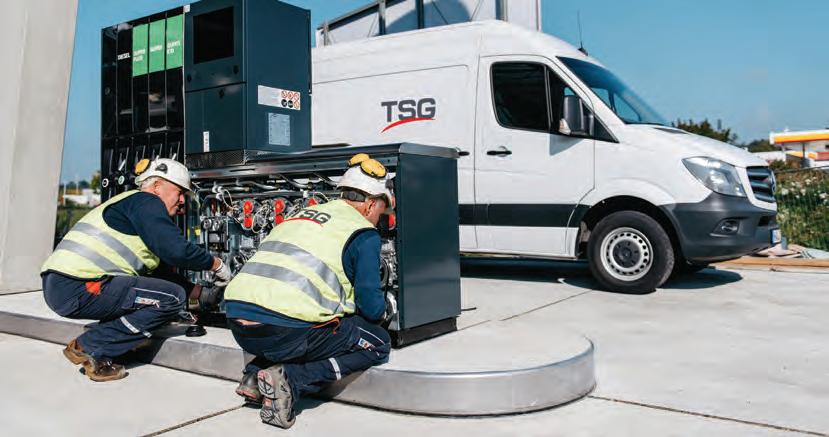
35 APEA tel: 0345 603 5507 www.apea.org.uk Articles
equipment provider in the industry with more than 50 years of experience in installation, service and maintenance, supporting independent networks and multinational oil companies across the UK.
Flexible by design
TSG customers are able to choose a service and maintenance arrangement that best matches their business needs and budget. For instance, a five-day maintenance plan between the normal working hours of 8.00am to 5.00pm may be sufficient for the smaller operations. Larger networks may prefer a six or seven-day scheme, with the option to upgrade to a 24/7 call-out service if required.
Emergency cover can be crucial for busy sites to help maintain the smooth flow of traffic through the station and avoid congestion at peak times. One call to the TSG customer services team and a technician can be on the premises within a four, six or eight-hour time frame, depending on the terms laid out in the agreement. In
some instances, by special arrangement, the technician will arrive on the site within sixty minutes of the initial call and conclude the repair in less than four hours. Suffice to say, there are an infinite number of variations in the support levels available with a TSG service contract since they are all tailor-made to suit core business requirements.
Networks of fifty sites or more will be assigned a key accounts manager to attend to the more challenging needs associated with larger enterprises. The key accounts team is there to not only take care of the clients’ service and maintenance requirements but also to act in an advisory capacity, offering guidance on system/equipment upgrades or enhancements to their service plan.
Trained to succeed
All TSG field technicians undergo intensive, ongoing training to maintain service consistency across the board, whilst keeping abreast of product updates and the latest industry technology. To
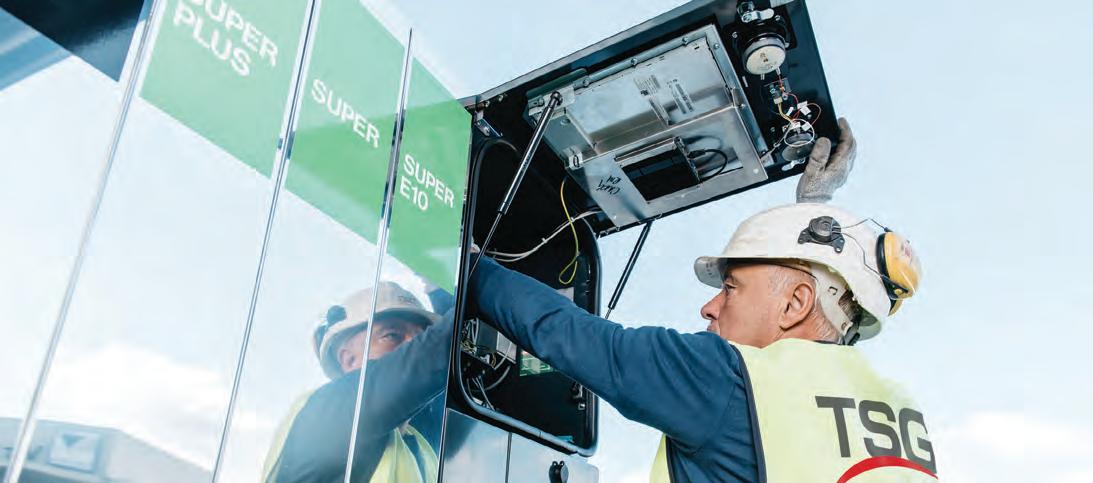

36 APEA tel: 0345 603 5507 www.apea.org.uk Articles

prepare our team for the fast-approaching transition to greener fuel alternatives, essential coaching is currently underway on LNG, CNG, electricity and hydrogen. These comprehensive training programmes ensure that the service provided by TSG meets exacting consumer standards and safeguards its position as one of the leading service and maintenance providers in the business.
There are so many aspects to the role of a service and maintenance technician, that it is important to split the teams into their respective centres of expertise, whereby clients can be assured of a swift, high-quality repair regardless of its complexity.
Remote diagnostics
Many site issues, such as a faulty point-of-sale system or inaccurate tank gauge, can be identified and resolved remotely by TSG’s highly skilled diagnostic specialists. Remote diagnostics are becoming more commonplace in the industry, as new technological advancements are radically changing the way we work.
In some instances, the fault can be diagnosed prior to the technician visiting the site, resulting in less disruption for the staff and alleviating equipment downtime.
As the vast majority of site equipment is interlinked, the TSG team requires an extensive list of this equipment and its connections before remote diagnostics can be performed.
Additional Services
Pump measure check
TSG’s pump verification service is designed to help forecourt owners ensure their dispensers are within the legal tolerance. Checks can be performed annually, or more frequently if preferred, and if recalibration is required, we can adjust and re-stamp meters on the same day.
Site Audits & Dangerous Substances and Explosive Atmospheres Regulations (DSEAR) Assessments
TSG provides site audits, DSEAR assessments and certification to site owners to remain compliant with current national legislation. The details of the site visits vary based on the individual site but cover all areas of legislation and include support and advice for any areas that need improvement.
What the customers say
Margaret Erwin, Head of Forecourts, Moto Hospitality Ltd said: “TSG UK was selected to take care of Moto’s service and maintenance requirements approximately six years ago, after a stringent tender process. Since then, the relationship between the two companies has proved to be very successful. Apart from securing a competitive price, one of the key drivers of this decision was to ensure that the chosen supplier would be able to fulfil and sustain specific criteria to meet Moto’s exacting standards.
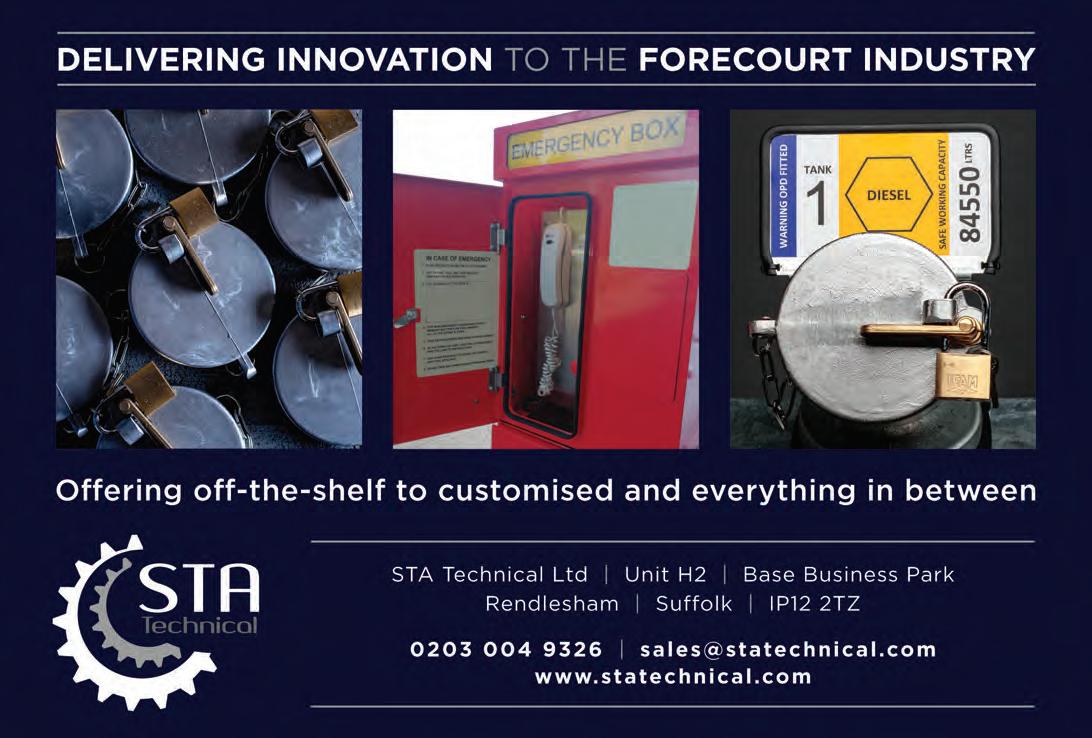
38 APEA tel: 0345 603 5507 www.apea.org.uk Articles
Don’t Underestimate the Power of TrainingInvest for Success
By Cheryl Ashton, Marketing Coordinator, TSG UK Solutions Ltd
TSG UK Solutions is recognised for the provision, installation and maintenance of forecourt equipment and electric vehicle (EV) charge points across the country, but as with every good company, supporting its customer base is of paramount importance and remains pivotal to its success.


Training is an integral part of the foundation upon which TSG UK’s after-sales service department is built, and a critical component of its customer satisfaction programme.
More than a classroom Tracy Oldroyd heads up TSG’s training division and is responsible for setting and executing a packed training schedule for both customers and employees. Tracy’s background as a retailer in both newsagents and off-licences means that she is best placed to understand the challenges that TSG’s customers face. Tracy has in-depth knowledge of store management, stock control, retail marketing and consumer behaviour, which has proved invaluable when visiting sites that are struggling to optimise profits.
In addition, Tracy is very familiar with the software that TSG
39 APEA tel: 0345 603 5507 www.apea.org.uk Articles
customers use on a daily basis, both from a training perspective and as a retailer, which helps her to appreciate their frustrations when they are experiencing difficulties.
Using her extensive skills, Tracy is able to advise site managers on topics such as; maximising the space available within the store, which products to display front and centre, approaching suppliers for support with point-of-sale materials and offering free samples of tasty new snacks to tempt those whose sole intention was to purchase fuel. Furthermore, and potentially the most crucial, how to run succinct and meaningful reports that advise managers on their best-selling stock and likewise, their poorest performing items, in an effort to improve the ordering process and stocking levels.
For TSG’s own help-desk staff, the focus is on teaching the team to understand the problems faced by customers at a granular level, so they are able to show empathy with the callers and swiftly resolve their issues.

Pre-installation training
Prizma (formerly FuelPOS) is the industry-leading electronic point of sale (EPOS) system that seamlessly integrates with fuel dispensers, price signs, tank level gauges, car washes, electric vehicle charge points and the back office, providing fuel retailers with full site control. When investing in a new EPOS, such as Prizma, it is essential that key members of staff are able to set up the back-office system to suit the business requirements before the installation is concluded. All training is done on a day and time to suit the customer, so as to minimise interference in daily operations. The first session is held online and lasts for a couple of hours, covering the basics such as; creating suppliers, entering the stock inventory and completing shelf labels. This is followed up by a visit to the site where the nominated members of staff receive one-to-one coaching on setting permission levels to control employee access, generating standard reports, margin control, order entry and electronic delivery notes. It is always the best policy for staff members to be allowed time to familiarise themselves with the system before the go-live day, practicing the elements they have learned until they feel totally confident and in control.
Of course, TSG’s training extends to many other products and solutions, including; DX Retail, T-Media, EMIS, Iridium and handheld terminals (HHTs) amongst others.
The shopping experience
There’s no denying the shopping experience has truly transformed in recent years, with many people choosing to shop online where possible. However, motorists will always need to visit forecourts to refuel and will often pick up a few necessities whilst they are there, so it is imperative that site owners make their experience as enjoyable as possible to ensure they choose to shop there again.
TSG’s training helps site managers to make small changes that make a big difference! For instance, requesting that counter staff acknowledge customers on entry to the store, opting for a clean store layout that is easy to navigate, creating a colourful and welcoming display of merchandise, stocking fresh local farm produce and ensuring current special offers are well signposted. When budget allows, the adoption of TMedia at the fuel dispenser can really help to boost shop sales and profit margins, by driving targeted advertising during the refuelling process. TSG provides training on all aspects of TMedia, from content management to the creation of a successful promotional strategy, that will generate additional footfall into the store.
Your training – your way Training is something that supports consistency, efficiency, and productivity in a business, like a backbone that runs through everything that employees do. That is why it is essential that the training chosen has been tailor-made to the company’s operational requirements and once completed has proven to be beneficial in practice.
TSG is totally committed to improving its customers’ performance and profit margins through the power of effective training. Tracy Oldroyd noted “Businesses should not be afraid to invest in staff training programmes to improve knowledge, skills and performance, which ultimately leads to better productivity. Dedicating time to your employees and adopting a structured approach to training can reap substantial rewards.”
What the customers say Vas Mohanathas, BSc (Hons), Area Manager, JP&S Services Ltd commented: “When we were looking for some training on managing margins to roll out to all of our site managers, we reached out to TSG, who came up with an excellent training programme for looking at margin reports and housekeeping. The training only lasts a few hours and covers how to run reports and view current margin levels. It also enables you to change an entire department and sub-department at once and look at individual items.
“Furthermore, TSG worked on the housekeeping guide, which helped us clear stocks that were no longer available to order and took up unnecessary space on the system. Maintaining good housekeeping allowed us to run margin reports that were not hundreds of pages long containing old stocks, which we don’t need to see. I would definitely recommend that companies ensure someone is trained on controlling margins regularly, given the current fluctuation of prices, and to understand the importance of good housekeeping.”
If you would like to know more about TSG UK and its products and services, visit: https://www.tsg-solutions.com/uk/
40 APEA tel: 0345 603 5507 www.apea.org.uk Articles
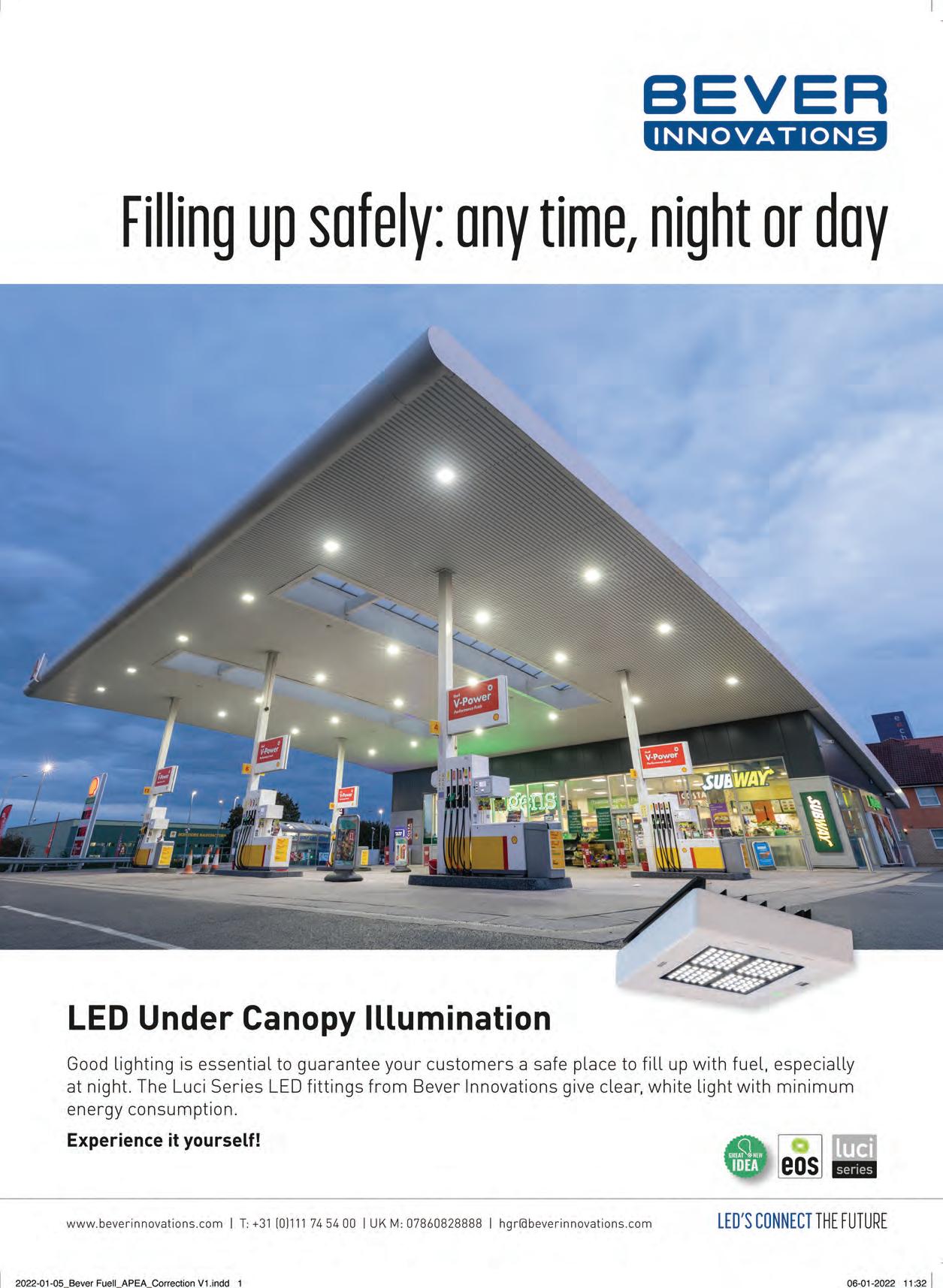
Excitement Builds for APEA Live 2022Here’s Your Event Preview
By Alex Boudry, APEA Events Committee Chairman
In just a few weeks on Thursday 17 November, the APEA community will congregate in Milton Keynes for our association’s annual showpiece occasion.
Moreover, in my opinion, APEA Live is now the UK’s leading annual event in the downstream forecourt market, and I cannot remember being as excited to attend an edition as I am right now.
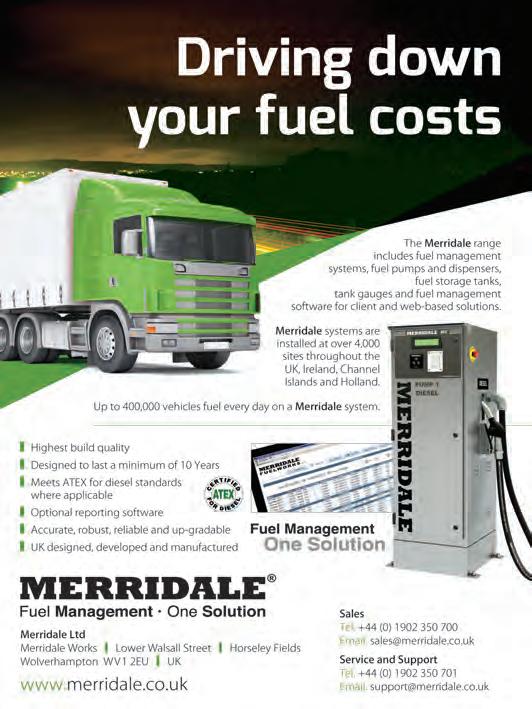
2022 will have it all…from big-draw Conference speakers (including senior representation from Government / Department of Transport and the PRA), to the launch of a brand new content stream, to a sold-out Exhibition floor featuring top brands, as well as A-list entertainment at our glittering Awards.
Here’s my preview for this not-to-be-missed event, and why I submit that you should be with us holding your morning coffee from 10am, right through until the late-night close of our Awards (perhaps with a glass of something stronger in your hands, by then). If you haven’t already, please book your free delegate pass for the event’s daytime Exhibition and Conference at www.apealive.co.uk/2022/tickets. This is also where you may also be able to purchase one of the last remaining seats at the evening Awards!
So, what’s in store this year? APEA Live 2022 by day
The year has flown by, and I can still vividly recall the buzz on the show floor at the daytime Exhibition and Conference last year. 12 months ago, the industry emerged from lockdown and came together for the first time. It made for such a positive atmosphere, from a both a commercial and human networking perspective. This provided us with an incredible platform from which to build your 2022 edition.
Alongside organisers F2F Events, the APEA Events Committee have been doing just that. Our thanks also to Elaflex, who return as headline sponsors of the daytime elements.
Here are my three big reasons to spend 10am-4:30pm at APEA Live’s Conference and Exhibition on 17 November…
1. Top quality speakers – including UK Government and the PRA – will debate the industry’s central challenges.
This year’s Conference line-up features big-hitting speakers on the market’s most pressing talking points.
I’m delighted to confirm that Peter Campbell, the Financial Times’ Global Motor Industry Correspondent, will return to Chair our Conference and guide you through 4 unmissable sessions.
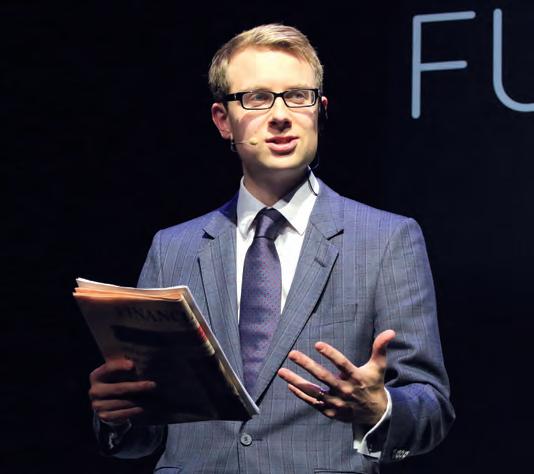
We’ll see senior representation from UK Government’s Department of Transport contributing to a panel session discussing the role low carbon fuels as viable, sustainable and attractive solutions for transport segments such as aviation,
Peter Campbell Financial Times’ Global Motor Industry Correspondent
42 APEA tel: 0345 603 5507 www.apea.org.uk Articles
marine and heavy-duty road transport. Confirmed panellists for this session also include Chris Gould (Energy Transition Lead at UKPIA) and Robin Futcher (Director – Hydrogen at Commercial Fuel Solutions Limited).
Following his popular appearance last year, the PRA’s Executive Director Gordon Balmer will return to provide an update from the association.
Balmer’s talk will follow a Regulator-focussed opening session from Jamie Thompson (Chair of European CEN Standards Committee on Petrol Station Equipment), William Knatchbull (Petroleum & Alternative Fuels Group Manager

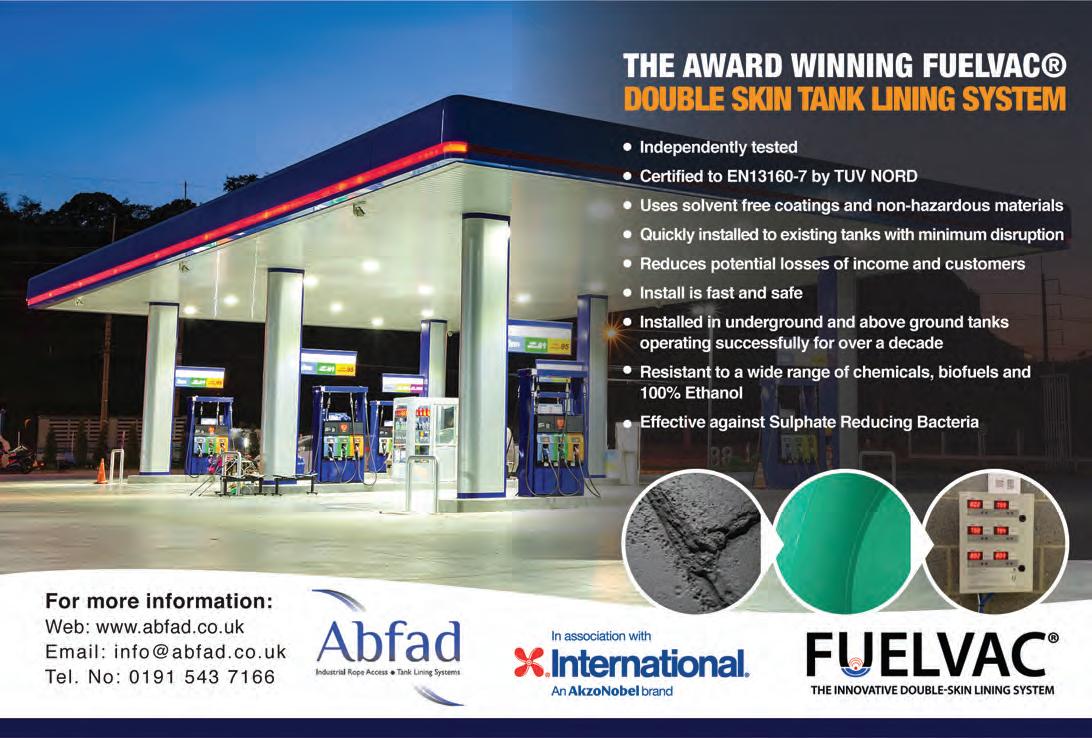

43 APEA tel: 0345 603 5507 www.apea.org.uk Articles
Robin Futcher (Director – Hydrogen at Commercial Fuel Solutions Limited
Chris Gould (Energy Transition Lead, UKPIA
at London Fire Brigade) and Dylan Kavanagh (Vice President and Director at Olive Group), which will include an introduction to the APEA’s Online technical training.
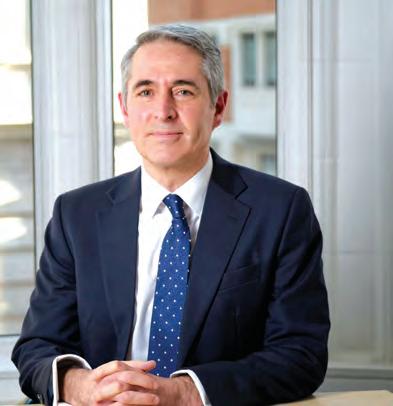

The Conference will close with our second panel session, which will examine the challenge of future-proofing forecourt infrastructure in the face of the considerable change. Experts from the world of forecourt property investment, design and retail will fill our panel, including Toddington Harper (CEO at GRIDSERVE), Nick Bywater (Associate Director – Retail Investment and Valuation at Christie & Co) and Robert Onion (Owner and Chairman, Circle).
This will be a Conference packed full of business learning and practical takeaways for all industry stakeholders. The full Conference programme is available at www.apealive.co.uk/2022/conference/programme.
2. A sold-out Exhibition floor, featuring the best suppliers in the business.
Leading brands will be showcasing their latest innovations at the APEA Exhibition. There are too many companies to name-check here, but please check them all out at www.apealive.co.uk/2022/exhibition/exhibitor-list.
One of the most pleasing and positive APEA Live trends in recent years has been observing the increased creative investment that exhibitors now make at our show. The bar keeps being raised regarding their displays, each year.
Our exhibiting brands have sensational products to talk to you about and are working hard to ensure they put on an engaging, educational show to remember.
Taking off my APEA ‘hat’, for just a moment… my business also participates as an exhibitor, so I can personally testify to the commercial benefits of the show. This is now, indisputably, a leading UK trade Exhibition. The show attracts the full spectrum of senior industry stakeholders and decision-makers, creating a unique experience on-site, where the diversity and calibre of conversation is unmatched.

3.
New for 2022 – ‘Fuel For Thought’ CPD Conference Theatre
We’re so excited to introduce the ‘Fuel For Thought’ content stream, to debut at APEA Live 2022.
This will be a brand new on-site theatre offering an exciting stream of fresh CPD learning from a selection of our leading exhibitor brands.
Whilst the APEA Conference centres on top-line strategy and trends, FFT will focus on the nitty-gritty, serving up inspiring quick-fire talks from industry innovators who have taken a problem, done their research and developed game-changing solutions.
The FFT theatre will be located within the event’s main catering and networking zone. This will be learning that celebrates the detail! Relevant to the core principles of the APEA community; an industry working together for a safer environment.
This will be education, within a fun, vibrant atmosphere; passionate people presenting researched-backed technical solutions.
Check out the full programme at www.apealive.co.uk; there will be 8 talks lasting up to 20 minutes, each. Talks will commence from 12:00 and occur every half-hour thereafter, with the final slot starting at 15:30.
(Bonus Reason) 4. Attending our Conference and Exhibition still costs you nothing!
Attending the daytime elements of APEA Live remains completely free to industry professionals. If you haven’t already booked your complimentary daytime delegate pass, please do so today at www.apealive.co.uk/2022/tickets.
APEA Live 2022, by night As the sun goes down and the doors close on our incredible daytime Conference and
44
Articles
APEA tel: 0345 603 5507 www.apea.org.uk
Robert Onion Owner and Chairman Circle
Nick Bywater Associate Director – Retail Investment and Valuation at Christie & Co
Gordon Balmer Executive Director PRA
Exhibition, I, alongside many others, will be making the annual ‘mad dash’ back to my hotel room to throw on my black tie for our industry’s most glamorous night of the year, the APEA Awards. Our thanks to Nupi Industrie Italiane S.p.A for returning as headline sponsors of this glittering occasion.
2022 is on course to see a record number in attendance, as over 600 industry VIPs will come together to recognise, reward and celebrate the year’s greatest company and individual achievements and, of course, have a cracking night in the process.
Your APEA Awards host, Katherine Ryan!
If you haven’t already heard, I’m delighted to confirm the huge news that this year’s host will be none other than Katherine Ryan!

Katherine is a Canadian comedian, writer, presenter and actor. She has appeared on a huge range of panel shows and sitcoms, and has
established herself as one of the leading stand-ups in the country. Katherine has appeared on ‘Live at the Apollo’, ‘Mock the Week’, ‘Have I Got News For You’, ‘8 out of 10 Cats’, ‘The Apprentice: You’re Fired’ and the Radio 4 institution ‘The News Quiz’, to name just a few. As well as her own Netflix stand-up specials, she wrote and starred in her own sitcom, ‘The Duchess’, on the platform. She’s been a contestant on comic challenge show ‘Taskmaster’, presented ‘How’d You Get So Rich?’ and appeared in BBC2’s transatlantic comedy ‘Episodes’.
It’s so exciting to have someone of Katherine’s calibre and talent hosting our annual Awards – roll on 17 November!
Those all-important 8 Awards…
At the core of this wonderful occasion are 8 prestigious APEA Awards.
It is imperative that these Awards represent the very best of our industry, each and every year. This objective demands that industry stakeholders take time away from their busy schedules to throw their hats in the ring!
Therefore, as Events Committee Chair, I would like to thank each and every company and individual that took the time to enter this year’s Awards.
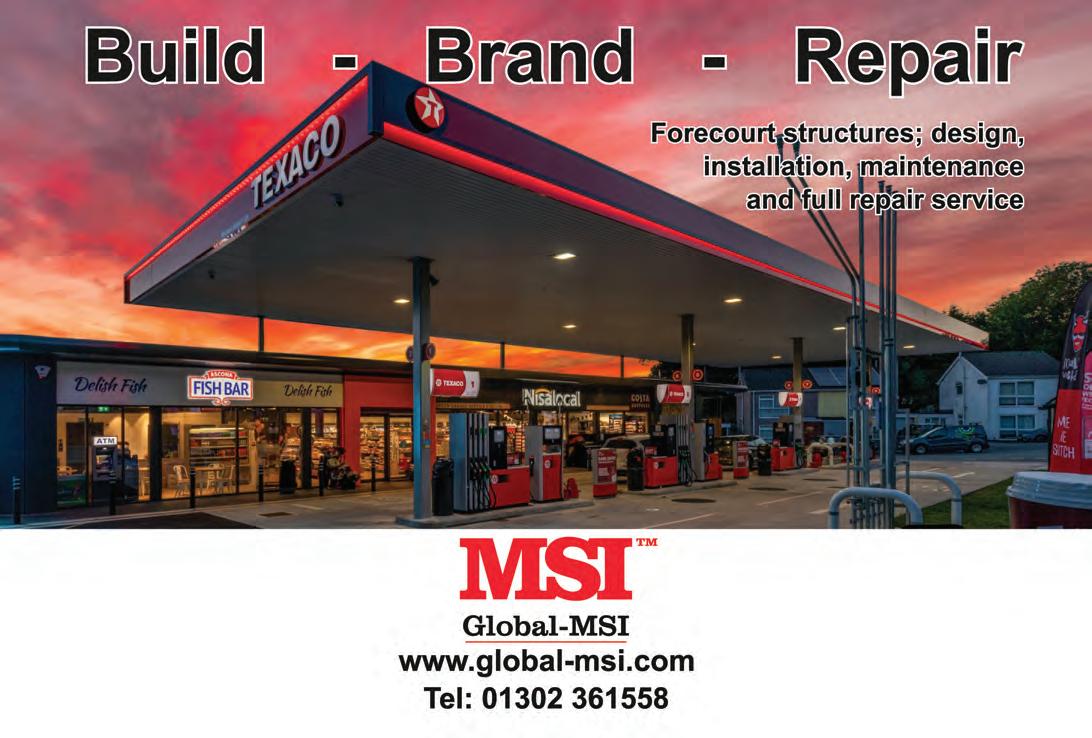
I’m pleased to report that we have an exceptional group of worthy finalists this year and an extremely healthy competitive to find our deserved winners.
To view all our finalists, head to www.apealive.co.uk/2022/awards. Thanks also to all our fantastic Awards sponsors – be sure to check them out on the website, too!
Last remaining seats…
At the time of writing, the Awards is close to selling out. If you have still to secure your seat, contact Event Director Tom Treverton on Tom@f2fevents.co.uk / 01442 289923 to see what’s available!
See you at Stadium:MK
APEA tel: 0345 603 5507 www.apea.org.uk
45
Articles
Extending your Forecourt Assets!
By Simon Procter B Eng (Hons), C Eng, MIET, MIMechE, MEI
The Tanks and Pipeworks Ltd team of professionals has served the downstream market with fuel services, installation and pollution control for over 20 years. Our reputation and portfolio has grown as we have diversified into emerging markets and new technologies and changed to meet environmental demands and legislation driven by policy change and greater environmental awareness.
Assisting our portfolio of customers with the pace of change using our growing resources, equipment and knowledge base.
We provide products and services to government organisations such as Ministry of Defence, major fuel distribution companies, downstream independent fuel traders and international partners.
There are currently several key areas to the business under our trading banner FASSUK:
TRI-LINE composite lining and leak detection.
TRY-LINE system (UK Patent No.s GB 2 474 038 B and GB 2 474 096B) is constructed to BS EN 13160-7 2016 Standard and complete with third party inspection to EEMUA 159.
The TRI-LINE tank lining system is well established within the UK. Extremely robust it is currently being used on our multi-year contract by FASS-MALTA to refurbish (up cycle) the main fuel storage tank farm for the island at HAS-SAPTAN (these are horizontal cylindrical steel storage tanks 10000mm in diameter and up to 166000mm long if you like big numbers).
The multi-layer composite patented tank lining system renews existing tanks avoiding costly and uneconomical tank replacement by providing a new hygienic non-corrodible material over the complete internal surface area of a fuel tank, incorporating a vacuum based, continuously monitored leak detection system for total confidence. We use the very latest fuel resistive resins in conjunction with tough heavy duty layering and provide a 10-year warranty on any leak detection lining system that we install and commission.
Composite systems are now well established being used in aerospace for aircraft, rockets and space capsules having unique multi-purpose application for solving engineering problems.
Up-cycling
Our construction division specialises in building/up-cycling petrol filling stations - lining the existing tank farm, refurbishing any above ground tank assets and renewing the buried pipework with non-corrodible single- or double-contained fusion welded pipework systems.
The forecourt work includes drainage/separators, fuel pump replacement and upgrading canopies and signs. The specialist construction teams provide concrete, tarmac or block paved finished surfacing depending on contractual requirements.
As-built drawings and pump to tank charts are available on completion/handover.

46 APEA tel: 0345 603 5507 www.apea.org.uk Articles
Double contained fusion welded pipework installation
Tank Entry
There are many requirements that utilise our skill sets when working on and around petrol filling stations which include hot works for plating/tank repair and any manway modifications required, and each and every job requires a full team of confined space trained technicians and a site/job specific set of RAMS.
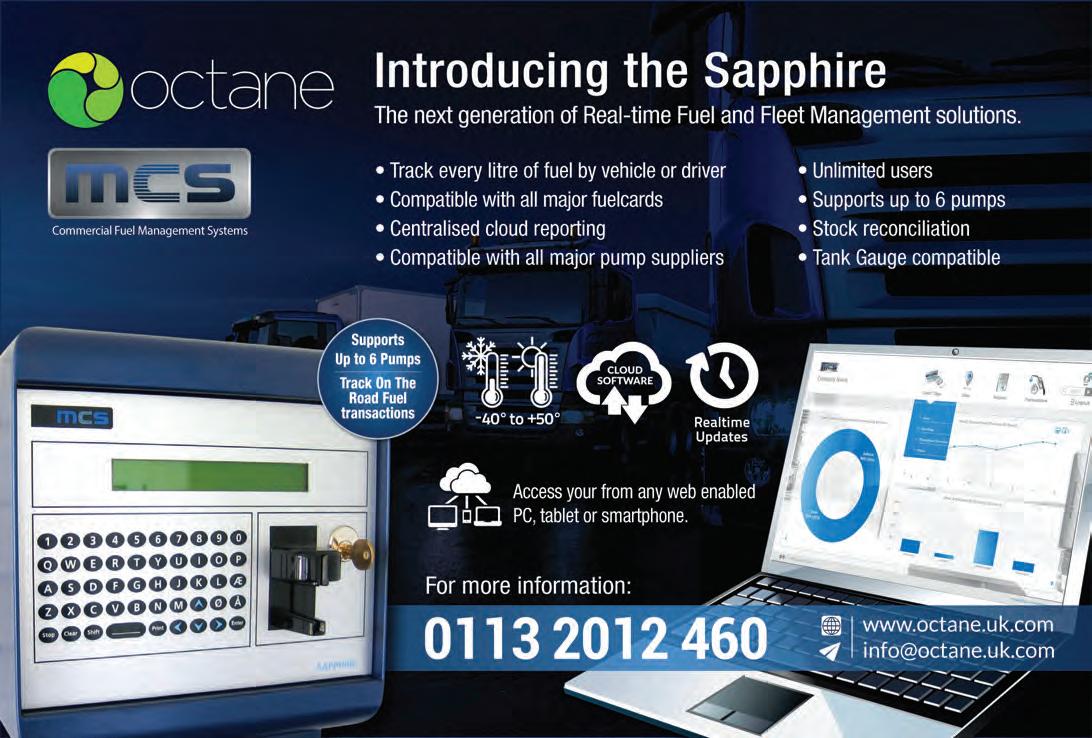
There are many people within the industry that have not entered a buried tank or confined space, so just to give you a brief window into a tank entry from my perspective; my first tank entry was at the age of 18yrs back in 1983 working for a steel tank manufacturer. Our base line products were petrol tanks for filling stations which were repetitively produced like bean cans.
When you first enter a tank you are surprised at how large the inside of a tank is (back then most storage tanks were typically 2743mm in diameter). Squeezing through a 450mm opening without a harness (circa 1983) as in the production environment, the tanks were automatically rotated so the entry and egress was more or less accessible from ground level so you could step in and step out of a tank.
I recently entered a very old buried tank on a petrol filling station to carry out an internal inspection which was fitted with a 450mm diameter manway entry awearing a harness with safety line and escape kit - I was very glad that I am still built like an 18 year old bean pole. Fortunately, now the Health & Safety Executive recommend manhole entries to be around 600mm minimum diameter for new tanks and have done since 1990’s. The British and European Standard
for buried steel tanks details the minimum manway size of 600mm and even gives you all the dimensions which is very useful. People are built in many different shapes and sizes and 600mm diameter manway entries allow reasonable tolerance. If you supply to the UK M.O.D. you will be aware that the manway size for entry and egress is 800mm minimum size which allows for an operative wearing a Hazmat suit with full breathing apparatus to enter a tank.
So, for tank entry you need training with certification, experience, RAMS which include a rescue plan and a very competent team of colleagues supporting you.
Within an old petrol tank the first feature you see will be a rust bloom across the tank top and dished ends (this is normal, all petrol tanks have surface rust inside). Sometimes you see the steel mill certs attached, the tank manufacturer’s name in white or yellow marker and even the name of the dished end manufacturer. You also get to see all the mistakes 30 years on - for example stitch welded striker plates; these can set up a cell resulting in electrolytic action along the tank bottom centreline, and under the striker plate there will normally be severe pitting and sometimes holes. So if you think of how a car battery works the contaminated water at the tank bottom is your electrolytic fluid and you have an anode and cathode between the plates and you eventually get pitting and movement of ions across the small craters followed by more pitting, this will accelerate the processso add into the mix some warm fuel - heat is a catalyst for corrosion and you can understand how the process of corrosion
47 APEA tel: 0345 603 5507 www.apea.org.uk Articles
plays out with the steel alloy breaking down into its original elements (I have to add 30 years ago electrolytic corrosion processes were not generally known by steel fabricators and it’s probably not a topic of general discussion during tea breaks!).
TRI-LINING old, buried fuel tanks is so successful because you break the corrosion process by adding leak detectable non-corrosive layers that can be easily cleaned and visually inspected and monitored continually 24/7.
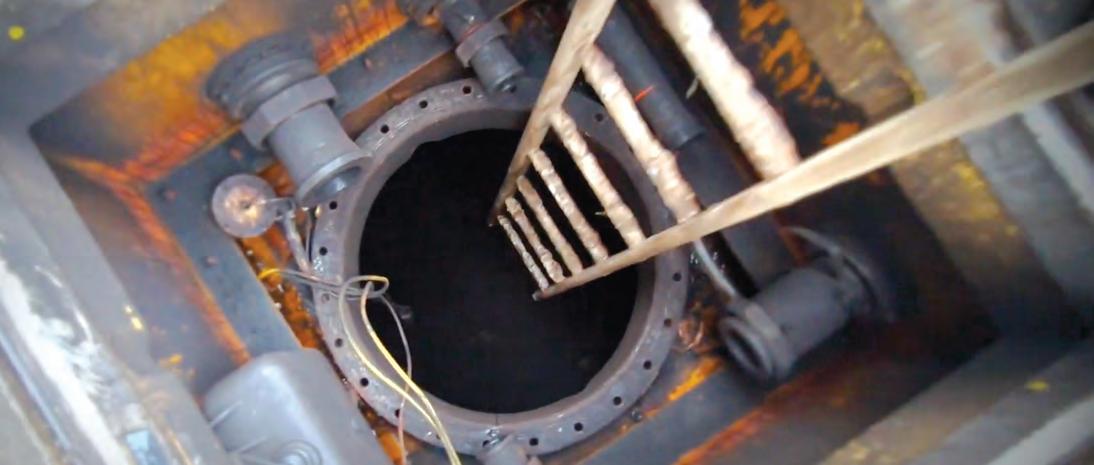
Inspection and Testing
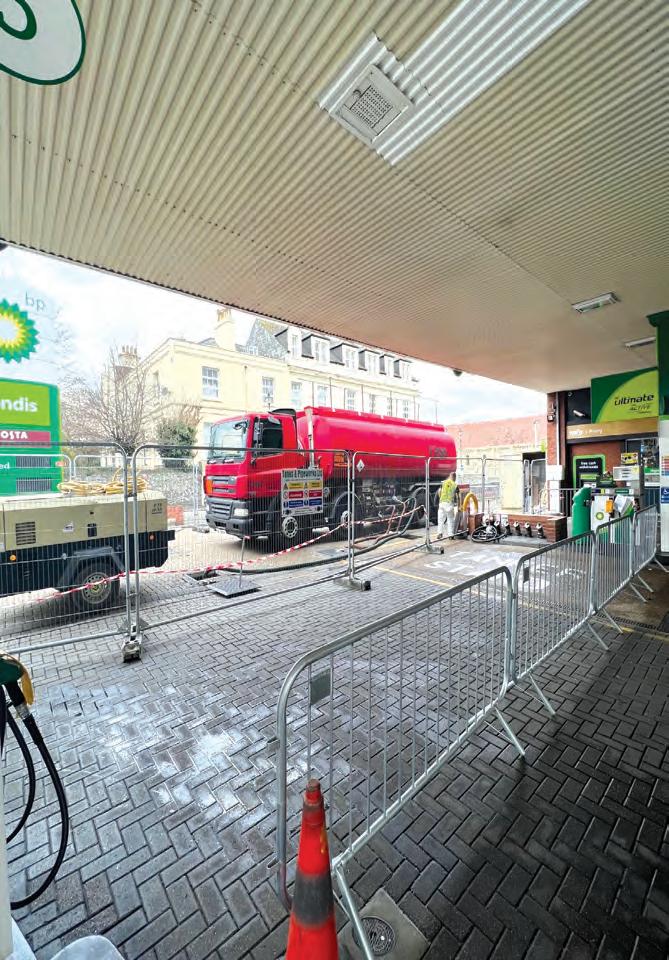
FASS-UK regularly carryout above ground and buried tank inspection and testing. Our teams are equipped with testing rigs both for pipework and fuel tanks, with ultrasonic thickness testers and we have a specialist scanning team equipped with Leica laser scanner and software that will three dimensionally scan and map out a tank profile. This enables us to obtain an exact measure of a tank before and after TRI-LINING to produce laser accurate calibration tables for setting up gauging systems and producing dipstick charts to give an accurate record of a tank’s internal condition.
Dealing with Diesel Tanks
Diesel tanks have less of a rust bloom to the sides and ends but can get very sludgy and contaminated at the bottom. Biomass and microbial contamination build up is becoming a regular maintenance issue and corrosion can be found along the tank bottom if the tank is not cleaned internally as part of a service programme. Biomass and microbial contamination have increased with the addition of renewables within fuel, and similar contamination is also seen on generator and boiler tank installations. Contamination can also be found within the pipework system. So, when carrying out a tank clean you must also flush out the pipework as part of a filling station deep clean plan.
48 APEA tel: 0345 603 5507 www.apea.org.uk Articles
Tank manway entry after cleaning and Gas Freeing
Fuel pump island - construction
There are many ways of managing the issue and at Tanks & Pipeworks “FASS-UK” we offer a full man entry tank clean and specialist floating suction units installed through the tank suction flange along with filtration systems that will sit within the manway chamber of a forecourt.
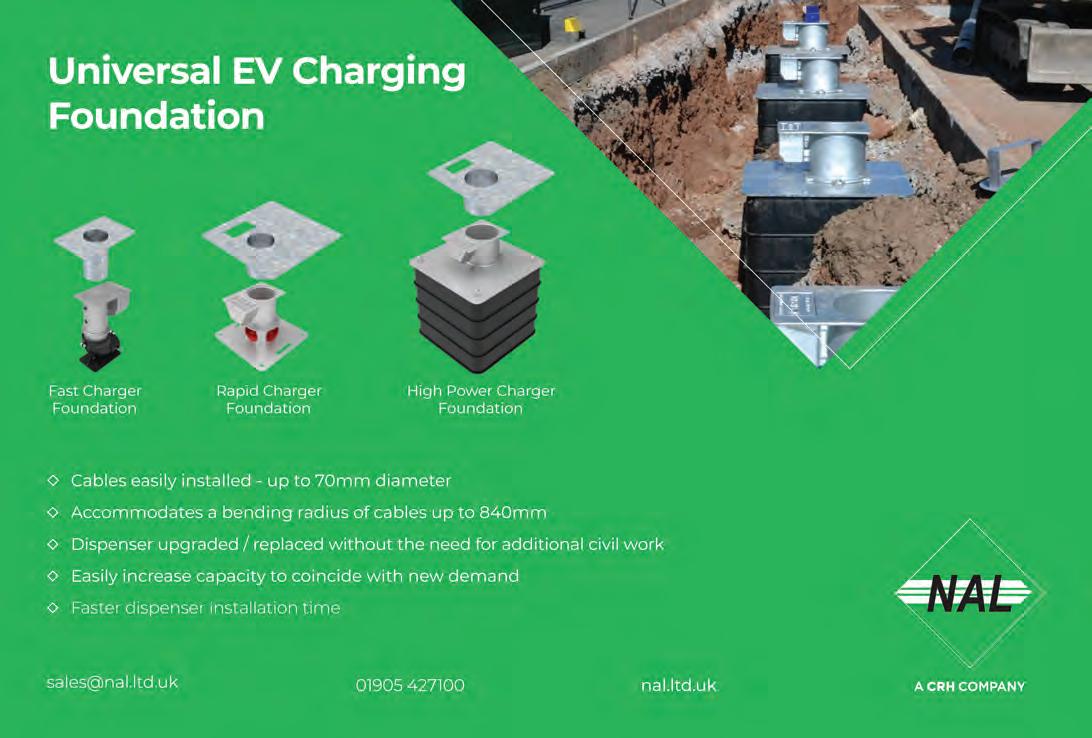
Our filtration is a miniaturised version of the heavy-duty filtration units we carry on our road tankers for fuel polishing. Particles move randomly within the fuel flow so you need filtration with a decent surface area to trap as much unwanted debris as possible. We also consider magnetic fields within the filtration as in nature and the physical world magnetic fields have great influence. We can remove unwanted ferritic material and also influence particles to stick or break away. This can be demonstrated by basic electrostatics or magnets in the way they attract or repel, dependant on how you choose to set them up.
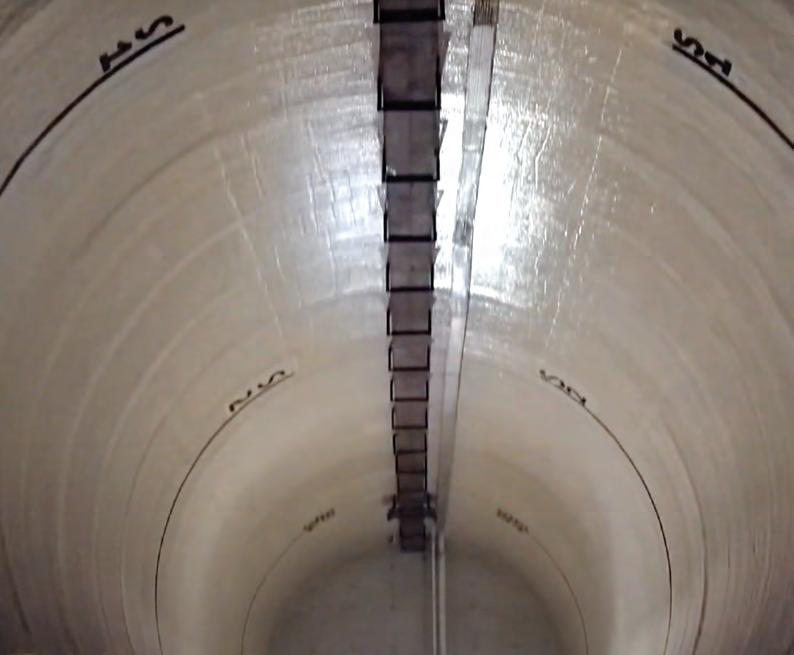
49 APEA tel: 0345 603 5507 www.apea.org.uk Articles
TRI-LINE tank system
Floating Suction units

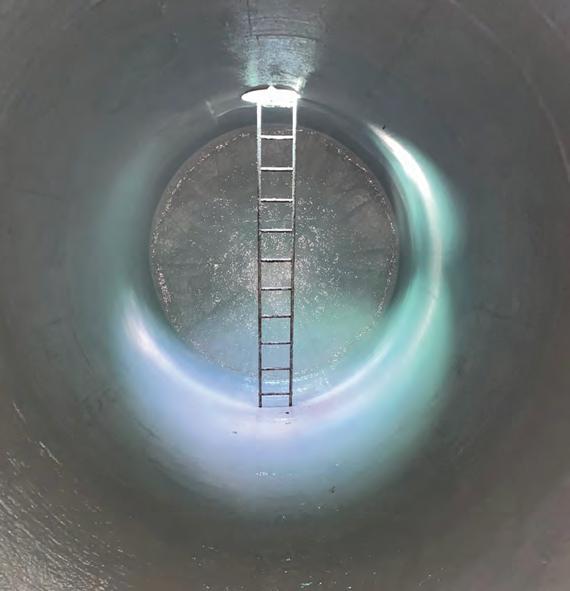
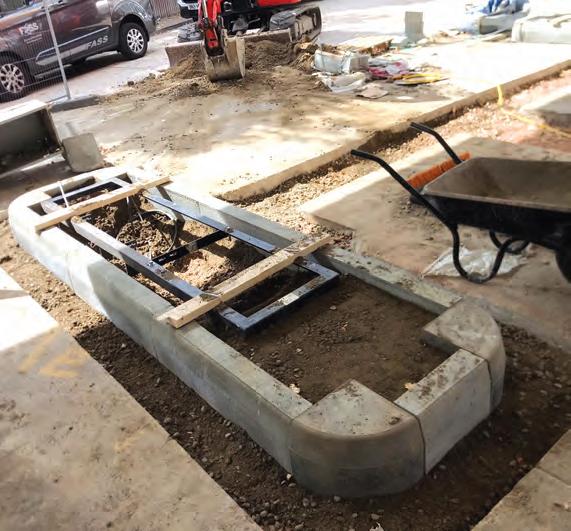

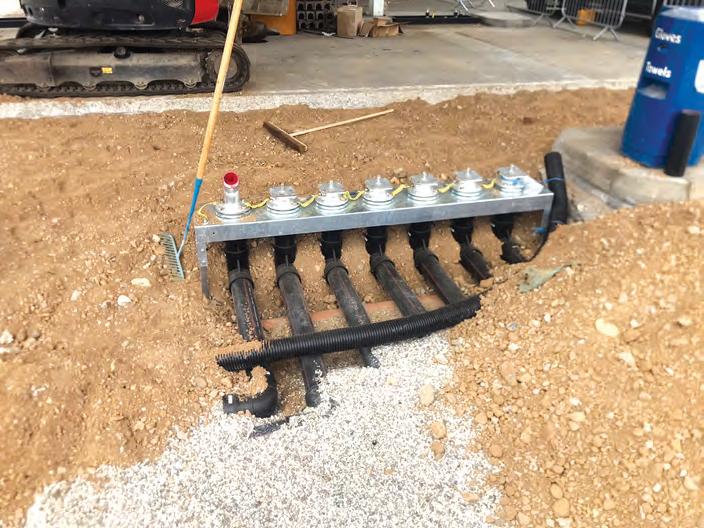
Our floating suction units very simply sit below the surface of the fuel and track the fuel column as the diesel tank is filled and emptied so that the better quality fuel is extracted from the tank. Floating suction units, as in aviation fuel tanks, are used in conjunction with filtration for when the floating suction arm is operating in the lower third of the diesel tank.
If we can be of service to your business or operations please do not hesitate to contact our Sevenoaks offices - phone: 01474 855587 or email: office@fassuk.com
50 APEA tel: 0345 603 5507 www.apea.org.uk Articles
Installation
- confined space entry Offset fillpoint installation
pump islandconstruction
TRI-LINE
tank system Pipework
PPE
Fuel
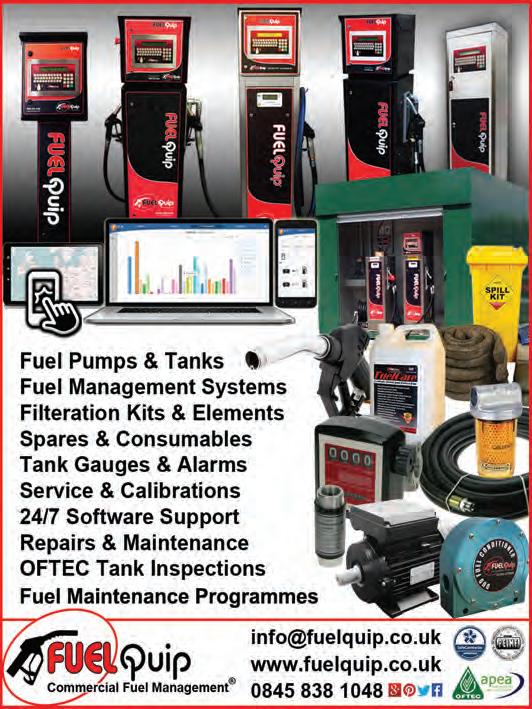


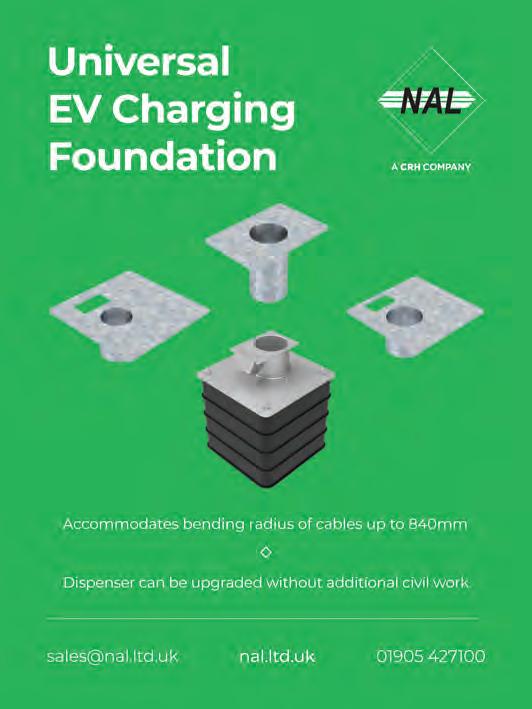
Co-op to sell 130 petrol stations for over $500 million
Britain’s The Co-operative Group is looking to offload a part of its fuel retail network to improve its financial situation.The Co-op Group is in talks to sell 130 of its petrol stations for £450 million ($528M) as the retailer looks to reduce its debts in anticipation of economic difficulties.
Bankers at the investment bank Rothschild are understood to be advising the Co-op on a sale, which is probably to a buyer that is already active in fuel retailing.
Sources said the business was expected to be sold to a trade buyer, with a deal potentially being agreed upon in the coming weeks. Raising a further £450m would help tackle the group’s net debt, which soared to £920m, according to its last set of results, up from £695m in 2019 and £550m in 2020.
The group, which owns funeral homes and insurance as well as supermarkets, is hoping to trim its portfolio and be better prepared for a possible recession.
L-Charge launches super-fast mobile EV-charging service trial in London
The manufacturer of ultra-fast off-grid charging solutions will start a new test for its mobile EV charging truck powered by clean fuels.
Electric vehicle charge point manufacturer L-Charge has announced the start of field trials for the company’s ultra-fast mobile EV-charging service in London from the beginning of September 2022. The test welcomes EV drivers with iPhones to join the programme by filling out the form, which will make them eligible for discounts and offers.
This initiative comes after the firm recently completed a road tour through Europe with the intention of measuring mobile charging demand in cities that have a distinct shortage of EV charging infrastructure. Whilst charging EVs, the brand collected insights about the obstacles owners face.
Previous survey results from L-Charge show that only 34% of EV owners are completely satisfied with the existing charge point
network, the associated output rates of charge and the charging tariffs on offer. Around 56% of EV owners said they are unsatisfied with the current charging infrastructure. Notably, over 90% of those satisfied have never undertaken long-distance journeys in their EVs. 63% of EV owners said they are forced to amend their travel routes because of the lack of charging infrastructure. More than 300 EV owners have participated in the survey so far.
L-Charge is a UK-based company that designs and produces ultrafast off-grid EV charging solutions that are powered by clean fuels. The company’s mobile EV charging truck is fitted with a mini-power station that uses LNG, hydrogen or a mixture of the two fuels to produce electricity onboard, allowing it to roam freely around the city and be called to a convenient location when needed via the app, in the same manner as ordering a taxi. The mobile charging truck provides ultra-fast charging – from 0% to 80% in 15-25 minutes.
Fire at Morrisons petrol station in Dorset
A fire broke out at a Morrisons petrol station in Weymouth. A picture shown online shows flames inside the station off Dorchester Road, Weymouth.
A number of fire engines were at the scene. It is understood a motorhome caught fire while it was filling up at the pumps; the front end of the vehicle is completely burnt out. It is believed the occupants escaped from the vehicle unharmed.
Firefighters were called at just after 9am. Dorchester Road in the area of Morrisons was closed to allow emergency services to work at the scene although traffic was being allowed out of Morrisons car park. Three fire appliances were at the scene along with police. Firefighters were seen spraying water on the canopy of the petrol station to cool the area down.
District fire commander for Weymouth and Portland, James Plumley said: “Crews have been called to a significant fire of a large camper van. The cause at this moment is unknown. “Significant damage has been caused to the forecourt, to the roof and to the petrol pumping equipment. It has completely destroyed the camper van.
“Crews from Weymouth and Dorchester are here and an aerial ladder platform from Weymouth is en-route. There are about 18 to 19 firefighters on the scene.
“Crews have done an excellent job at stopping the fire from spreading.” A Morrisons spokesperson said: “Our petrol station will remain closed until further notice but thankfully no-one was hurt. The main store is now back open too.”
52 APEA tel: 0345 603 5507 www.apea.org.uk UK News
News
Both firms will study opportunities for construction and operation of co-branded sites and alternative fuels infrastructures in the country.
NewLink and Chevron have signed a memorandum of understanding (MoU) to explore potential brand licensing opportunities for Caltex-NewLink branded service stations and alternative fuels infrastructures in China. According to this agreement, the parties will explore opportunities to combine the strengths of Chevron’s Caltex marketing brand and Techron fuel additive, with NewLink’s construction and operation capabilities for new energy infrastructure.
Both firms have agreed to promote the construction and operation of Caltex-NewLink stations and alternative fuels infrastructures in the Chinese mainland, except for Guangdong and Tianjin. The MoU may include potential brand licensing opportunities in the Caltex fuels retailing business, and the sale of Techron fuel additives and a range of finished lubricants products.
“NewLink is a leader in digital energy service in China, with multiple competitive advantages in technology, network and services. We believe that exploring opportunities to combine the complementary strengths of both parties will enable us to provide Chinese customers with superior fuel and energy supply experience,” said Stanley Song, President of Greater China at
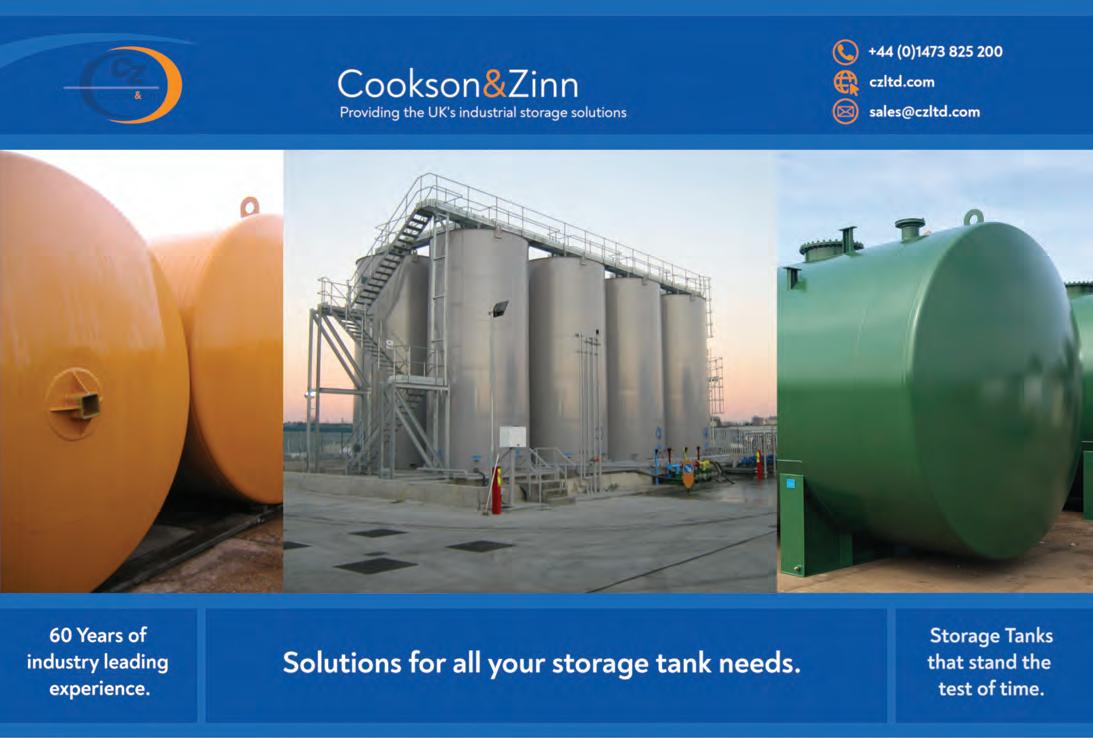
Chevron International Fuel & Lubricants. With China’s transition towards peak carbon emissions and carbon neutrality as well as the digital transformation of energy services, the two parties will explore potential opportunities to promote the construction and operation of alternative fuels infrastructures, which may include the supply of fuel, natural gas, electric vehicle charging and battery swap services.
“The collaboration between NewLink and Chevron will combine the experience from the global energy industry with the innovative practices of digitalized energy services in China, which we believe will enhance NewLink’s capability of serving the entire value chain of transportation. We hope to start the cooperation with Chevron as soon as possible, so we can support the development of integrated energy services and high-quality growth of the transportation energy industry,” added Dai Zhen, Founder and CEO of NewLink.
Service stations in China are transforming to expand their retail offerings, with the addition of commercial facilities such as convenience stores, catering, and automotive aftermarket services. NewLink will focus on upgrading its energy retail stations, strengthening its brand image, augmenting alternative fuels offering, improving its digital operation, and diversifying business models.
53 APEA tel:
International News
0345 603 5507 www.apea.org.uk
NewLink & Chevron to develop joint service station network
Booster expands mobile fuelling services to four markets
The company has extended the operations of its energy delivery platform to 13 major markets across the United States.
The tech-driven mobile energy delivery company Booster has announced its expansion across the United States. The company recently launched in three new markets — Portland, Oregon; Philadelphia; and Boston — and will be in a fourth, Phoenix, in October. The firm continues to scale up operations and expand its serviceable range to meet growing demand from large-scale enterprise customers.
Phoenix will mark its thirteenth major market following its recent expansion. In total, the brand currently has offices in Boston, Dallas; Orange County, California; Nashville, Tennessee; Philadelphia; Portland; Richmond, California; Sacramento, California; San Diego; San Jose, California; Seattle; and Washington, D.C.
“We are thrilled to establish a coast-to-coast presence and launch operations in these four new markets. Given the shifts in the global
energy landscape — rising fuel costs, growing challenges and delays around wide-scale electrification, concerns about supply chain disruption — enterprise customers are increasingly looking for reliable energy delivery who can help reduce these pain points. Energy-as-a-service will become even more critical as we navigate these ongoing challenges,” said Frank Mycroft, Co-founder and CEO of Booster.
The new markets enable Booster to deliver tens of millions of gallons of fuel, with plans to increase growth and volume in Philadelphia, Boston, and Phoenix by the end of the year.
“We expect to see accelerated growth across these markets, with several new market launches planned for 2023. None of this growth would be possible without the commitment of our customers, and the dedication and collaboration of our partners to further expand the Booster network. We are thrilled to help our customers optimize their fleet operations to best serve their customers by maximizing their vehicle and human capital assets,” added Amy O’Neil, Chief Operating Officer at Booster.
Air Liquide to build first 24/7 hydrogen station
The project is a joint collaboration with the ITOCHU Corporation, set to be constructed in the Fukushima Prefecture and scheduled to be operational by 2024. Air Liquide Japan and ITOCHU Corporation have announced a joint project to co-develop the first hydrogen refuelling station for large commercial vehicles that operates 24/7, 365 days of the year. Construction is set to begin in the coming days in the city of Motomiya, Fukushima Prefecture, and is scheduled to be operational by the first half of 2024.
The initiative is part of a memorandum signed by Air Liquide, ITOCHU Corporation and ITOCHU ENEX in February of 2021 for the strategic collaboration on the development of a hydrogen value chain. The facility will serve large FC commercial vehicles and offer other amenities such as car wash and a rest area for drivers.
In addition, a demonstration project is taking place in Fukushima
Prefecture to establish and implement energy management systems for the popularisation of electric vehicles. Commercial Japan Partnership Technologies is the company that leads this project and the new hydrogen refuelling station is set to supply the alternative fuel to some of the commercial vehicles operated by the firms that are taking part in this demonstration.
This project is in line with the hydrogen/fuel cell strategy roadmap established by the Ministry of Economy, Trade and Industry in Japan, which one of its goals is to open hydrogen refuelling stations in 320 locations by 2025.
All three companies will continue to work together to find new opportunities for hydrogen refuelling stations. Similar concepts are expected to be rolled out along with a highway to attract more large-scale commercial vehicles to refuel at these sites.
TotalEnergies opens first EV charger
TotalEnergies Marketing Ghana has commissioned its first Electric Vehicle (EV) charging unit in Ghana. This is part of efforts to boost the increasing demand and usage of electric vehicles in the country.
Managing Director of TotalEnergies Marketing Ghana PLC, Olufemi Babajide in his address indicated that the EV charging unit is the first in West Africa and serves as a momentous contribution to the automotive industry. The charger is located at a station in Accra.
“The demand for supporting new types of mobility comes from all over the continent. All countries can count on TotalEnergies to support them in the deployment of adapted infrastructures. We can respond on a case-by-case basis thanks to our wide network
of service stations throughout the territory and by relying on solid partnerships,” said Jean Philippe Torres, Senior Vice President at TotalEnergies Marketing and Services Africa.
Olufemi Babajide also announced that the company had introduced an added service of providing free wi-fi at some selected TotalEnergies Service Stations. Representative from the Ministry of Energy, Solomon Adjetey, speaking on behalf of the Energy Minister lauded efforts by TotalEnergies in establishing these charging units by stating that “data shows that currently there are over 1000 electric vehicles in Ghana, and the deployment of these charging units at TotalEnergies service stations is a step in the right direction”.
54 APEA tel: 0345 603 5507 www.apea.org.uk International News

Maxol expands independent network with new opening
Maxol has enhanced the reach of its independent dealer network by opening a new service station in Kilkenny.
The new forecourt is operated by John Eivers, owner of Spar Irishtown Service Station in the same location, deepening the relationship with the entrepreneur that started in January 2022 by the upgrading of its facility and installation of the eye-catching new canopy with the Maxol branding.
With over 30 years industry experience, Eivers is no stranger to the forecourt convenience retail business. Through the Maxol Fuels You Can Trust programme John is assured that Maxol will always deliver quality fuel on time.
“The switch to Maxol has been more than rewarding, and not just in terms of sales but also in terms of future proofing the business. It was vital to partner with a renowned Irish business that has invaluable knowledge and an excellent track record in retail convenience and forecourt infrastructure, all of which Maxol has in abundance,” said Eivers.
In the last year, the company has partnered with seven new independent dealers, enjoying benefits such as efficient and on time fuel deliveries, dedicated Regional Manager and support team, forecourt design and development expertise, Maxol Lubricants range, marketing support, fuel card network partner, customer standards and excellence programme.
Shell & Raízen to lead ethanol conversion to hydrogen initiative
The firms have partnered with Hytron, USP and SENAI to develop production facilities and a fuelling station for buses to circulate around the University of São Paulo.
Shell and its licensee in Brazil, Raízen, have signed a cooperation agreement for the production of renewable hydrogen from ethanol. The other parts involved are Hytron, a subsidiary of the German Neuman & Esser Group; the University of São Paulo (USP); and the Centro de Tecnologia da Indústria Química e Têxtil (SENAI CETIQT). The initiative involves the construction of two plants for production and a fuelling station for buses to transport students around USP.
The partnership aims to validate the production technology through the plants, designed to produce 5kg/h of hydrogen and the implementation of a plant 10 times larger in the future. The buses used by students and visitors to the campus will no longer use diesel and traditional internal combustion engines but rather
hydrogen produced from ethanol and engines equipped with fuel cells. “This technology can be easily installed at conventional gas stations, without requiring changes in the distribution infrastructure, ensuring that hydrogen will be ready to fuel vehicles quickly and safely. The use of hydrogen is not restricted to the transport sector and will benefit other segments in Brazil, when it comes to replacing fossil energy sources,” said Alexandre Breda, Low Carbon Energy Manager of Shell and Vice Executive Director of the Research Centre for Greenhouse Gas Innovation.
The project is scheduled to start operating in 2023, with its aim set to the development of low carbon solutions for heavy transport with the first hydrogen ethanol fuelling station in Brazil and in the world. Hydrogen will be produced using biofuel supplied by Raízen and a technology developed and manufactured by Hytron with support from SENAI CETIQT’s SENAI Institute for Innovation in Biosynthetics and Fibers, and Shell’s funding.
Shell and Ohmium team up for green hydrogen solutions
The companies have signed a Memorandum of Understanding to cooperate on applications of the alternative fuel, markets, and project opportunities.
Ohmium International has announced it will collaborate with Shell India to evaluate hydrogen applications, markets, and project opportunities in India and globally. As part of the collaboration, both parties have intent to launch joint working groups to assess opportunities from technical, commercial and safety perspectives.
The collaboration is positioned at further elevating the oil company’s ambition to help build a global hydrogen economy by developing the most competitive opportunities in the production, storage, transport, and delivery of hydrogen to end customers.
“We plan to develop integrated hydrogen hubs to serve the
industry and heavy-duty transport to be a leading player in this space. This MoU with Ohmium is a step in our journey. We would like to work with Ohmium to make this a productive collaboration which would help us make our Hydrogen projects most competitive,” said Nitin Prasad, Chairman, Shell Group of Companies in India.
Ohmium is a green hydrogen company that designs, manufactures and deploys PEM Electrolysers. It provides a safe, modular, flexible, easy to install and maintain alternative to customised electrolysers. “We’re thrilled to collaborate with Shell to explore green hydrogen opportunities and solutions worldwide. Shell has demonstrated tremendous ambition to become a net zero carbon business by 2050 – we believe that green hydrogen is a critical component of that transition,” added Arne Ballantine, CEO of Ohmium International.
APEA tel: 0345 603 5507 www.apea.org.uk
56
International News
BP North America acquires EDF Energy Services
The purchase of the retail power and gas provider will help the oil company in its transformation to an integrated energy firm.
BP has announced the acquisition of EDF Energy Services, expanding its presence in the US commercial and industrial (C&I) retail power and gas business. Based in Houston, Texas, EDF ES is a supplier of power, natural gas and related services to C&I customers across the country with customers primarily consisting of large corporations and public entities.
EDF ES’s geographical reach and its set of diverse C&I customers will expand BP’s capability to deliver energy solutions and additional services directly to large end-user customers in new and existing markets. The acquisition also brings new opportunities for enhanced lower carbon integrated energy solutions, integrating with other BP businesses and capabilities that can support decarbonization goals.
“BP’s commitment to putting the customer first has helped make

us the largest marketer of natural gas in North America for the last 20 years as well as a top power marketer in the US. This acquisition will give customers access to new opportunities across the energy value chain and allow BP to provide integrated solutions that assist them in decarbonizing, managing energy spend, and increasing reliability,” said Orlando Alvarez, Senior Vice President of Gas and Power Trading Americas at BP.
Subject to regulatory approvals, the deal is expected to close by the end of the year. The agreement includes the purchase of EDF ES’s full retail operating capabilities.
“EDF ES is a leading retail power supplier in the US to C&I customers. We are excited to welcome the team to BP. This is exactly the type of high calibre business that will help drive BP’s transformation, giving more customers the secure, affordable and lower carbon energy they want while creating value for our shareholders,” added Dave Lawler, Chairman and President of BP America.
57 APEA tel: 0345 603 5507 www.apea.org.uk International News
Shell change in CEO
After ten years of leadership, Ben van Beurden will step down at the end of year as CEO of the global energy company. Shell announced that Ben van Beurden will step down as CEO at the end of 2022 after a decade leading the global company. Wael Sawan, currently Shell’s director of integrated gas, renewables and energy solutions, will become its next chief executive on 1st January 2023.
A dual Lebanese Canadian national, Sawan has held roles in downstream retail and various commercial projects during his 25year career at Shell.
“Wael Sawan is an exceptional leader, with all the qualities needed to drive Shell safely and profitably through its next phase of transition and growth. His track record of commercial, operational and transformational success reflects not only his broad, deep experience and understanding of Shell and the energy sector, but also his strategic clarity,” said Shell’s Chair, Sir Andrew Mackenzie.
“I’m looking forward to channelling the pioneering spirit and
Road tanker fire in village
The Federal Road Safety Corps (FRSC) said that a petroleum-laden tanker burst into flames in Badeggi village, along the Bida-Lapai road in the Bida Local Government Area of Niger.
Mr Kumar Tsukwam, the state Sector Commander, confirmed on Sunday that the incident occurred at about 7:30pm on a Saturday evening.
Tsukwam said that the tanker was conveying Petroleum Spirit to Abuja, adding that “while in motion, the tanker started leaking”. “The driver parked and tried to fix the leak.” A fire from a tea shop
passion of our incredible people to rise to the immense challenges, and grasp the opportunities presented by the energy transition. We will be disciplined and value focused, as we work with our customers and partners to deliver the reliable, affordable and cleaner energy the world needs,” said Wael Sawan.
Van Beurden, 64, went from LNG design engineer to CEO in a career at Shell that spanned nearly 40 years. Under his leadership, the company carried out the $53 billion purchase of rival BG Group in 2016, faced a historical global energy demand drop through the pandemic and started redirecting its efforts to become a multienergy player.
“It has been a privilege and an honour to have served Shell for nearly four decades and to lead the company for the past nine years,” said Ben van Beurden.
Shell said van Beurden would continue to work as an advisor to the Board through to June 30 next year, after which he will leave the company.
ignited, followed the trail of the leak, and set the tanker ablaze, as well as two other articulated vehicles.
Four people were involved in the incident, but they were all unhurt. He explained that the men of FRSC RS7.24 Bida, fire service personnel, and other security agencies were at the scene managing the situation.
Meanwhile, the sector commander advised drivers of articulated vehicles to always ensure the safety of their vehicles while on the roads to avoid unnecessary crashes or incidents.
Shell and H2 open new hydrogen service station
Shell and H2 MOBILITY Germany have partnered up once again to open a new hydrogen filling station in Wesseling. Drivers of emission-free fuel cell cars now have a further refuelling fuel station in the Cologne area, thanks to the equipment and technology provided by Linde.
The site was built thanks to the support from the country’s Federal Ministry for Digital Affairs and Transport via its NIP programme. H2 was responsible for the construction and operation of the new site with the oil company brand. For this, the company received 950,000 euros from the National Hydrogen and Fuel Cell Technology Innovation Programme (NIP) by the Federal Ministry for Digital Affairs and Transport.
NIP provides a public-private partnership framework for numerous hydrogen and fuel cell research projects in several industries and investigations. This programme aims to support the many products and applications of hydrogen and fuel cell technologies in an effort
to reduce CO2 emissions and therefore alleviate the impact of climate change.
With this new opening Shell confirms its commitment to the hydrogen business, aiming to become a leading supplier of green hydrogen to industrial and transport customers. In addition, the company operates a 10 MW PEM electrolysis plant in the immediate vicinity of the filling station for the production of green hydrogen.
Hydrogen offers the opportunity to expand the range of fuels available in the transport sector in a climate-friendly way. With the alternative fuel produced with renewable energy, climatedamaging CO2 emissions can be significantly reduced. While the operation of a hydrogen-powered fuel cell vehicle causes neither local pollutants nor carbon dioxide emissions, the advantage of vehicles powered by hydrogen fuel cells is short refuelling times for long ranges.
58 APEA
International News
tel: 0345 603 5507 www.apea.org.uk
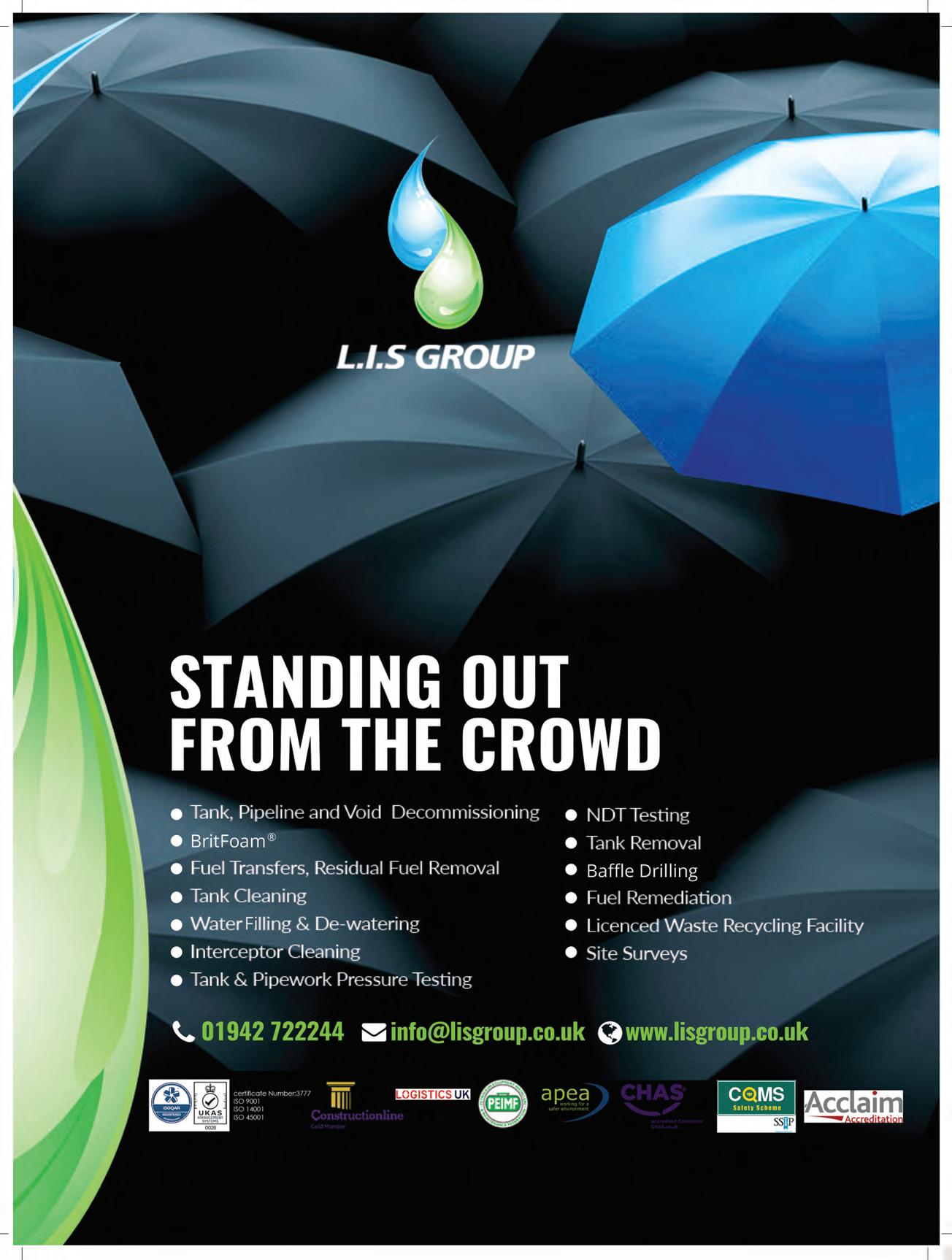
CrossAmerica to acquire fuelling assets of Community Service Stations
CrossAmerica Partners LP has announced that it has entered into a definitive agreement to acquire certain assets of Community Service Stations. The assets consist of wholesale fuel supply contracts to 39 dealer owned locations, 34 individual accounts and two commission locations.
The supply contracts include approximately 75 million gallons of fuel annually through such fuel brands as Exxon Mobil, Shell, Gulf and others.
“We are excited to acquire these attractive assets from one of the leading wholesale distributors in the Boston area. This acquisition expands our fuels business in the New England market with new dealers and strengthens our relationship with several of our major
fuel supplier partners,” said Charles Nifong, President and CEO of CrossAmerica Partners.
The acquisition is subject to customary conditions to closing, which CrossAmerica currently expects to be finalised by the fourth quarter of 2022.
It is anticipated that the acquisition will be financed with cash on hand and/or undrawn capacity under the company revolving credit facility. The Partnership expects the acquisition to be immediately accretive to distributable cash flow to limited partners.
The terms of the transaction were approved by the board of directors of the general partner of CrossAmerica.
Biden announces launch of $900 million EV initiative across the U.S.
The first round of funding will consist of $7.5 billion destined for the development of an e-mobility charging network throughout 35 states in line with the Bipartisan Infrastructure Law.
United States’ President Joe Biden was present at the Detroit Auto Show, where he announced the release of the first round of funding for a nationwide electric vehicle charging network.
The project involves a $900 million investment to develop the EV market across the country. The first round of financing will be destined to the construction of charging stations across 35 states.
The announcement comes after the signing of several law incentives to encourage drivers to transition from fossil fuel vehicles to the EV market. These include the Bipartisan Infrastructure Law, which involves a $7.5 billion investment for the deployment of the charging infrastructure; the Inflation Reduction Act and the CHIPS and Science Act, both legislations to support
the development of the industry in the U.S. “I’m pleased to announce that we’re approving funding for the first 35 states, including Michigan, to build their own charging infrastructure throughout their state. You all are going to be part of a network of 500,000 charging stations — 500,000 — across the country, installed by the IBEW,” said Biden in reference to the International Brotherhood of Electrical Workers labour union.
“It used to be that to buy an electric car you had to make all sorts of compromises, not today. Look, the great American road trip is going to be fully electrified, whether you’re driving coast to coast along I-10 or on I-75 here in Michigan, charging stations will be up and easy to find as easy as they are now,” added the President of the United States.
The White House aims to reach 500,000 charging stations and that 50% of all new vehicles sold to be electric or plug-in hybrid electric models by 2030.
Coca-Cola pilots new tap system at Shell station!
Coca-Cola in the Netherlands has launched a pilot of the new Compact Freestyle, a beverage tap system where consumers can fill their own reusable cup. In addition, consumers can personalise their drink and choose from 40 different drinks and flavour combinations, half of which are sugar-free. This compact tap system is designed for smaller locations on the go and at work and can be found at Shell Buttervliet gas station.
The new system has the potential to reduce the environmental impact of packaging and the pilot is part of a broader testing phase in several European countries. This new tap system was developed as an extension of the Coca-Cola Freestyle brand and portfolio. “The findings of our preliminary analysis show that the new Compact Freestyle can have lower CO2 emissions per dose than traditional packaging.
This is hugely encouraging, given the importance of acting on sustainability for our business, our customers and consumers. By encouraging consumers to use reusable cups or bottles, we can achieve optimal packaging and emissions reductions,” said Jaap Wassink, VP & Country Director of Coca-Cola Euro pacific Partners Netherlands.
The pilot will provide further insight into solutions that can be a part of reducing packaging waste and reducing the carbon footprint. This drinks-on-demand innovation aligns with The CocaCola Company’s ambition that by 2030, at least 25% of all beverages will be sold in refillable containers or beverage dispensers with reusable packaging. This pilot is currently also running in France, Belgium, Great Britain, and other markets in Europe.
60 APEA tel: 0345 603 5507 www.apea.org.uk International News
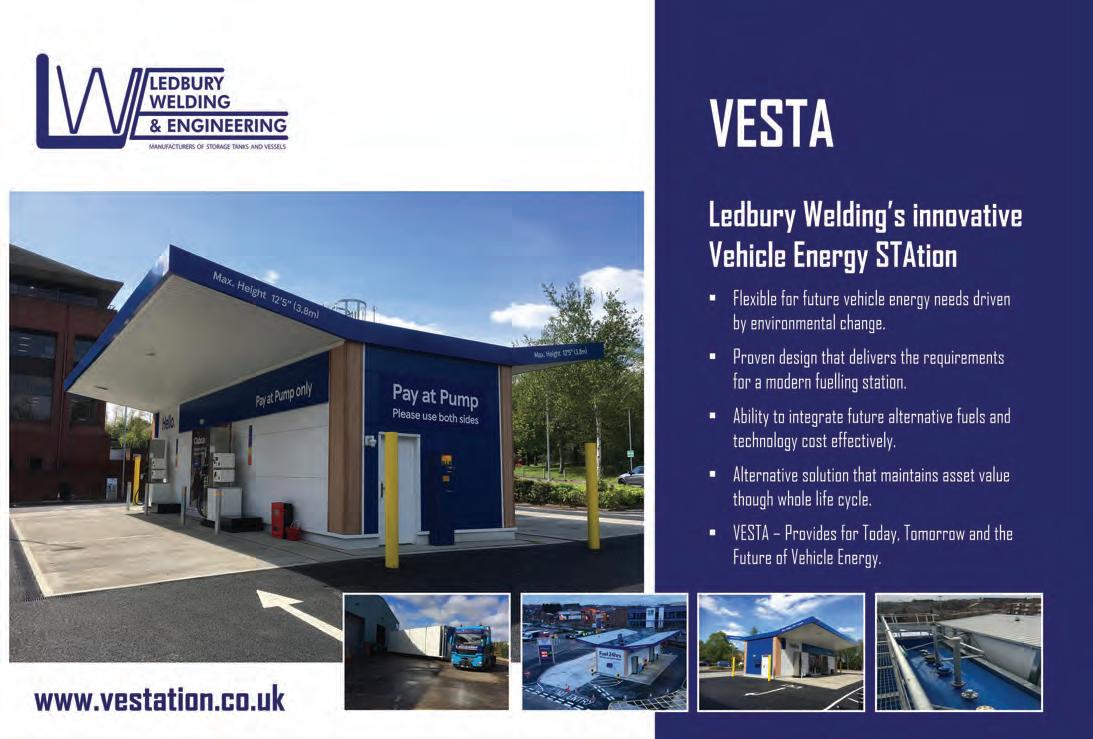


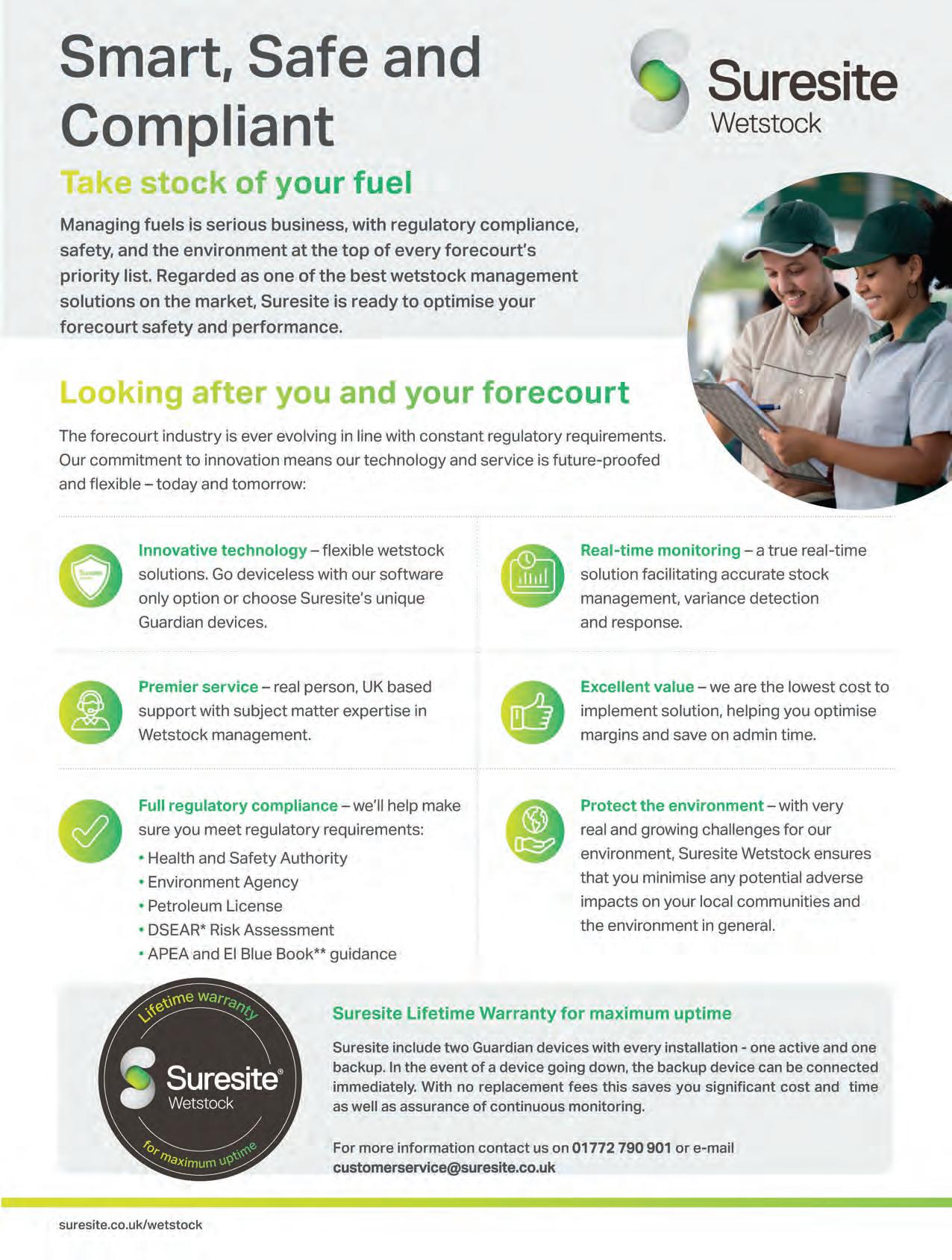
Press Releases
KC ProSupply UK changes name to MAKEEN Gas Equipment UK

In line with the rebranding of our parent company, from June 2022 KC ProSupply UK will be known as MAKEEN Gas Equipment Ltd. We are still the UK’s premier supplier of equipment and services to the UK’s LPG, Cryogenics and LNG industry and will continue to be here to support you with even better service.
For those of you old enough to remember, KC ProSupply UK has been subject to several name changes. Originally formed as a merger of 3 companies – RMS, Tank Gas Equipment, and Combined Gas Systems – the combined companies have supplied the UK gas market with services and equipment for decades and literally have over a hundred years of expertise and knowledge within our team.
For the younger generation, MAKEEN Gas Equipment UK Ltd. is the British branch of MAKEEN Energy’s gas equipment division. The company specialises in sales of gas-related hardware from renowned expert manufacturers, and even produces some tools and machines itself. Aside from this, the company offers a wide array of services to the British LPG and LNG industries, from repairs and refurbishment to installation and commissioning. MAKEEN Gas Equipment UK is based in Swansea but has other offices and warehouses around the UK.
In 2021, MAKEEN Energy started the process of streamlining the many different brands of its subsidiaries into a single, coherent MAKEEN Energy brand. The result is that KC ProSupply UK Ltd. will now be known as MAKEEN Gas Equipment UK Ltd. The only things you will notice is the change in Company name and logo –everything and everyone else is staying put.
As part of Makeen Energy, this gives us a major boost to the way we run our UK business. The backup we have gives us preferential bargaining powers enabling us to give the best prices and service to our customers.
“Being part of MAKEEN Energy has always given us an advantage in terms of access to global resources, contacts, and networks. This has allowed us to offer a wider array of solutions and equipment to our customers in the UK, with faster response times. Therefore, it is a natural progression to take the MAKEEN name and become part of a brand that is synonymous with quality, safety, and responsible business practices. But don’t worry – we are still as local as ever, retaining our decades of knowledge about the UK gas market.” – Terry Davies, General Manager, MAKEEN Gas Equipment UK.
64 APEA tel: 0345 603 5507 www.apea.org.uk Press Releases
DFS collaborates with Bottomline to offer a complete end-to-end fuel management solution
measure and monitor fuel tanks, offering protection against instances of loss by rapidly identifying the source and providing real-time analysis.
Together, DFS and Bottomline will offer customers one aggregated fuel management solution that can save retailers 5-10% in costs through automated operations and result in increased visibility into the fuel supply chain and optimised transportation routes.
DOWNERS GROVE, Ill., August 17, 2022 /PRNewswire/ – Dover Fueling Solutions (“DFS”), a part of Dover (NYSE: DOV) and a leading global provider of advanced customer-focused technologies, services and solutions in the fuel and convenience retail industry, today announced its collaboration with Bottomline, a Dutch supplier of software, planning and transport services in the oil and gas sector, to offer a complete, end-to-end fuel management solution.
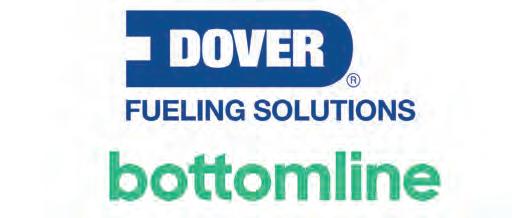
Bottomline’s fuel logistics software package and services enable customers to schedule, execute, administer, track and analyse the transportation of fuel from depot to fuel stations and end customers, helping to reduce logistical costs and strengthen the supply chain. DFS’s wetstock management services collect data to

“As fuel prices have risen, the cost associated with fuel loss has never been higher,” said David Crouse, President at DFS. “This collaboration helps safeguard businesses by serving as the missing link to a fully optimized fuel management system. We’re excited to offer customers increased transparency into transport logistics and on-site monitoring and provide them with the tools they need to measure performance, identify gaps and automate processes.”
“This partnership is an ideal collaboration for Bottomline,” said Léon van Rijswijk, CEO of Bottomline. “We’ve been looking to expand our business offering on a global scale and were drawn to Dover Fueling Solutions’ forward-thinking vision of taking fuel and convenience retail to the next level. Together we can ensure fuel is transported safely and efficiently – from when it leaves the depot to when it’s pumped into the customer’s car.”
65 APEA tel: 0345 603 5507 www.apea.org.uk Press Releases
Bottomline was founded in 1998 and facilitates safe, efficient and timely replenishment of fuel tanks that store products such as gasoline, diesel, propane, LNG and LPG. The Bottomline software suite operates via a five-part application:
•Scheduling – Forecasts fuel orders and automatically schedules onto available trucks.
•Execution – Showcases approved and scheduled trips on truck drivers’ handheld devices.
•Confirmation – Reviews delivered fuel loads and forwards data to Enterprise Resource Planning (ERP) for invoicing.
•Tracking – Provides real-time management of trip status and truck locations.
•Information – Measures and analyses performance.
The Bottomline software suite is now available to DFS customers via the company’s web portal interface. For more information on Bottomline, visit www.bottomline.eu.
Dover Fueling Solutions launches brand-new, EV charging systems for EMEA market
AUSTIN, TEXAS – September 7, 2022 –Dover Fueling Solutions (“DFS”), a part of Dover Corporation and a leading global provider of advanced customer-focused technologies, services and solutions in the fuel and convenience retail industries, is thrilled to announce the launch of its brandnew, high-powered, ultrafast Electric Vehicle (EV) Charging System – the Power UX™ 180 EV Charging System - in Europe.
The DFS Power UX 180 EV Charging System is specifically designed with a very small footprint to fit onto even the tightest of forecourts with sleek charge posts connected to a central power cabinet, which can be placed outside the forecourt area. This space optimized design presents site owners with more opportunities to incorporate EV charging onto their sites to attract EV drivers. The Power UX EV Charging System uses dual power distribution to deliver up to 180kW of energy to one EV charge post or simultaneously to two posts in power stacks of 90kW. The Power UX 180 EV Charging System is designed with reliability in mind, offering an enhanced user experience with ultrafast power output enabling EV drivers to obtain 100km of driving from less than 10 minutes of charging. The pioneering design of these high-powered DC Fast Chargers will provide the industry with a solution that is capable of delivering – safely and securely – rapid top-up in high transit locations.
The Power UX 180 EV Charging System is perfect for use at fuel retail locations, commercial and retail parking areas, and workplace environments. This EV charging system is compliant with applicable industry standards and interoperable with applicable CPMS platforms using OCPP for remote management and monitoring.

David McGuinness, DFS Director of Product Management, EV Charging, added, “DFS is truly enabling the forecourt industry in their energy transition with EV charging, alongside clean fuel dispensers and we are very excited to be able to bring this product to the market.”
For more information about the Power UX 180 EV Charging System, visit: https://www.doverfuelingsolutions.com/evchargers
For more information about eMove 360, visit: https://www.doverfs-events.com/emove
APEA tel: 0345 603 5507 www.apea.org.uk
66
Press Releases
DFS Product Marketing Director of EMEA, Soren Powell-Holse commented, “DFS is committed to offering products and solutions that support our customers’ diversified energy requirements. The new Power UX 180 EV Charging System is a clear commitment to clean energies and our announced strategy of support for fuel retailing customers with products and solutions for whatever energy they choose to retail.
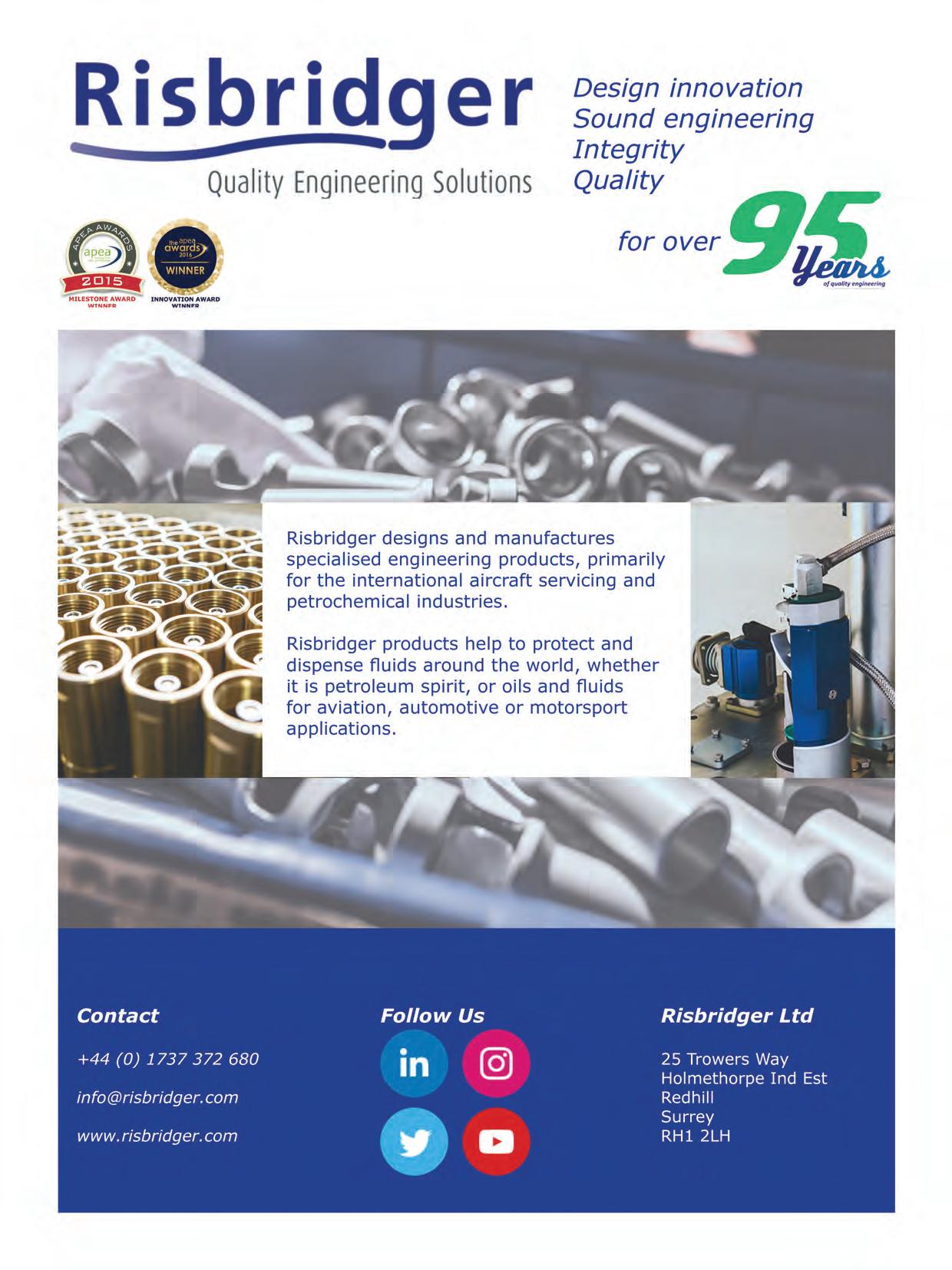
ISTOBAL focuses on innovation for lower water consumption in the face of droughts
•It develops recyclers capable of reusing up to 100% of the water used in each wash, making it possible to carry out vehicle washes during periods of water restrictions.
•It introduces constant innovations to save water in its vehicle washing equipment. Its latest-generation rollovers reduce water use by 40%, and its pressure jet wash solutions by 33%.
•The connectivity of your equipment with Smartwash by ISTOBAL enables greater control of consumption in the wash installations and remote adjustment.
•ISTOBAL urges responsible use of water in car wash facilities as it is a limited resource and can be responsible for the viability of car wash businesses.
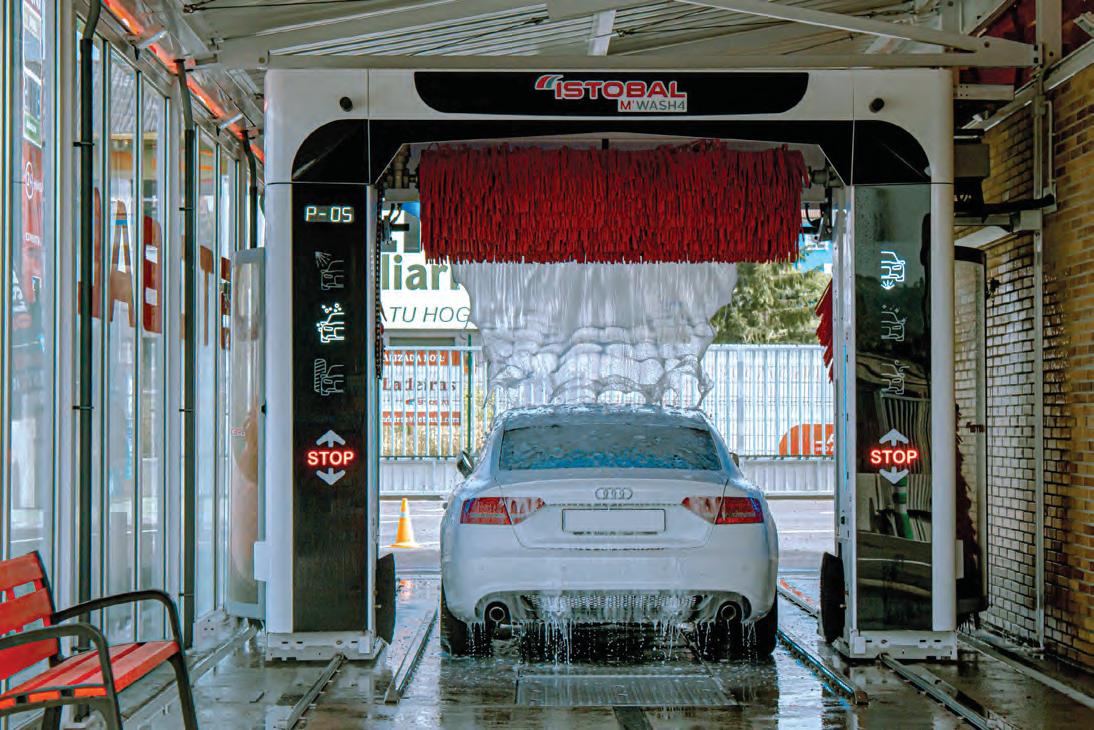

(21 September 2022) - ISTOBAL is committed to innovation for lower water consumption in the vehicle wash in the face of droughts, promoting a sustainable industry with integrated solutions that reduce water consumption, as well as chemicals and energy.
The company is a pioneer in the development of environmentally friendly technologies providing the car wash industry with solutions to cope with water scarcity by recycling, saving and decontaminating water in car wash facilities.
68 APEA tel: 0345 603 5507 www.apea.org.uk Press Releases
It is worth noting that some regions in Spain, France and the UK, among other countries, suffer from water restrictions due to extreme droughts and in some cases even have regulations affecting the car wash sector.
ISTOBAL’s complete range of water treatment equipment reduces the consumption of this resource and obtains water of the highest quality for impeccable results in vehicle cleaning. In addition, the inclusion of recycling systems in car wash installations makes it possible for car washes to operate during periods of water restrictions due to droughts.
For ISTOBAL, the consumption and quality of the vehicle wash also depends to a large extent on the quality of the water used in the installation. For this reason, the group has developed various water treatment systems, such as its pioneering biological recycler with an ultrafiltration system capable of recycling up to 100% of the water from exterior vehicle washing. This innovative, state-of-theart recycling system achieves maximum water quality for subsequent reuse in all washing phases, including osmosis in the final finish and a saving of up to 2 million litres of water per year in each washing bridge.
All ISTOBAL’s efforts in product development are focused on respect for the environment, prioritising the final quality of the wash, the user experience and the profitability of the operation. Through its equipment, the company enables efficient consumption of resources, maximum reduction of water, energy and chemical consumption without affecting the final cleaning
result and prioritising the safety of end users and operators. Through its R&D&I department, the group is constantly introducing innovations to save water in its vehicle washing equipment. In this way, its latest-generation rollovers reduce water use by 40% compared to previous models, thanks to new brush materials that absorb less water, as well as better redistribution of the water circulation circuit, among other technologies.
In reference to jet wash solutions, ISTOBAL has reduced water consumption by 33%, as well as 75% in chemicals and up to 32% in energy consumption in its latest generation equipment. As part of its commitment to the environment, the company also has a hydrocarbon separator to reduce by 94% the presence of this chemical compound in the water resulting from the washing process, as one litre of hydrocarbons contaminates 1,000 m3 of water.
In addition, the connectivity of its equipment with Smartwash by ISTOBAL allows telematic control to remotely check and adjust consumption and maintenance of the installation.
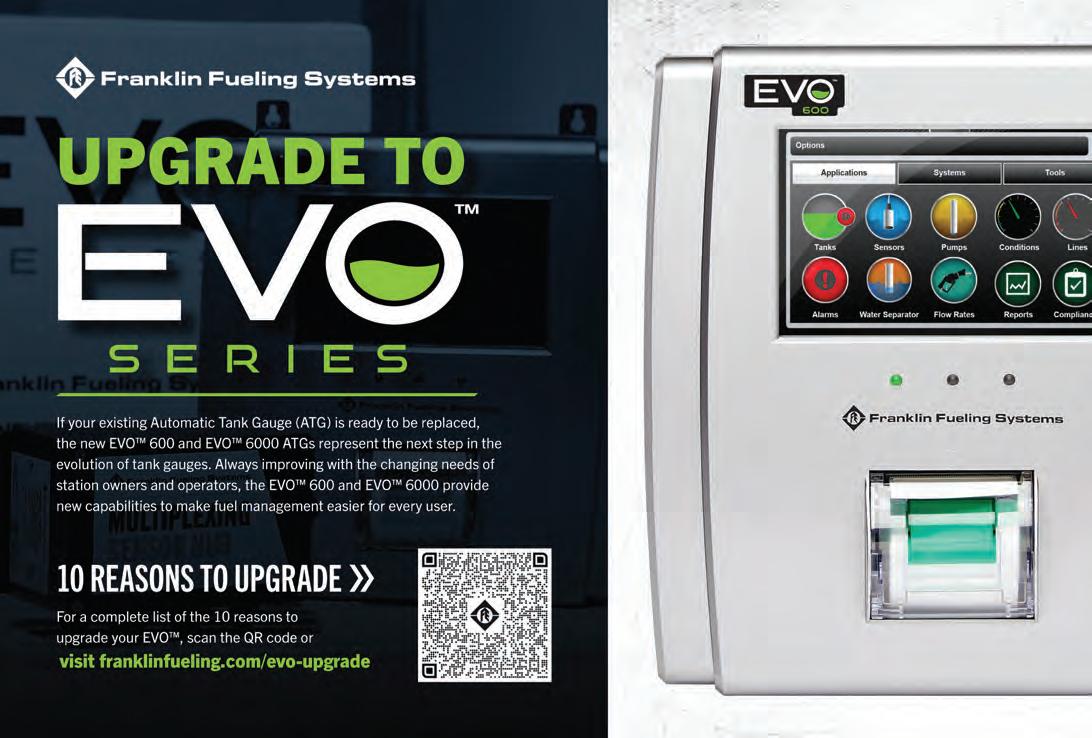
Likewise, its ISTOBAL esens® line of chemical products are sustainable and have outstanding environmental certifications such as the Nordic Swan label and the Ecolabel, reduce the generation of plastic waste in packaging by 90% in its Xtract line of super concentrates and contribute to reducing CO2 emissions by up to 80%.
In view of the extreme severity of the drought in many countries
69 APEA tel:
5507 www.apea.org.uk Press Releases
0345 603
around the world, ISTOBAL reminds that water is a limited resource and is fundamental in the car wash and car care business. In its opinion, it can be responsible for the viability or otherwise of car wash businesses. Therefore, it urges responsible water use in car wash facilities by adopting measures that promote sustainability.
It has also underlined that not using water recycling systems on bridges and car washes can result in annual water wastage similar to leaving a tap running all day for more than three years.
Similarly, it states that cleaning the car in a sustainable car wash facility incorporating water treatment solutions generates less water consumption compared to a manual car wash with a private hose and avoids contamination of the water resulting from the washing process.
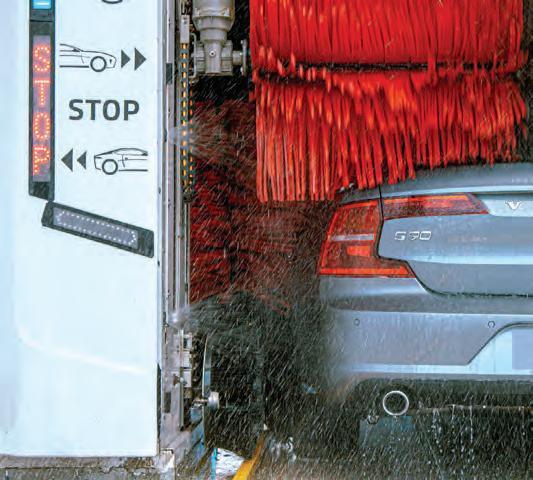
In this regard, the contribution of operators of washing facilities and users is crucial in being environmentally responsible and combating drought.
Video: https://youtu.be/TNb245RaRDQ

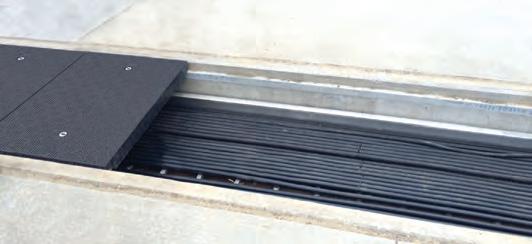
Data centres specify KPS High Density Polyethylene (HDPE) piping & Fibrelite composite access covers to safeguard 24/7 365 operation
In an increasingly connected digital world, data centres are critical. With 3.6 million m2 in use by data centres in Europe alone and over 70 projects (851,000 m2) in progress in 12 European countries (ResearchAndMarkets), their growth continues to accelerate to meet the needs of cloud technology, AI, 5G, Internet of Things (IoT) data storage and the shift to hybrid working. This trend is mirrored globally, with investment in data centres projected to rise from $244.74 billion in 2019 to $432.14 billion in 2025 (ResearchAndMarkets).
Safeguarding Service. Eliminating Downtime. To ensure 24/7 365 operation and minimise the risk of downtime, data centres are constructed with the highest performance, highest quality building materials available, with every part of a facility meticulously planned. Infrastructure is an integral part, normally comprising of an Uninterruptible Power Supply (UPS), power distribution, cooling systems, fire systems and security systems, many of which have redundancies (2N+1 for Tier 4 facilities, guaranteeing 99.995% uptime) including back-up power generators to prevent interruption of service. Two contemporary products being adopted by leading data centres across the globe are Fibrelite’s lightweight FRP composite trench access covers (to protect and provide easy access to underground infrastructure) and KPS’ HDPE piping (to fuel backup generators).
High-Performance Backup Generator Fuelling Systems. A reliable fuel supply is key to backup generators’ smooth operation, connecting generators to fuel storage tanks and tanks to fill points. Nicolas Lefebvre, Generator Activity Manager at Flipo-Richir (France) commented “We regularly install generators to back up data centres in the event of a power cut. We have been using KPS double wall piping exclusively for more than 10 years to connect generators to underground storage tanks. KPS piping is easy to install, mainly thanks to the assembly by thermo-welding, and the range of products is very complete, which makes it possible to create any type of network, even complex.”
Corrosion-resistant, safe and easy to install (due to compact electrofusion fittings) the KPS HDPE piping system helps fuel flow safely, even providing protection against ground movements (using the elasticity and flexibility of HDPE). Safety can be enhanced further by installing KPS’ conductive piping option, ensuring continuous conductivity between the tank and the end of the line
70 APEA tel: 0345 603 5507
Press Releases
www.apea.org.uk
Fibrelite’s FRP composite channel access covers installed at major US data centre
KPS’ HDPE piping installed at major Parisian data centre
(which can be earthed). This helps to prevent the accumulation of electric charges that could otherwise be created by the friction of the fuel velocity and the plastic inner surface. KPS’ 4” (110mm) piping also delivers a 933 litre/minute flow rate, making it ideal for fill lines (KPS piping is available in 1” to 4” diameters in single or double wall). KPS will also soon be releasing a 6” double wall product range.
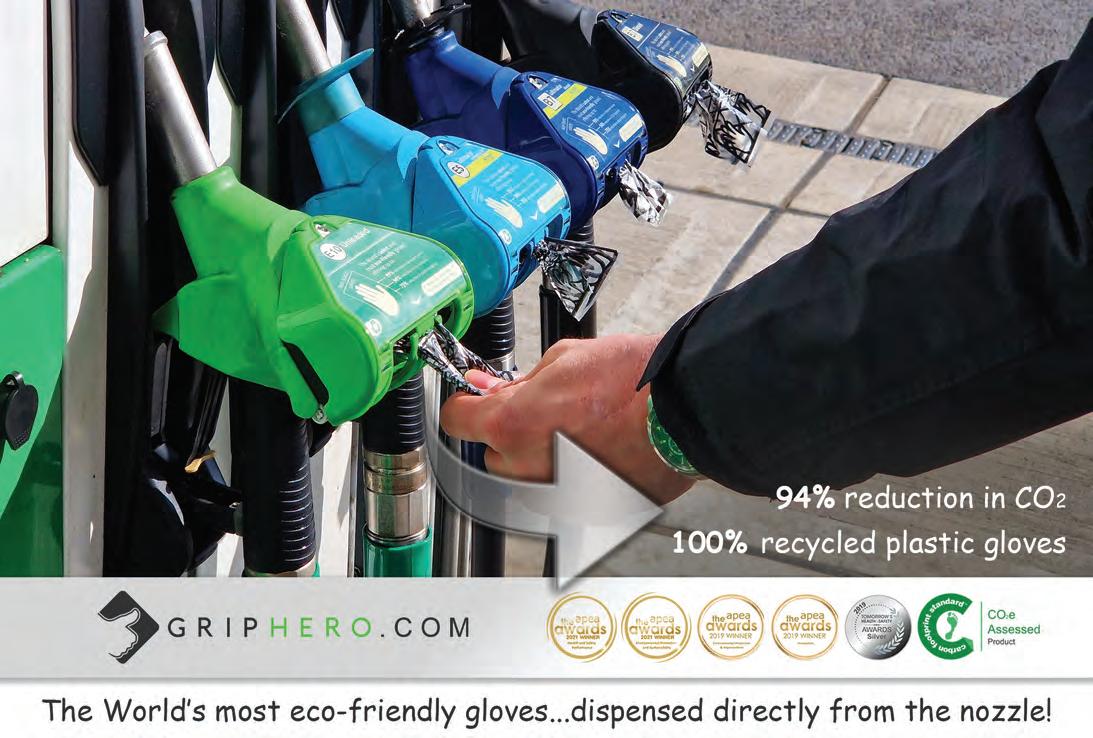
Simple, Safe Underground Infrastructure Access. Another contemporary product line seeing widespread global adoption by architects, design engineers and specifiers to enable easy access to underground infrastructure is Fibrelite’s modular FRP composite trench/channel access covers. These are now often specified at the outset of new build data centre projects. Bespoke, modular and lightweight, Fibrelite covers are designed to be removed quickly and easily by two people using Fibrelite’s ergonomically designed lifting handles, even where heavier load ratings are required (e.g., channels running between buildings with vehicle traffic). Due to their unique custom engineering capabilities, Fibrelite can manufacture access covers at all load ratings up to F900/90 tonne (A15, B125, D400, E600 and F900). Traditionally, for the past 100 years, access covers have been made from concrete or metal which are 3-4 times the weight of Fibrelite covers, often requiring specialised lifting equipment to remove and replace. Fibrelite covers are also impervious to corrosion and have a unique anti-slip walking surface.

71 APEA tel: 0345 603 5507 www.apea.org.uk Press Releases
KPS piping installed at Chinese data centre for one of the world’s leading tech brands
In many instances where Fibrelite access covers are adopted, companies choose to specify a bespoke option, custom-manufactured to specific requirements including size, colour, load rating, fittings (e.g. securing systems) and moulded identification of below ground services. Fibrelite has also undertaken projects where they have designed and manufactured retrofit replacements for previously installed heavy concrete or metal access covers.
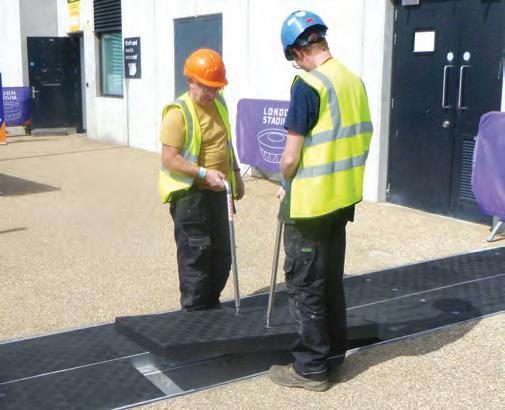
“We
proud to be involved in data centre projects across the globe,
Fibrelite trench access covers facilitating easy safe access to below ground infrastructure, and our KPS piping providing a reliable fuel supply to backup generators. In many cases, we actually custom design and engineer bespoke products to fit each facility’s requirements.”
Jo Stott, Marketing Director, OPW Global (a Dover company and parent company of Fibrelite and KPS) www.KPSpiping.com/datacentres www.fibrelite.com/datacentre

Consistent LNG refueling. Unlimited storage. The benefits of the LIQAL BTU Boil-Off Gas Treatment UNIT (BTU)
As we move forward, Liquified Natural Gas (LNG) will become one of the mainstream fuels for heavy-duty transport – even more so for the fully sustainable variant bio-LNG – within the fuel and convenience retail industry. It’s an essential part of the decarbonized energy mix, next to hydrogen and electricity, for the transport sector. So, why aren’t there more LNG stations, and why aren’t new LNG powered vehicles being registered by fleet owners?
Soaring Gas Prices and Economic Uncertainty. These are two of the main concerns for fuel retail businesses and fleet owners across Europe. As such, there is a reluctance to invest in new clean fuels until the market settles down and prices start to reduce. What many don’t realise is the energy mix in the fuel retail and convenience industry is only going to change and grow as the world tries to balance the evergrowing global demand for more energy. Businesses need to make the right investments in clean fuel now so they can effectively take on new challenges this energy diversification brings.
The LIQAL LNG dispenser and LIQAL BTU Boiloff Gas Treatment Unit are sound investments that can help take the pressure off a business (quite literally). With the LIQAL LNG dispenser offering an intuitive fueling experience for truck drivers, with outstanding uptime, and the LIQAL BTU system providing advanced liquefaction technology to ensure reliable performance, business owners can upgrade their fuel sites, against low total cost of ownership (TCO), while investing in the latest clean fuel technology. If you’re concerned with high OPEX costs and
high liquid nitrogen (LIN) logistic costs as well as the management, logistics and operations burden – you don’t have to be. With the unique patented BTU reliquefaction system, the pressure is off.
What is Boil-Off Gas?
Boil-Off Gas (BOG) is the continuously evaporated LNG due to heat entering the cryogenic storage vessel, which causes the pressure inside the LNG storage tank to rise. Venting of BOG into the atmosphere must be avoided at all costs:
•Methane is a powerful green-house gas
•The BOG contains costly molecules that are simply vented away and will result in LNG stock loss
72 APEA tel: 0345 603 5507
Press Releases
www.apea.org.uk
are
with our
Lightweight Fibrelite FRP channel access covers designed for safe manual removal and replacement
•As part of the (Europe) Green Deal, venting of methane into atmosphere will become illegal
Dover Fueling Solutions (DFS) provide a patented solution with the LIQAL BTU system – a unique system that converts BOG back into liquid form.
What are the Benefits of Investing in the LIQAL BTU System?
No Time Limits: Guaranteeing a perfectly conditioned environment for the storage of LNG, the proven LIQAL BTU Boil-off Gas Treatment Unit can store LNG fuel safely for an unlimited amount of time. This modular unit removes the need for any active management of storage pressure, eliminating the need for LIN consumption and logistics, while maximizing the LNG storage capacity for optimal delivery of LNG fuel to your station.
Environmentally Friendly: The LIQAL BTU system protects the environment by preventing the venting of BOG into the atmosphere. It does this in a cost-effective way that does not impact LNG deliveries, nor demands active management, making life simpler. As a fully standalone unit with its own advanced process control system, it can effectively control the storage of LNG across new and existing LNG fueling stations.
Low TCO: The LIQAL BTU system is designed to deliver extreme reliability over its long lifetime and does not require any consumable like LIN. Its internal components have been built to last, are field-proven and require fewer maintenance interventions in demanding use and high-throughput applications compared with
other liquefaction systems on the market, resulting in a low TCO. Simply put, the LIQAL BTU system is worth the investment.
Additional benefits include:
•Allows for minimal civil works and onsite constructive time, with the possibility to be relocated
•Plug & Play modular design. This system can work with any LNG storage tank that has a liquid and vapour connection
•Durable quality for reliable operation
•Possibility to provide cold LNG to trucks
•BTU Remote Performance Management is available to maximize re-liquefaction
The LIQAL BTU system brings care-free, consistent LNG fueling to motorists and provides fuel business owners with a zeromaintenance storage solution for an unlimited amount of time.
Although there’s a lot of uncertainty in the world right now, one thing you can be sure of is that the LIQAL BTU system is a costeffective investment that can help future proof forecourts, enabling them to effectively and efficiently adapt to the changing energy requirements within the market. The journey to a cleaner, greener future couldn’t be simpler with LIQAL LNG and BTU solutions from DFS.

73 APEA tel:
5507 www.apea.org.uk Press Releases
0345 603
Launch of ‘one-stop-shop’ payments solution for forecourts will enable seamless customer experience for retailers
New P2PE enabled payment terminals for the forecourt industry from Suresite and TSG UK offers complete peace of mind.

London, UK, September 6, 2022: Thanks to a strategic partnership between forecourt retail specialist Suresite Group and leading fuel and retail service provider TSG UK, a new point-to-point encryption (P2PE) payment solution has been developed specifically for the forecourt industry.
The Orion device is backed by TSG’s experienced team of service engineers and field technicians, and the fact that Suresite answers 97% of customer service calls in 15 seconds from their UK call centre – ensuring that if problems arise, they are resolved swiftly.
Steve Watts, sales director at TSG UK commented: “TSG UK is delighted to partner with Suresite to provide after sales support for this highly secure payment solution. Suresite’s vast experience in payment processing, backed up by unparalleled customer service, ensures total satisfaction for operators across the UK.”
The innovative solution - named Orion - offers a distinct point of difference that will pave the way for improved customer experience for retailers: it is a one-stop-shop.
Crucially for retailers, this means that hardware, installation, software and customer support are all housed together from one provider. Addressing a longstanding issue among forecourt retailers, those adopting Suresite’s new solution will benefit from having just one point of contact no matter where problems in the payment chain may arise.
Nick Horne, sales and commercial director at Suresite, explains: “Orion’s launch signifies the first time Suresite has been able to offer a much needed one-stop-shop for the fuel and convenience sector. Prior to this, retailers often had to ring around numerous providers in the event that a payment problem occurred, creating customer service issues.”
The new P2PE terminal, which accepts all major bank and fuel cards, is also PCI-approved, offering a safer choice for fuel forecourts. This ensures cardholder data is captured and encrypted, which both reassures consumers that their sensitive data is safe and secure, and significantly reduces the paperwork and potential costs associated with PCI compliance for forecourt retailers.
“With 15 years’ experience in payments processing, we’re excited to be able to enhance our card payments offering with the Orion device – enabling retailers to future proof their business, and offering complete peace of mind in terms of payment security,” adds Nick.
Alongside being highly secure, all of Suresite’s card payment terminals are also continually monitored to proactively check functionality, highlighting potential issues and triggering online resolution – sometimes before an issue has even been noticed at the site.
Branches
Scottish
The Scottish Branch held a meeting in the Glynhill Hotel near Glasgow Airport on 9th September. Ten members attended.
The guest speakers were Fraser Stevenson, Vice Chairman of the British Fireworks Association, Chris Mason, fireworks display organiser and Scott Boyd of Scottish Government Building Safer Communities Department.
The topic for presentations and discussion was the new Fireworks and Pyrotechnic Articles (Safety) Act 2022. The Act comes into force in stages and aspects of the effect of the act on Trading
Standards Departments and the Fireworks industry were discussed by Scott Boyd, Fraser Stevenson and Chris Mason.
The explosives and fireworks legislation leading up to the new Act was outlined in a presentation by Ian Hillier, the Branch Representative.
At the end of the presentations all of those attending took part in a discussion on the possible new Regulations on banning all round sales of fireworks and the promotion of fireworks exclusion zones. CPD certificates were awarded to all members.
74 APEA
Press Releases/Branches
tel: 0345 603 5507 www.apea.org.uk
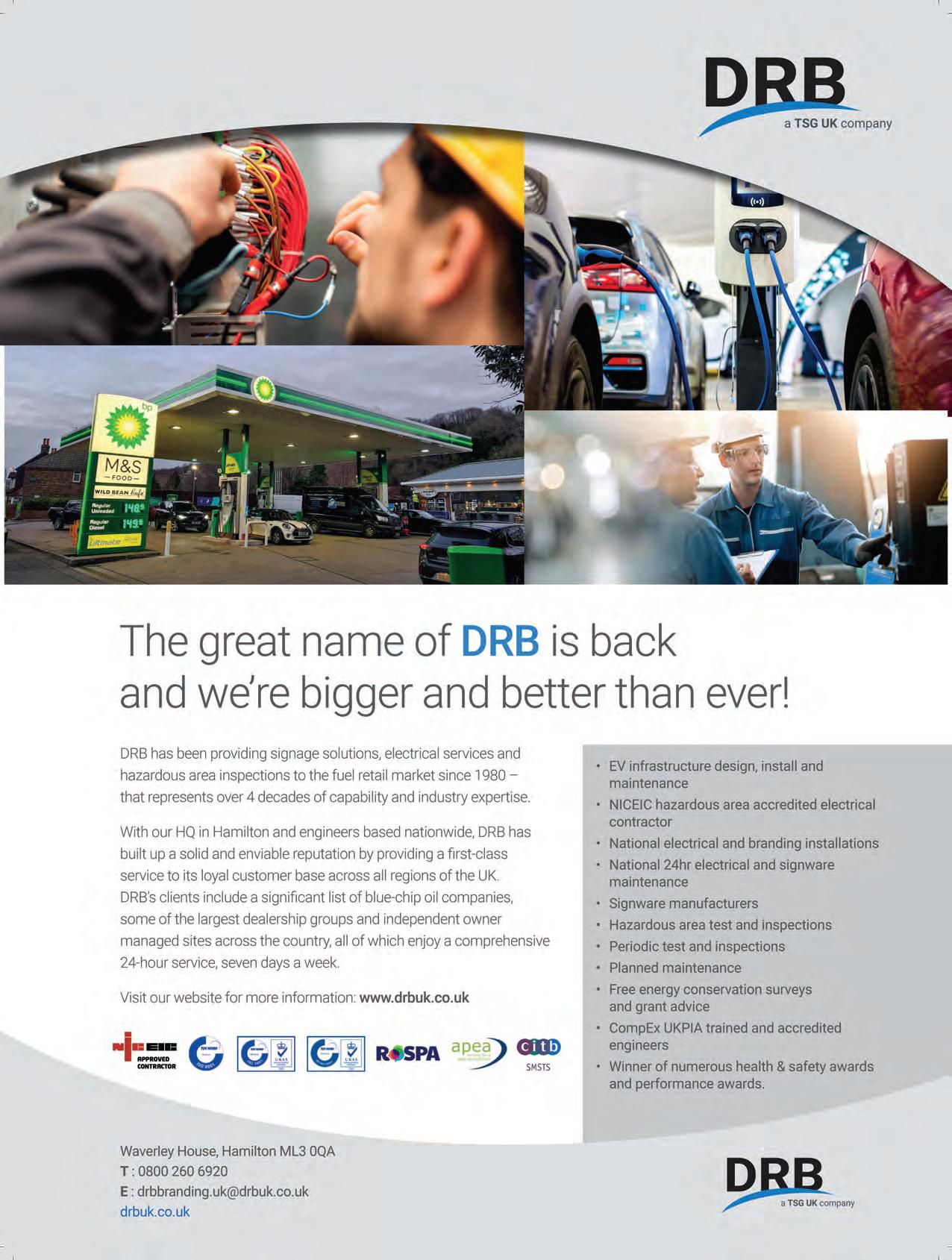
Southern
The Southern Branch recently held a meeting at Haynes Motoring Museum at Sparkford in Somerset.
Since Covid, it has become very difficult to encourage members to attend physical meetings. We hoped that inviting a range of interesting and relevant speakers
Ltd
and using a great venue with the added interest of the museum would encourage people to join us for the meeting.
We were therefore delighted to welcome a good number of members from the Southern Branch and a few guests from other Branches to hear some excellent presentations.
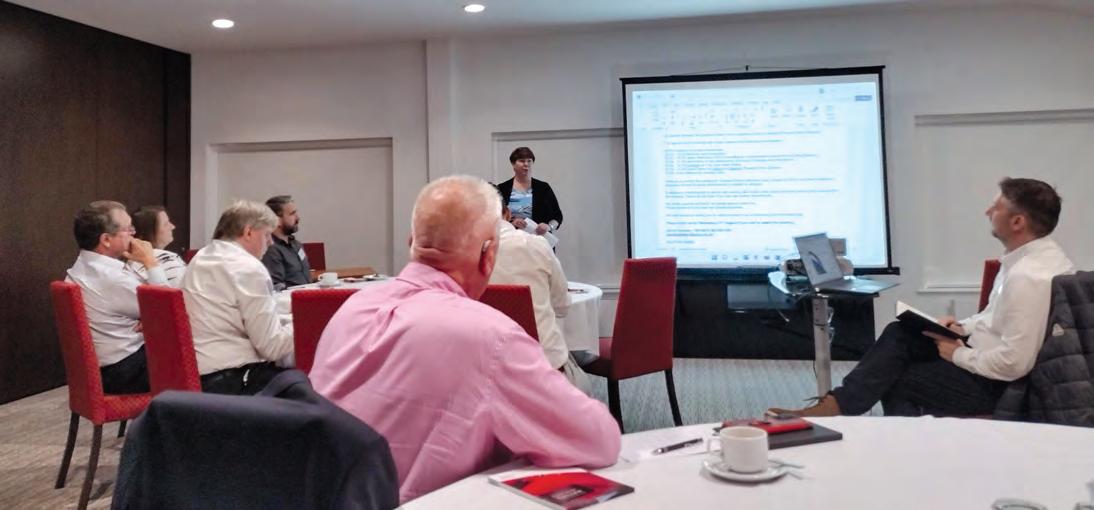
After our Chairman, Doreen Pooley, welcomed members, James Mahoney from SLR Consulting spoke on Contaminated Land and Petrol Filling Stations. James has huge experience in dealing with petrol stations and contamination issues and was able to explain how they deal with the discovery, investigation and remediation of contamination. More information can be found at https://www.slrconsulting.com/en.
Our next speaker was John Rome of Forecourt Consultancy Limited speaking on the maintenance
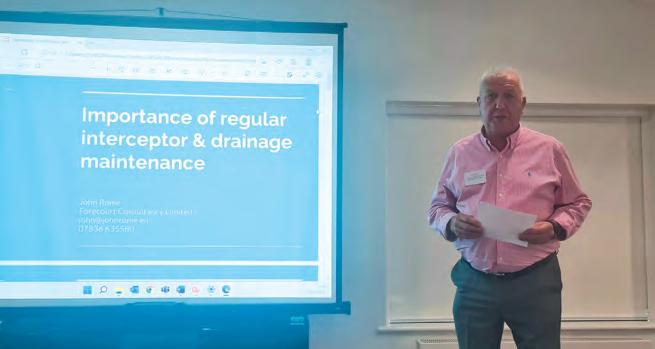

76 APEA tel: 0345 603 5507 www.apea.org.uk Branches
John Rome of Forecourt Consultancy
Jack Aplin of Eurotank Service Group Ltd
of forecourt drainage and interceptors. John gave us very valuable information and advice on how to ensure that interceptor systems are operating properly and being maintained to an adequate standard. Members present had plenty of questions for John as it seems this is a subject causing some concern at the current time.
After a short break Jack Aplin of Eurotank gave a fascinating presentation on the True Zero meter testing system. Most of those present were unaware of this innovative system which uses a closed loop piston meter to reduce wetstock shrinkage from vapour loss during meter calibration. More information can be found at https://www.eurotank.co.uk/calibration.
Our final session of the morning came from David Palmer of Geberit on Mapress, their Pipework Press Systems. David
North West
The North West APEA Committee now consists of John Keough (Chairman), Andy Myers (Branch Secretary), and Neil Simms (Branch Representative).
The Branch is looking to restart its local meetings following the cessation during the Covid pandemic and this begins with an online meeting on the 3rd November 2022. This is with a view to beginning full on-site meetings in the first half of 2023. The Branch
demonstrated the system in use and explained that this is a system designed for use on above ground fuel installations and uses specialist fittings and tools to ensure reliable pipework connections every time.
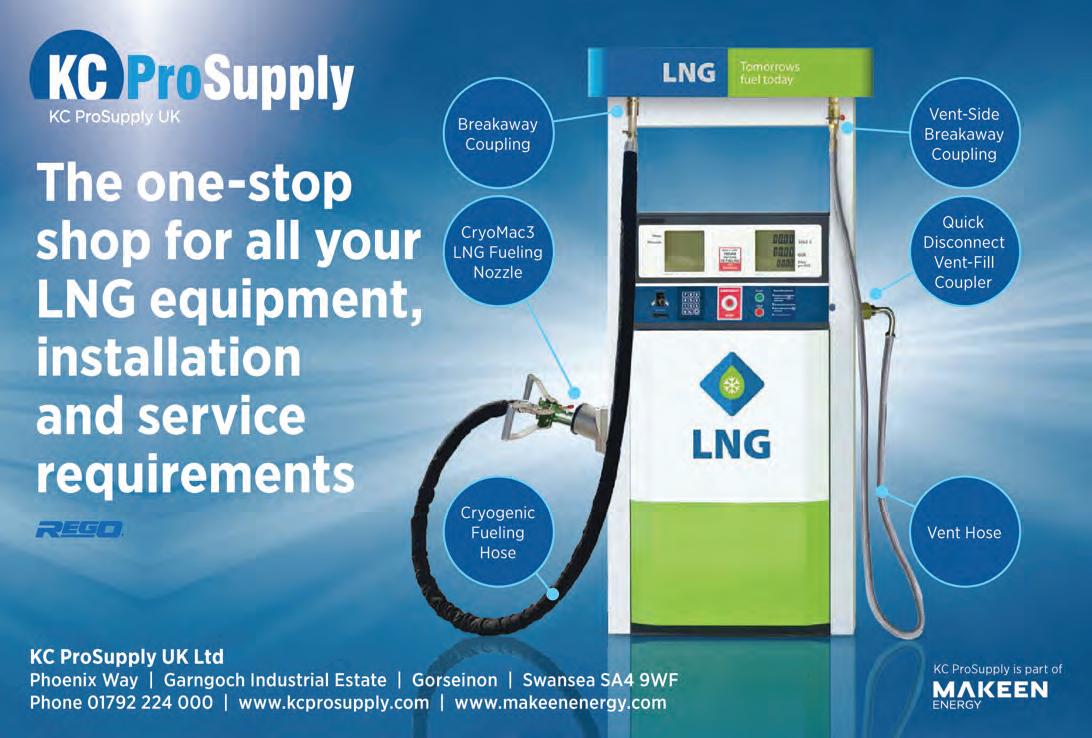
More information is available at https://www.geberit.co.uk/landingpages/geberit-360.html.
The morning meeting was followed by an excellent lunch and entry to the museum for members. The Branch would like to thank those who gave their time to make presentations and those who attended and made this an excellent meeting.
David Sommers Branch Secretary
is currently seeking a Treasurer and welcomes members who may be interested in this position.
Please contact Andy Myers or Neil Simms if interested at nsimms2020@outlook.com or andy.myers@uk.arteliagroup.com.
Neil Simms Branch Representative
APEA tel: 0345 603 5507 www.apea.org.uk
77
Branches
Training
Training course dates 2023
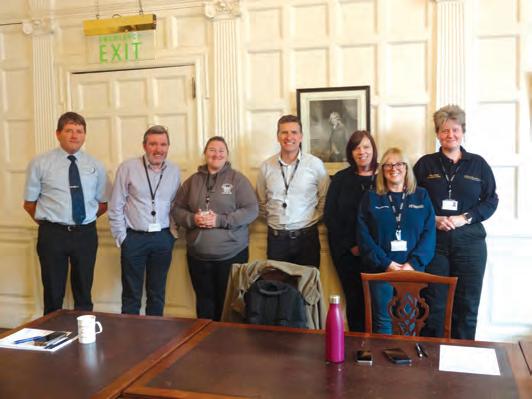
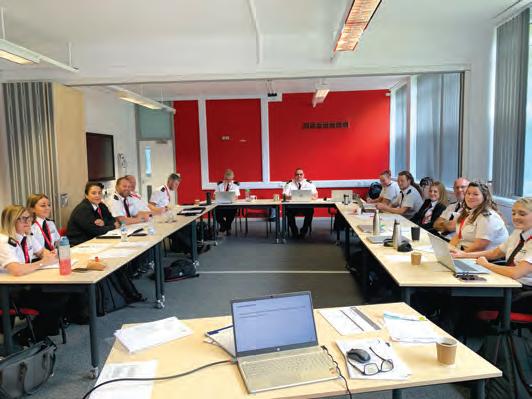
Please contact the APEA office for a quotation for a bespoke course we can run at your offices, for any of the courses listed below, at admin@apea.org.uk, with an approximate number of delegates and preferred dates.
3 Day Combined Petrol Filling Stations –Construction, Audit and Inspection Course
27 - 29 March 2023Manchester Airport 12 - 14 June 2023Solihull 4 - 6 September 2023Stansted Airport
2 day Electrical Installations - An Awareness 2023 dates to be confirmed
Explosives and Fireworks 5 October 2023Stansted Airport
Online Training courses go to https://apea.org.uk/pages/training or https://apea.mykademy.com/
Wetstock Management
17 April 2023 Manchester Airport 11 September 2023Stansted Airport
DSEAR 19 April 2023 Manchester Airport 12 September 2023Stansted Airport
Petroleum (Consolidation) Regulations 2014 24 March 2023 Manchester Airport 7 September 2023Stansted Airport
Petrol Filling Station courses on request Vapour Recovery Installations Leak Investigation Enforcement Procedures Safe Installation and Use of LPG
78 APEA tel: 0345 603 5507 www.apea.org.uk Training
Delegates from the Explosives and Fireworks training course for South Yorkshire Fire and Rescue Service
Delegates from the 3 day combined Construction, Audit and Inspection course for Staffordshire Trading Standards
Course Fees
APEA Member Non member
3 day course with accommodation£1020.00 £1120.00
3 day, day delegate rate £810.00 £910.00
2 day course with accommodation£650.00 £750.00
2 day, day delegate rate £550.00 £650.00
1 day course £260.00 £310.00
Prices excluding VAT. More information and booking details on the “Training” page at www.apea.org.uk.
Anyone booking a training course that is not an APEA member will automatically receive complimentary “Individual” membership to the APEA for one year.
Courses will be designed around the (4th edition) Blue Book Guidance for the Design, Construction, Modification, Maintenance and Decommissioning of Filling Stations (May 2018).
A hard copy and a pdf version of the 4th Edition is available from the Publications page of the APEA website at www.apea.org.uk
The hardcopy is £75.00 to APEA Members and £150.00 to non APEA members. There is no VAT charged on the hardcopy or pdf formats. The pdf version can be purchased with a licence for individual use and cannot be shared or printed. It is strongly
recommended that attendees have access to this document during courses.
For details of this and any other training enquiry, please contact: Jane Mardell - APEA Business Manager email: admin@apea.org.uk Tel: + 44 (0) 345 603 5507 or
Thomas Daly (Training Committee Chairman) Tel: +353 876899281 email: thomasdaly@apea.org.uk

APEA tel: 0345 603 5507 www.apea.org.uk

79
Training
Delegates from the 3 day combined Construction, Audit and Inspection course for Henderson Wholesale Ltd
Delegates from the 3 day combined Construction, Audit and Inspection course at Stansted Airport in September
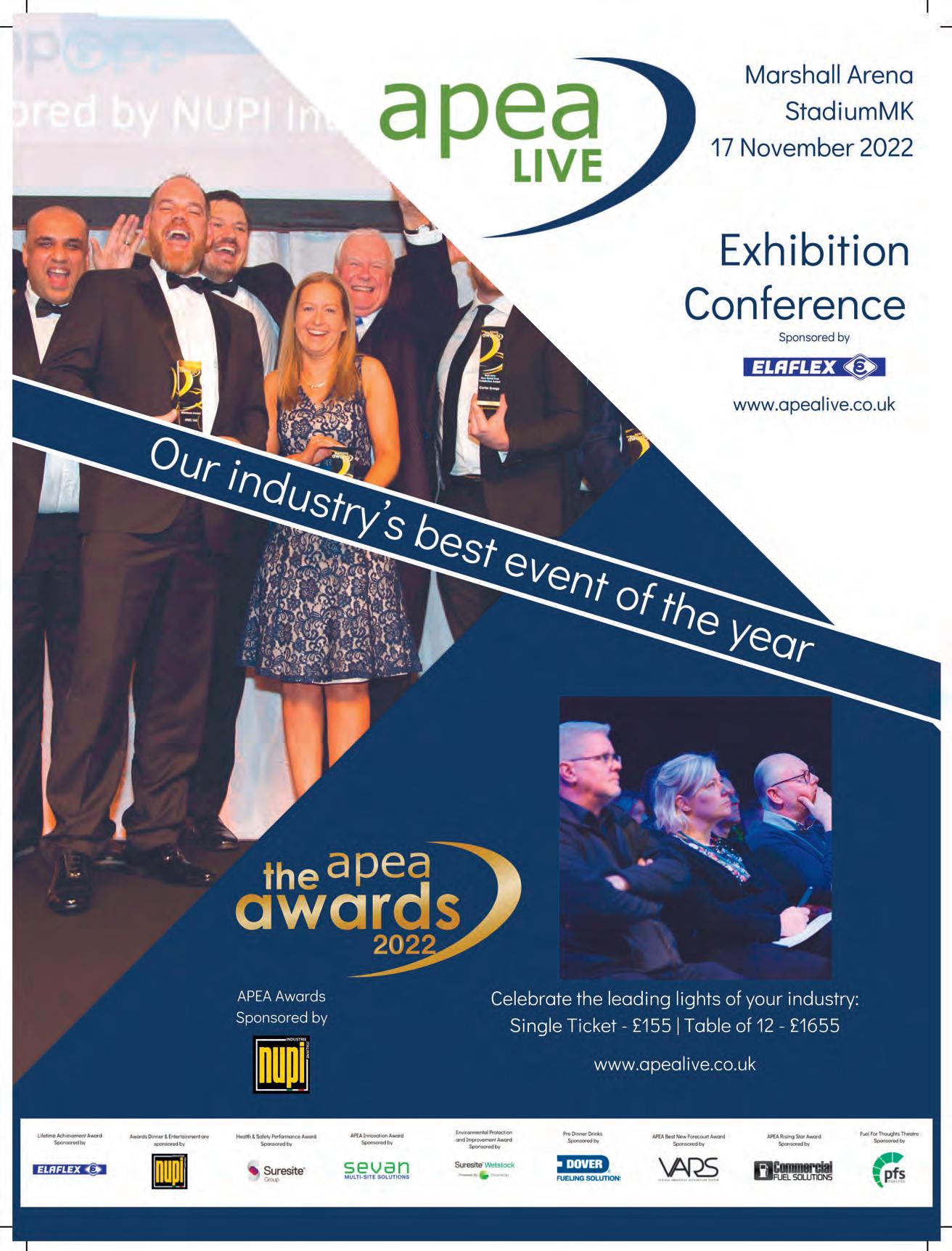
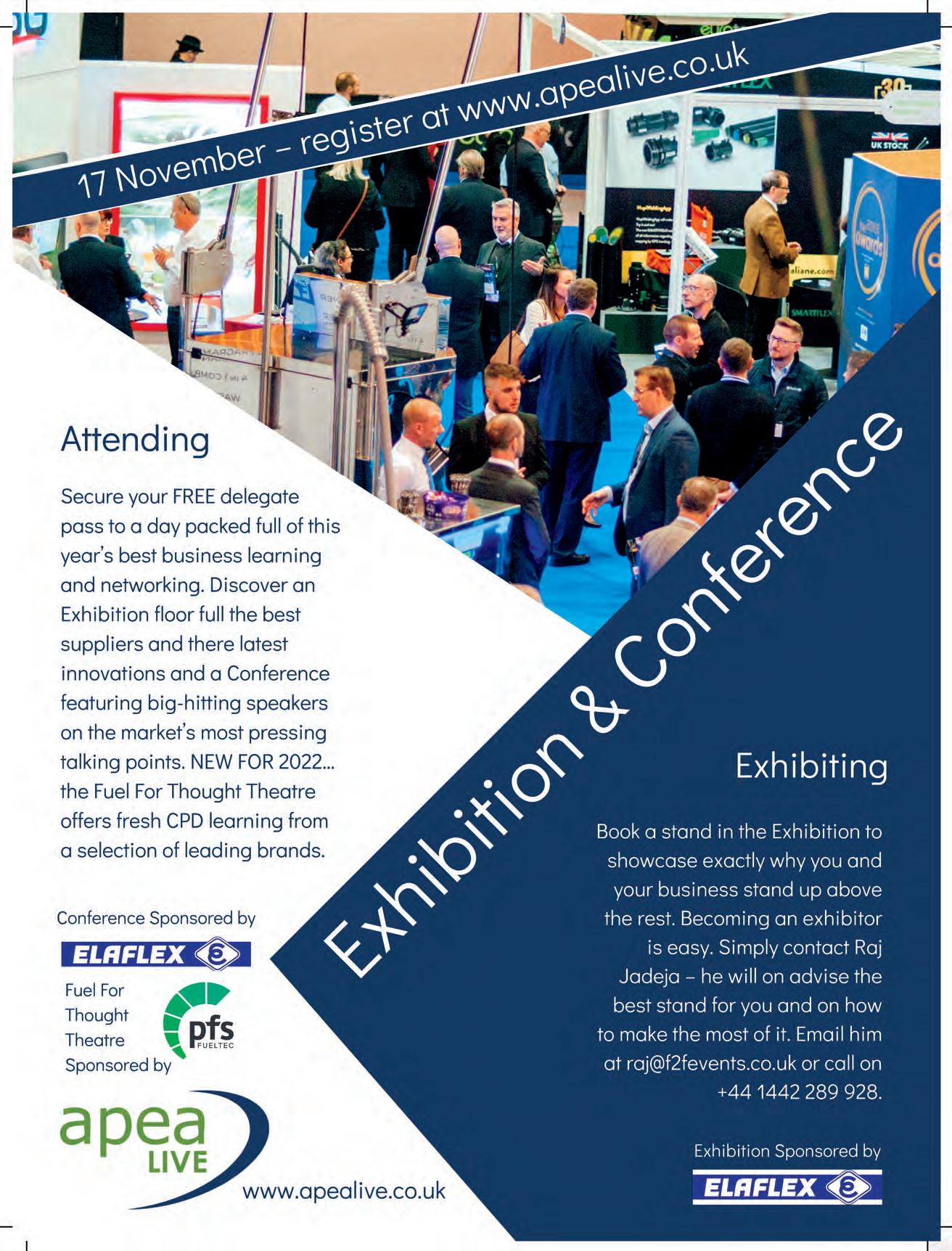


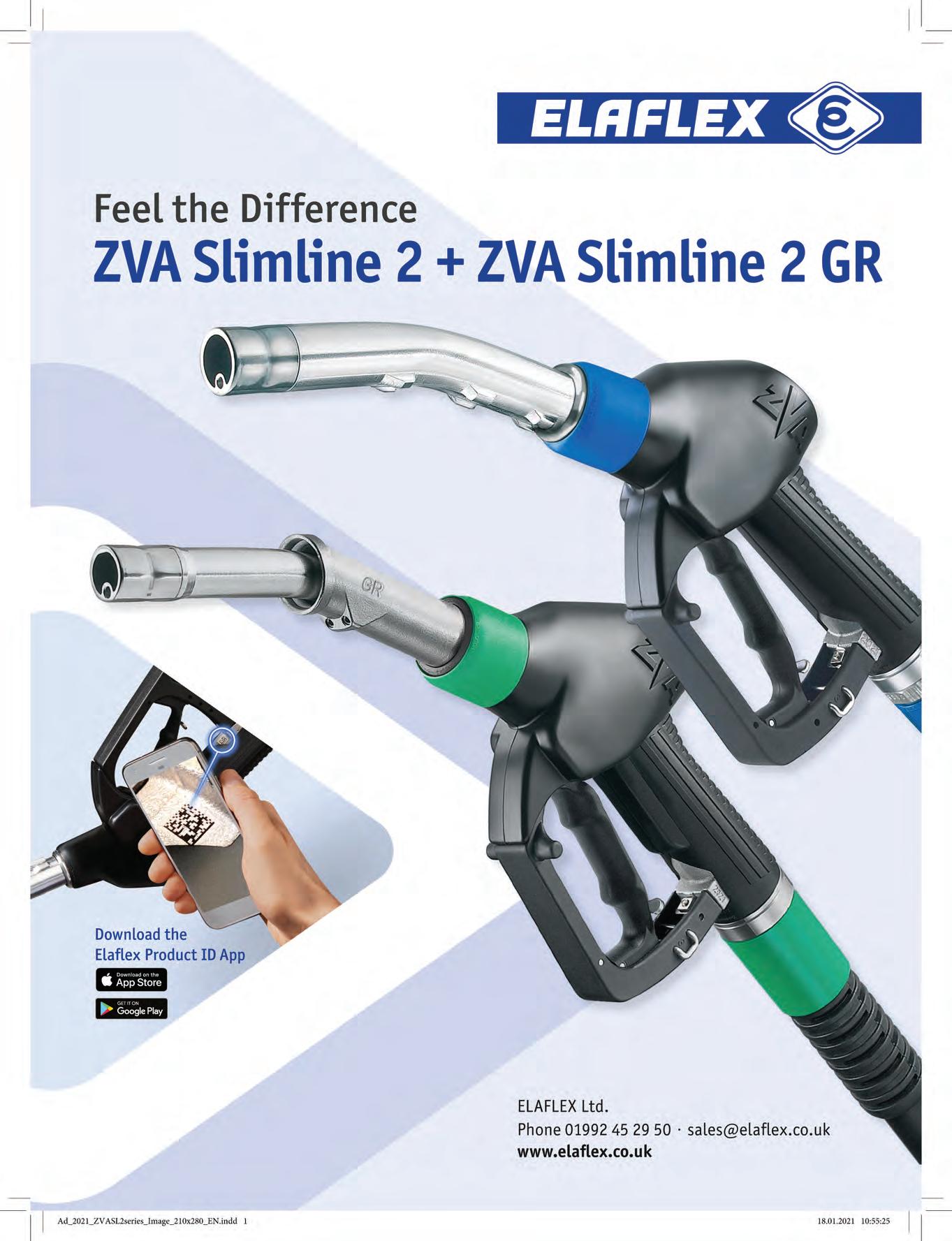


















 By Graeme Warnell, GW Environmental & Consulting Ltd
By Graeme Warnell, GW Environmental & Consulting Ltd








 By Jamie Thompson, APEA Technical Chairman
By Jamie Thompson, APEA Technical Chairman

















 By Sarah Gibb, Senior Marketing Communications Specialist, Dover Fueling Solutions
By Sarah Gibb, Senior Marketing Communications Specialist, Dover Fueling Solutions












 By Cheryl Ashton, Marketing Coordinator, TSG UK Solutions Ltd
By Cheryl Ashton, Marketing Coordinator, TSG UK Solutions Ltd











































































